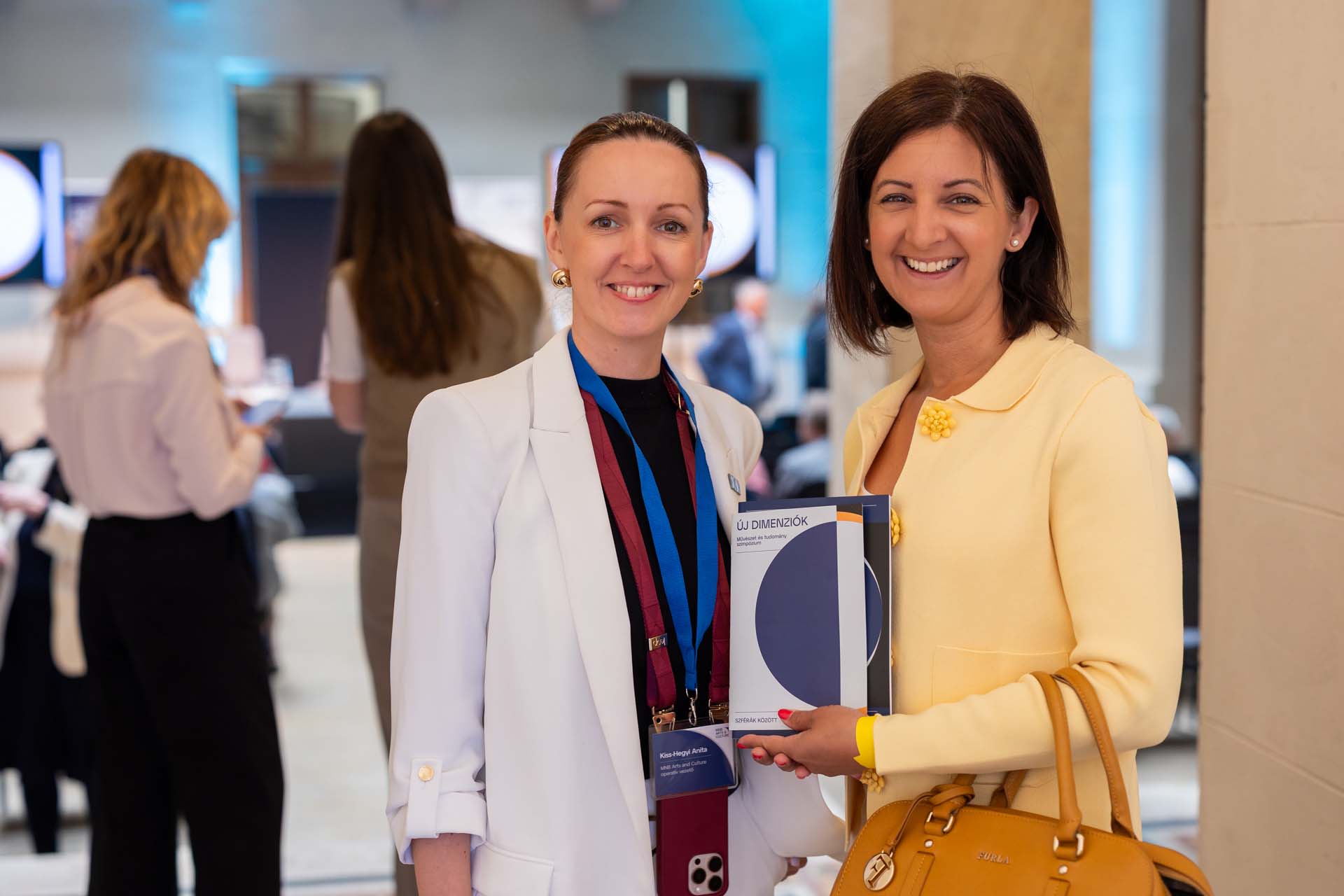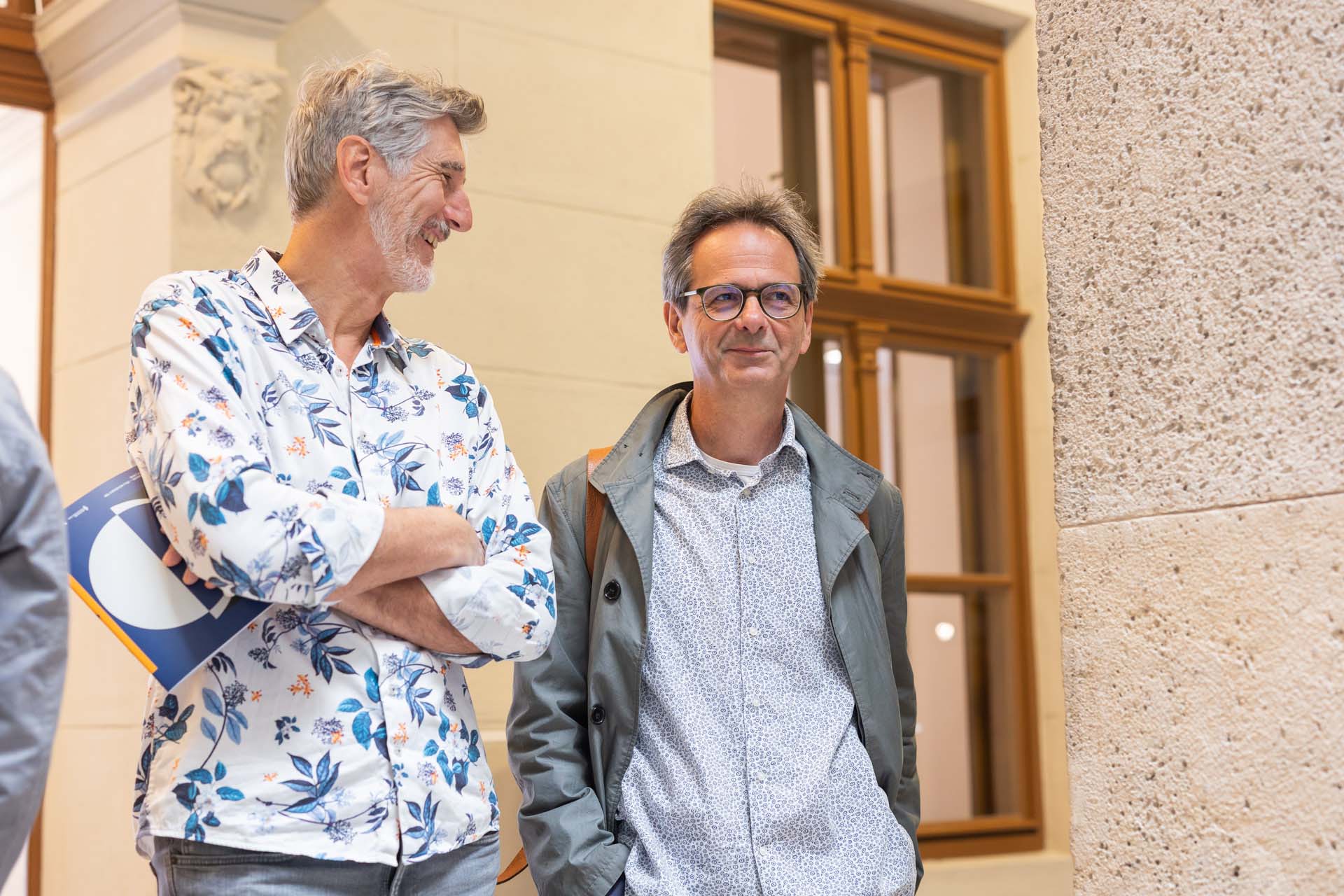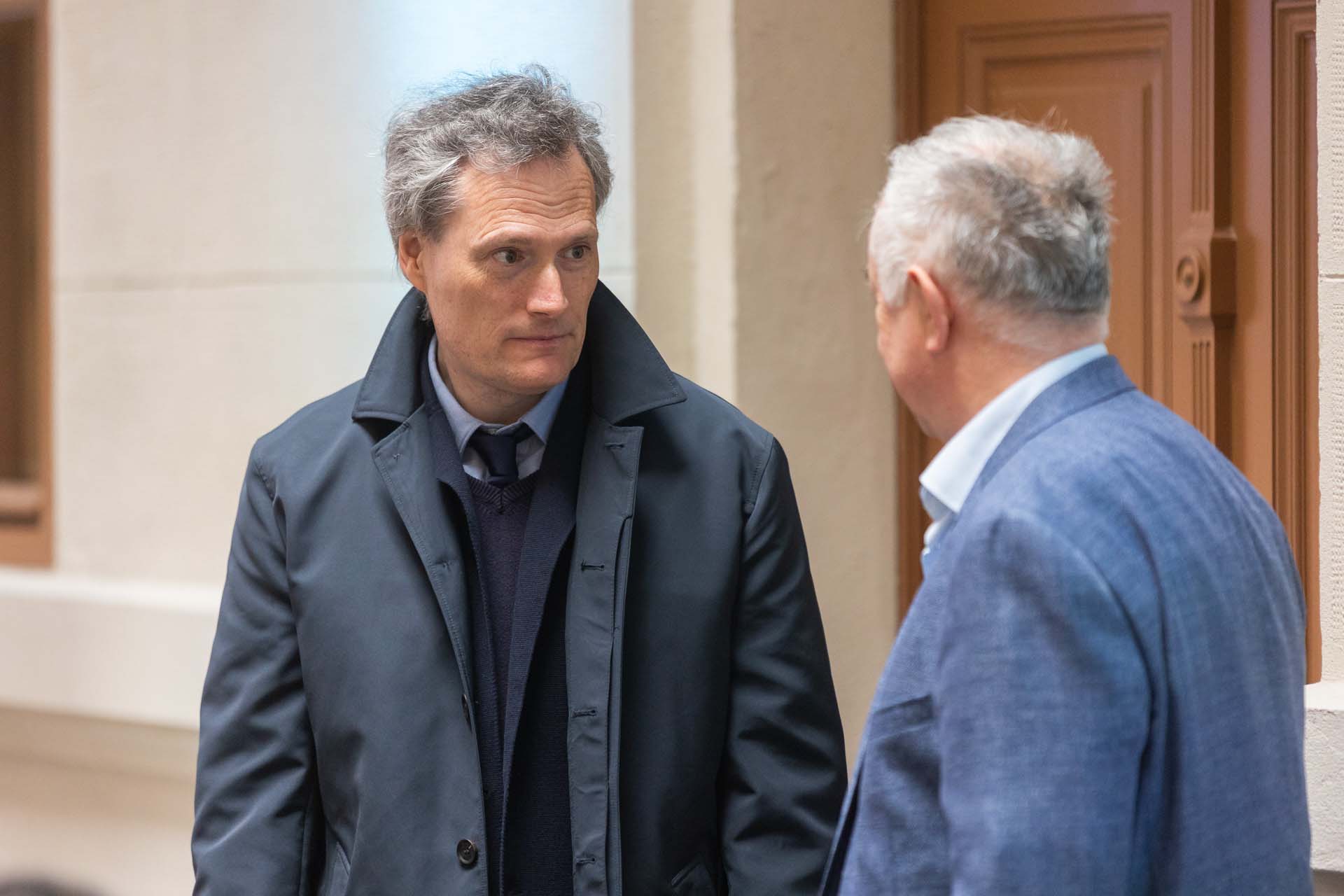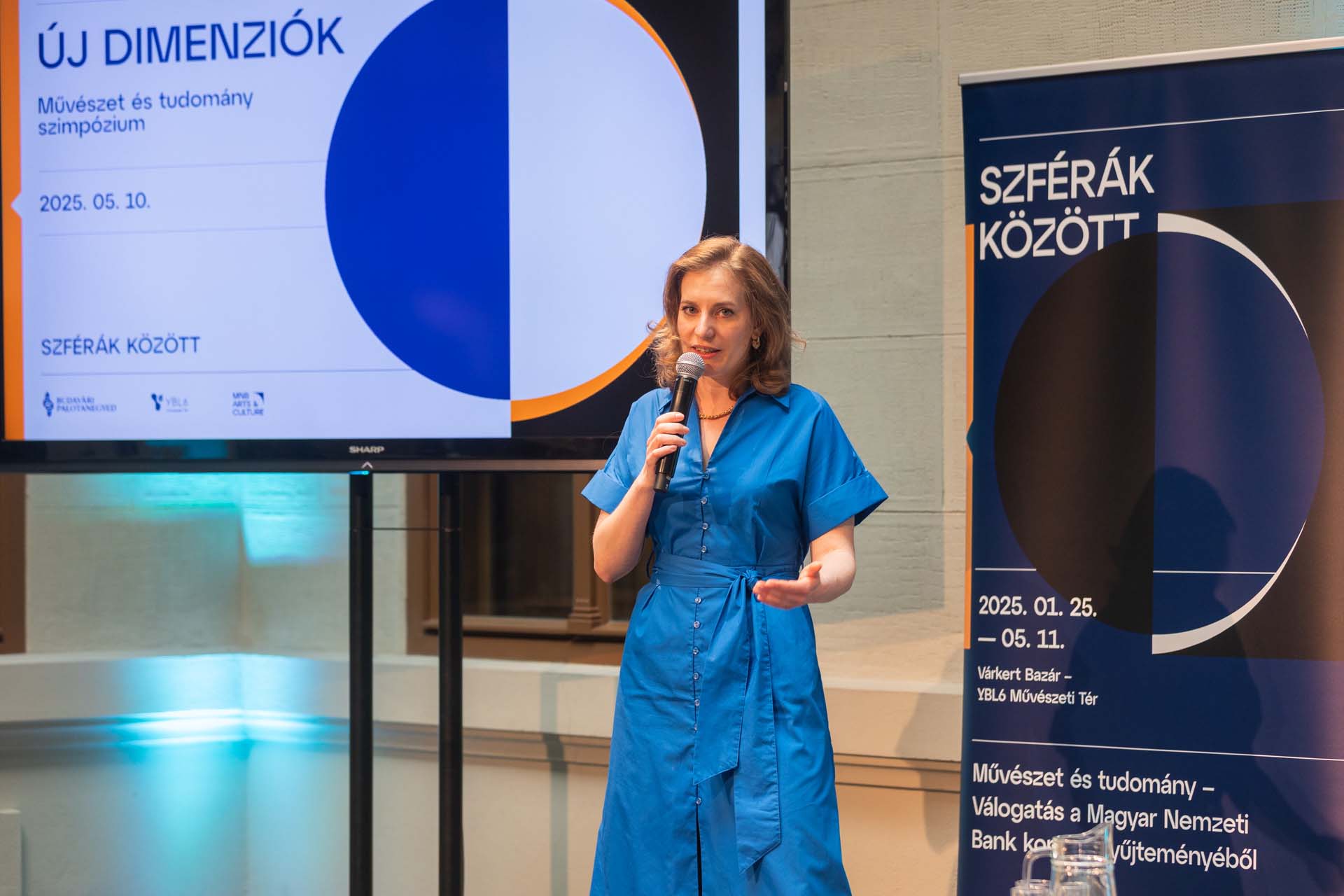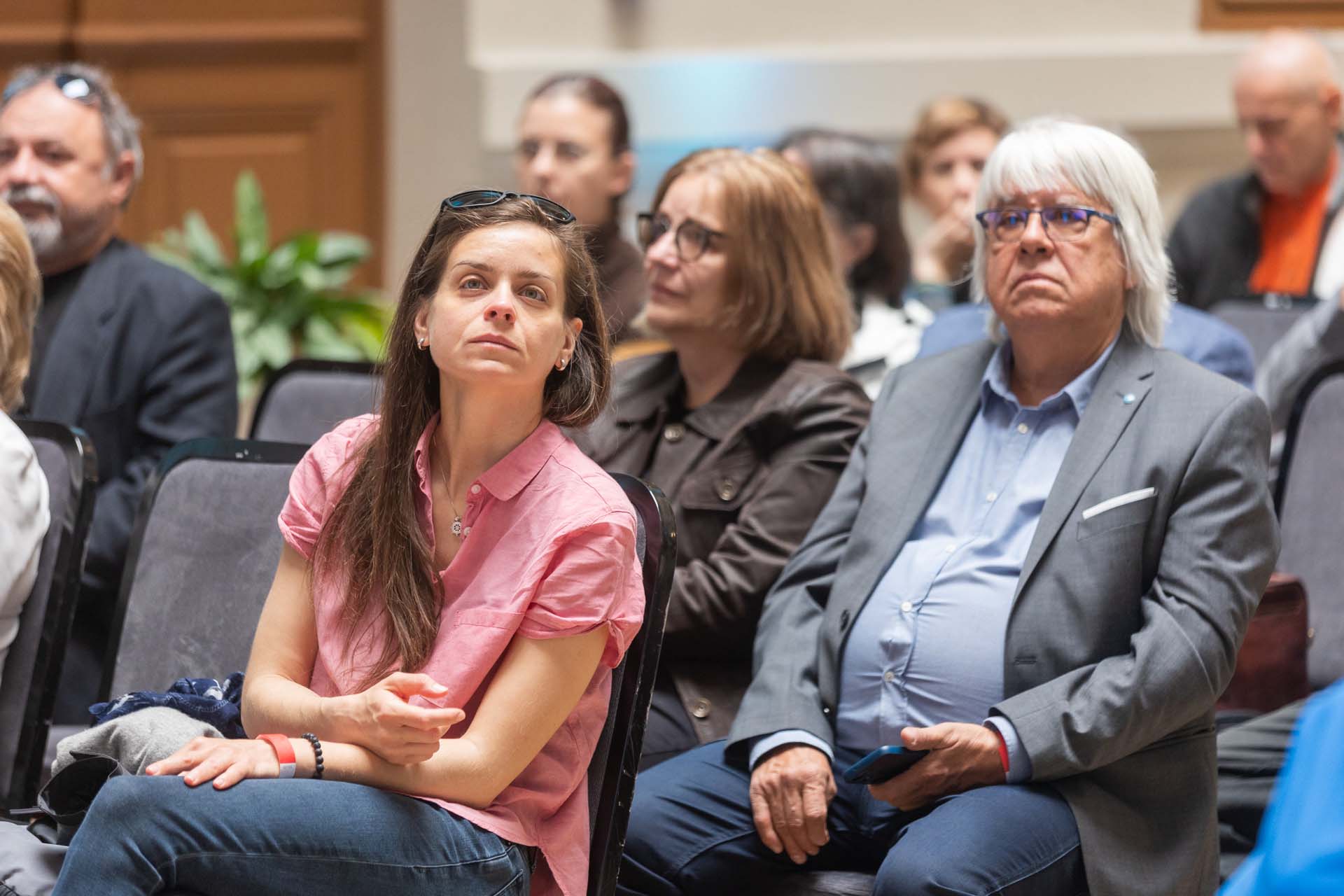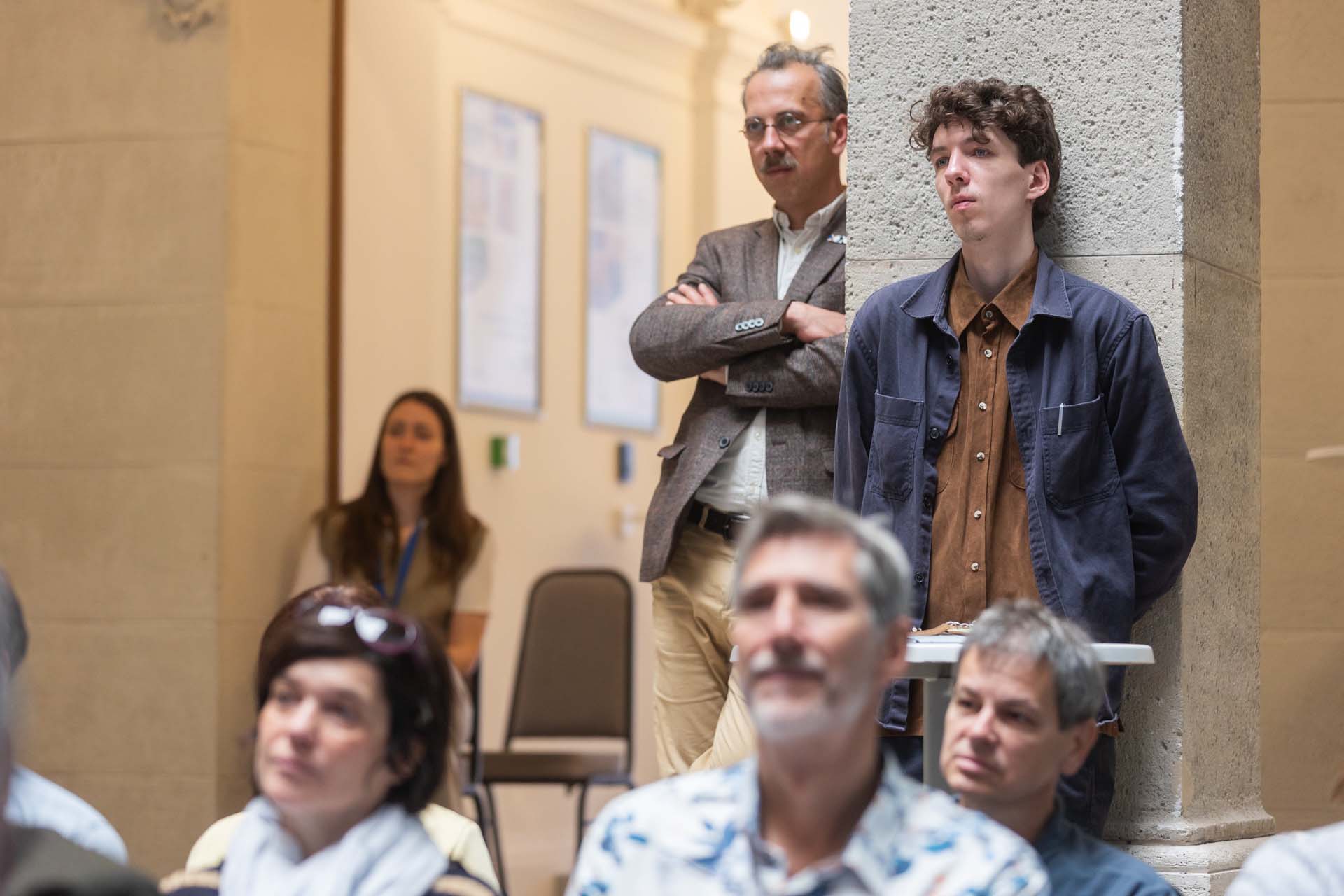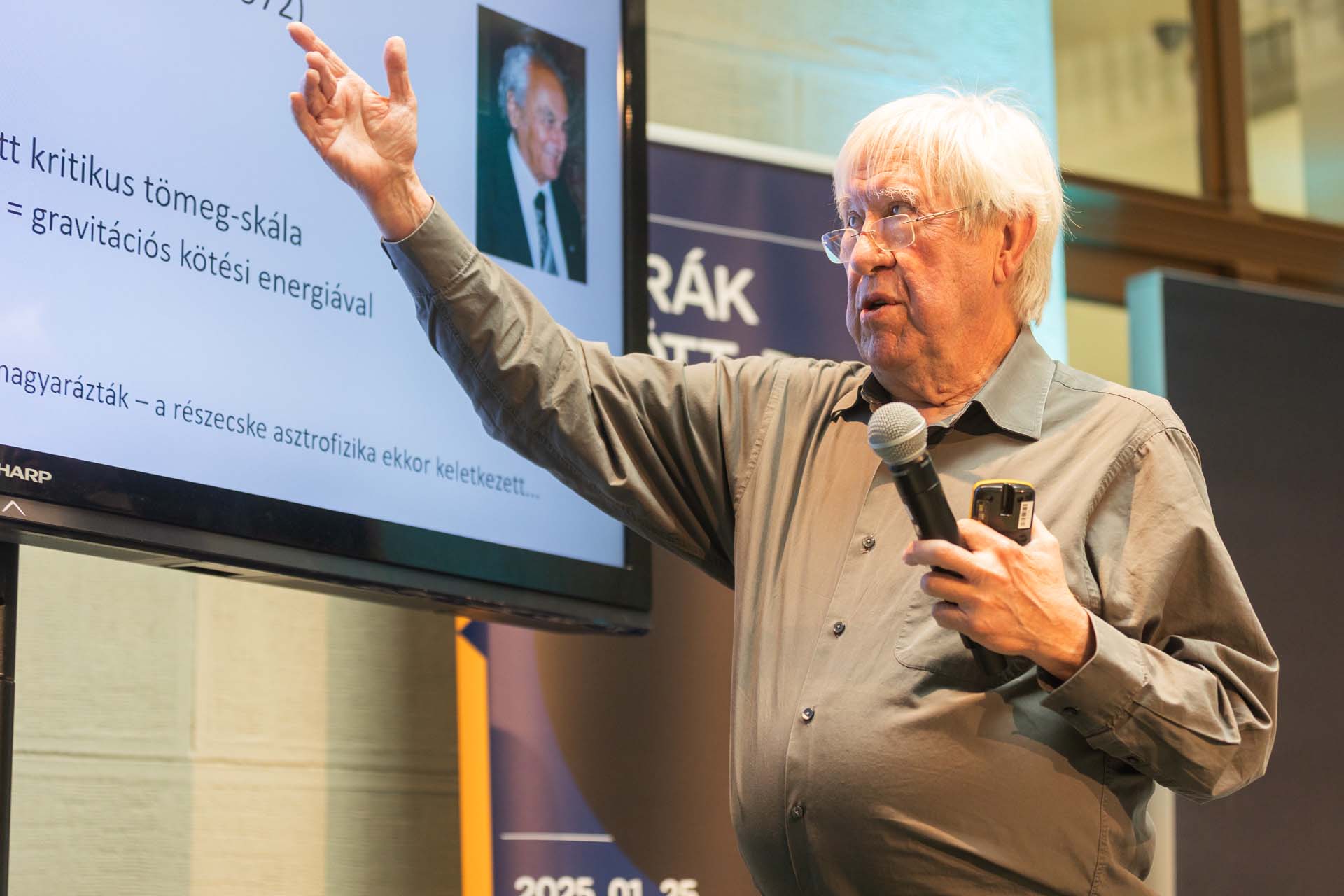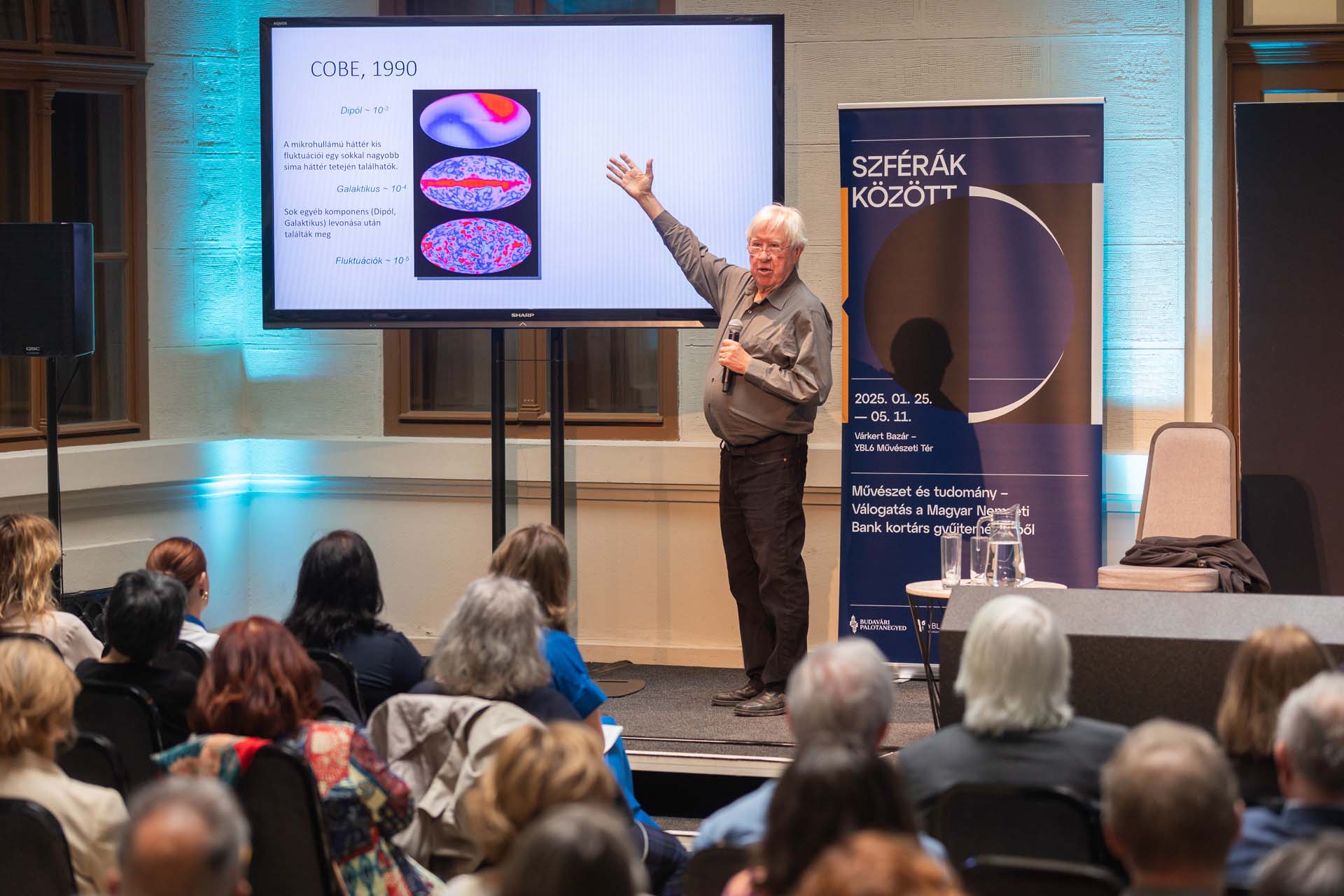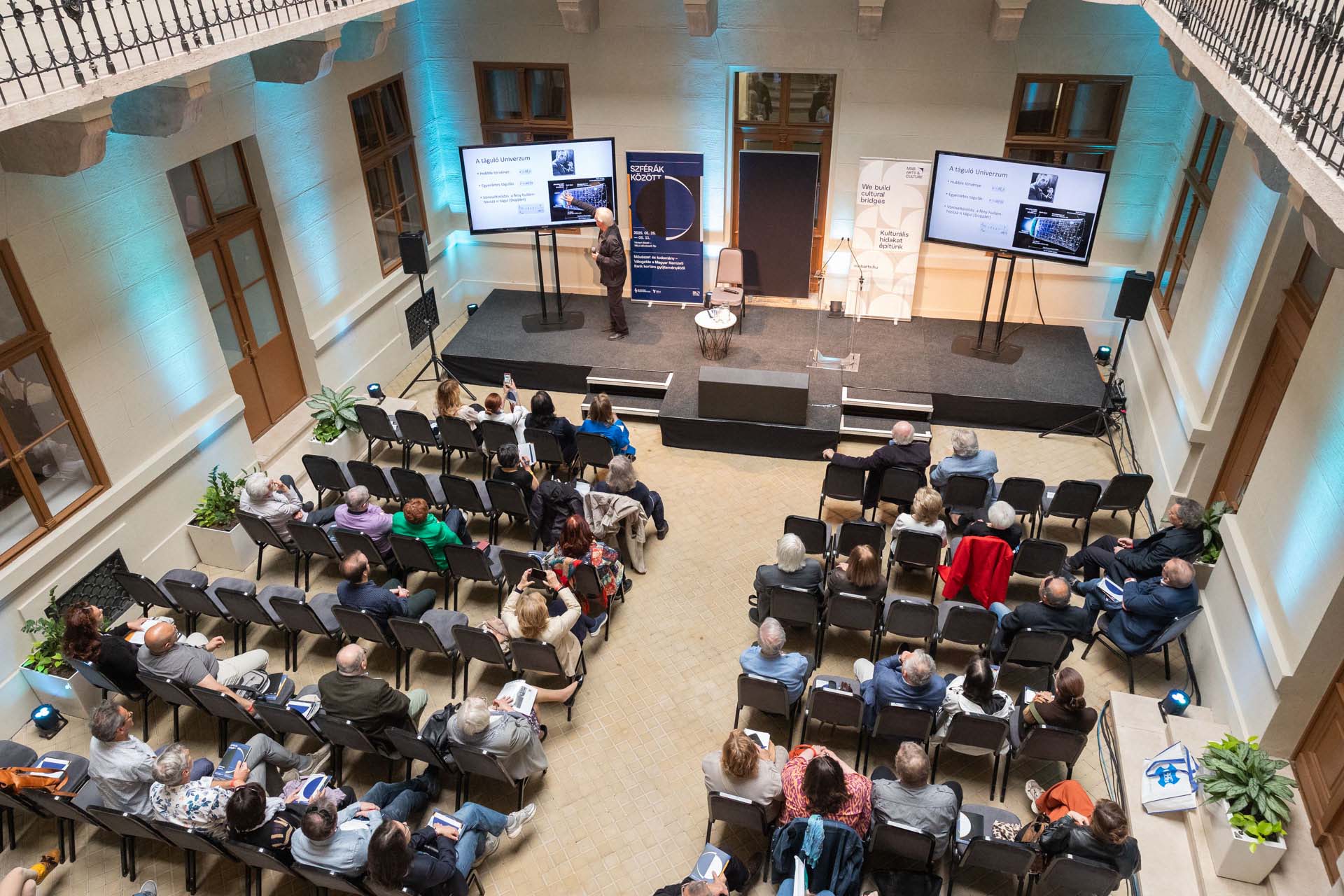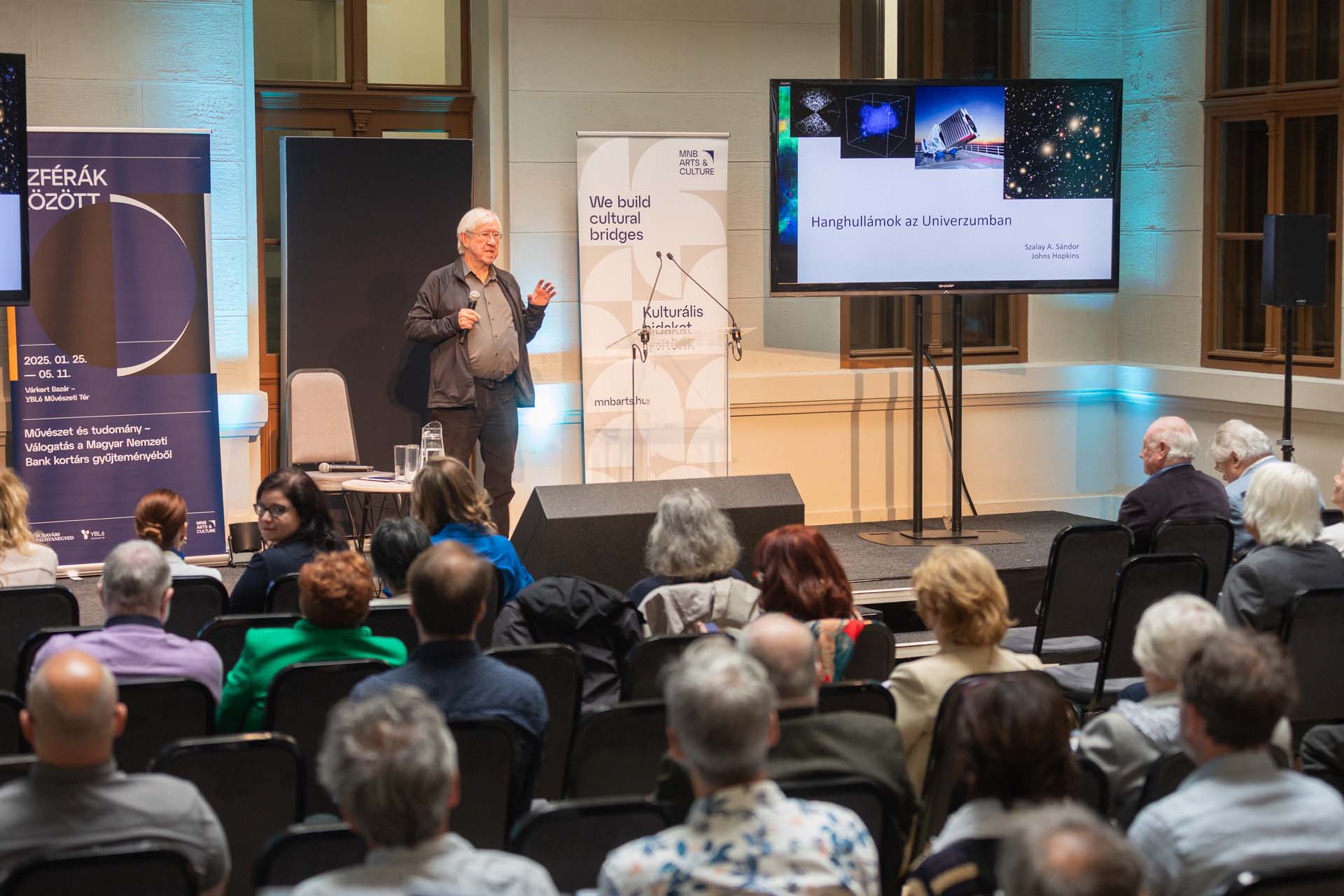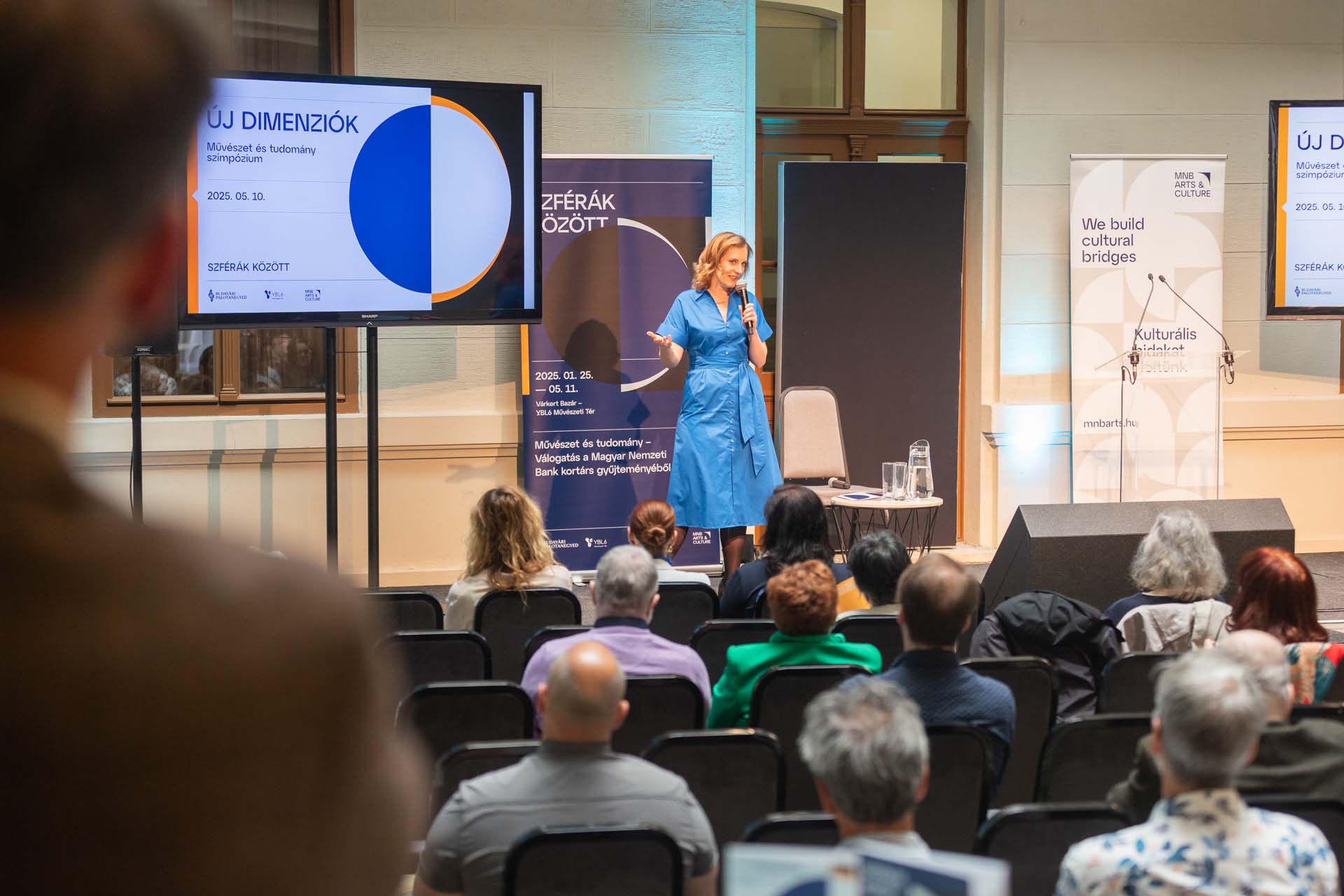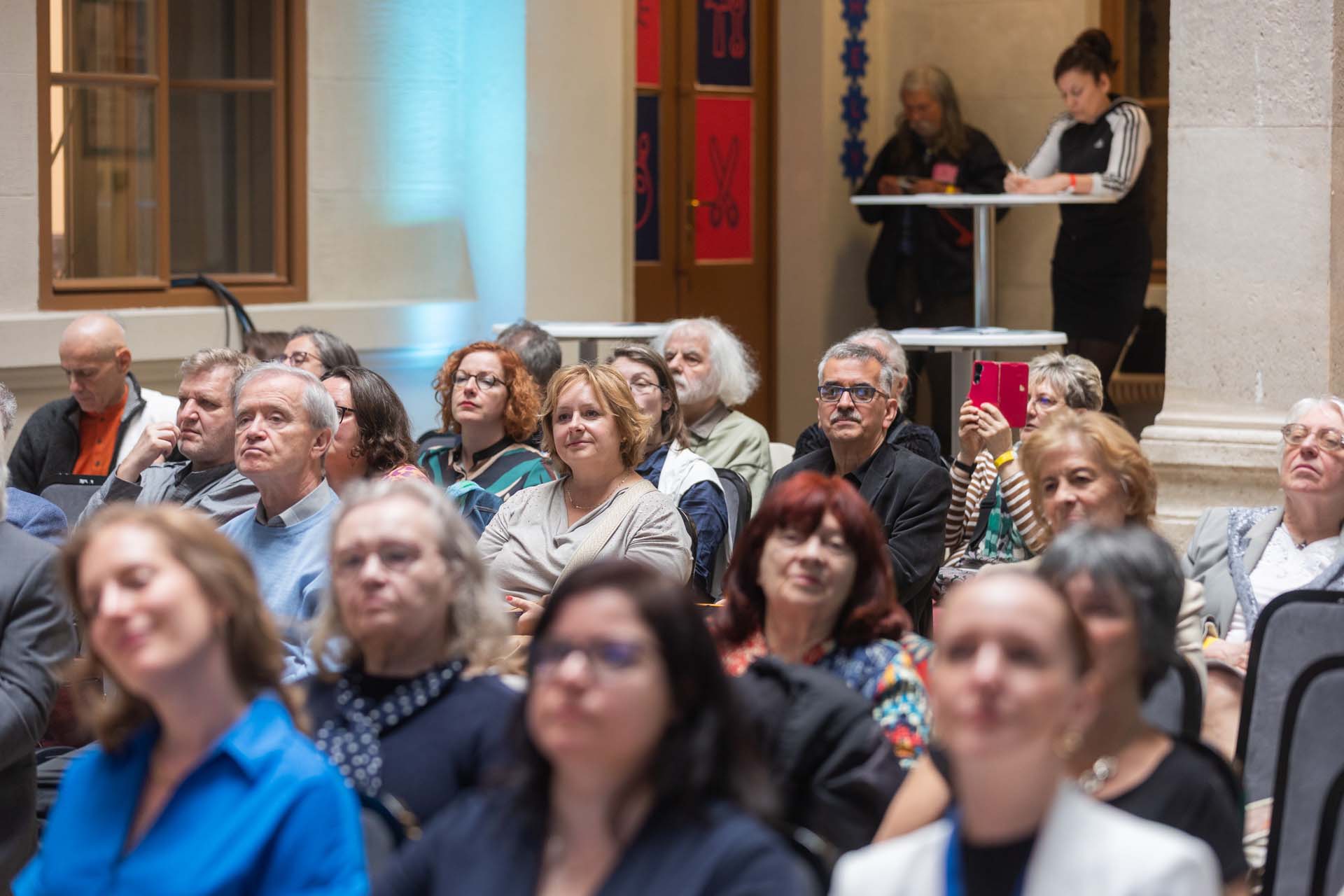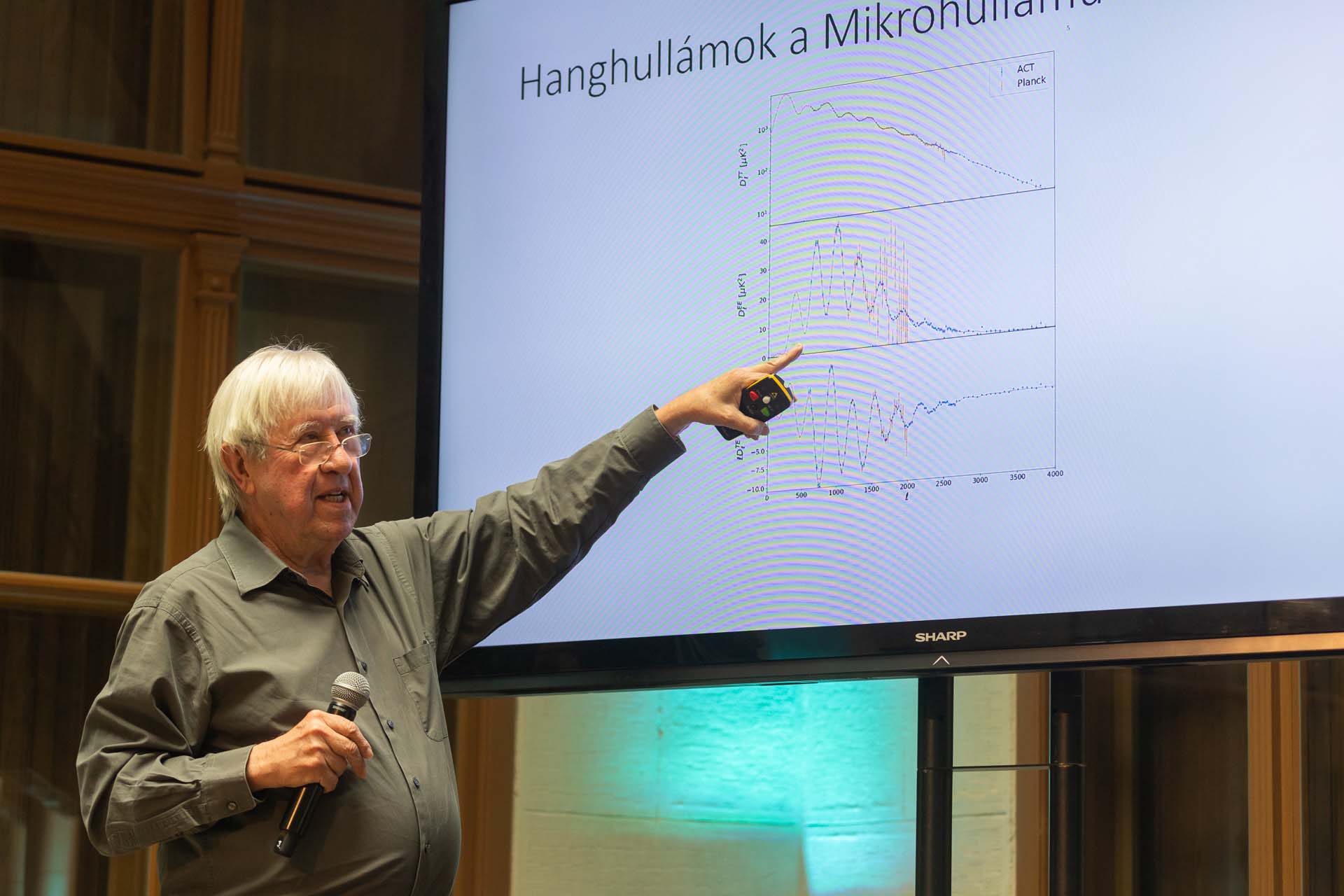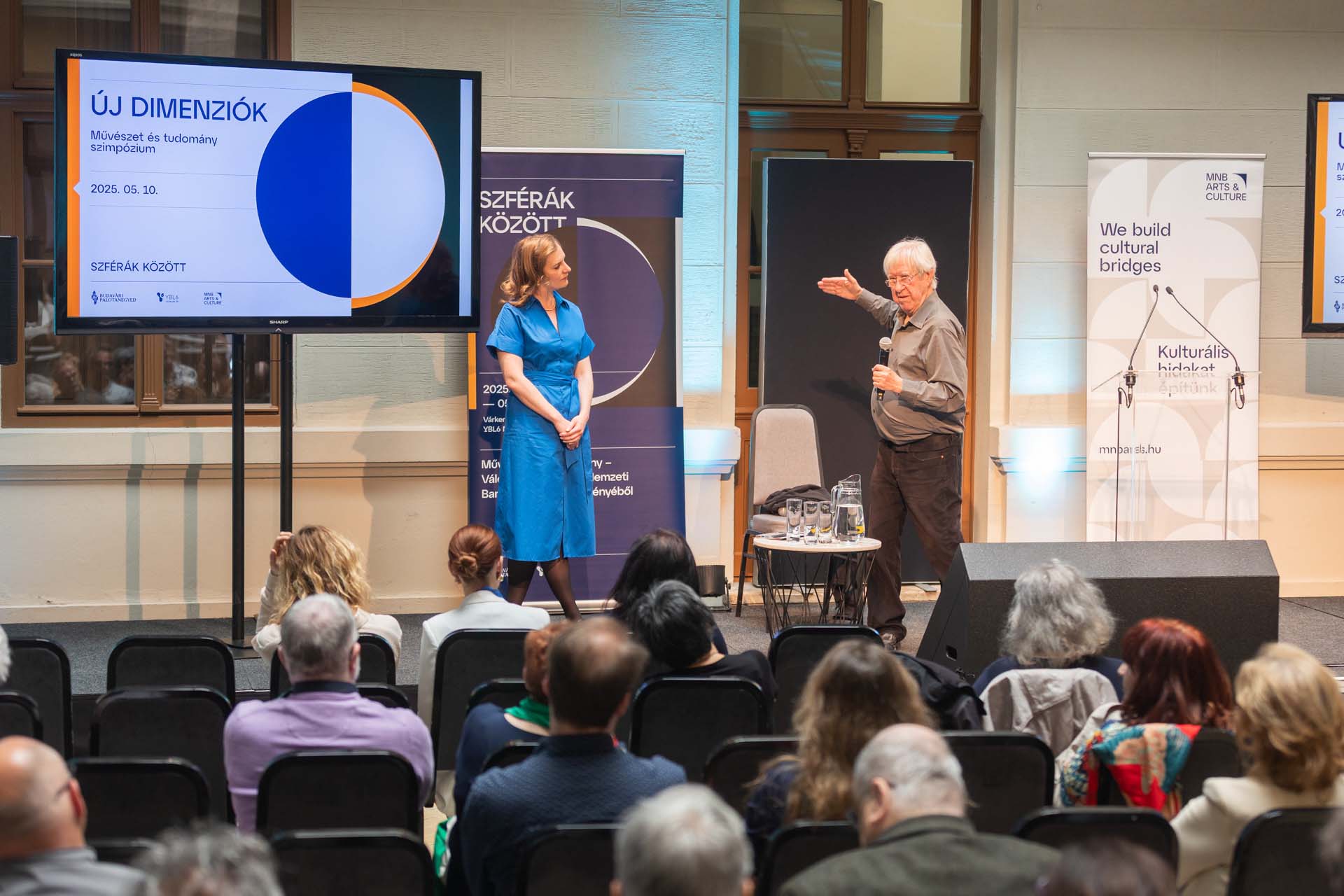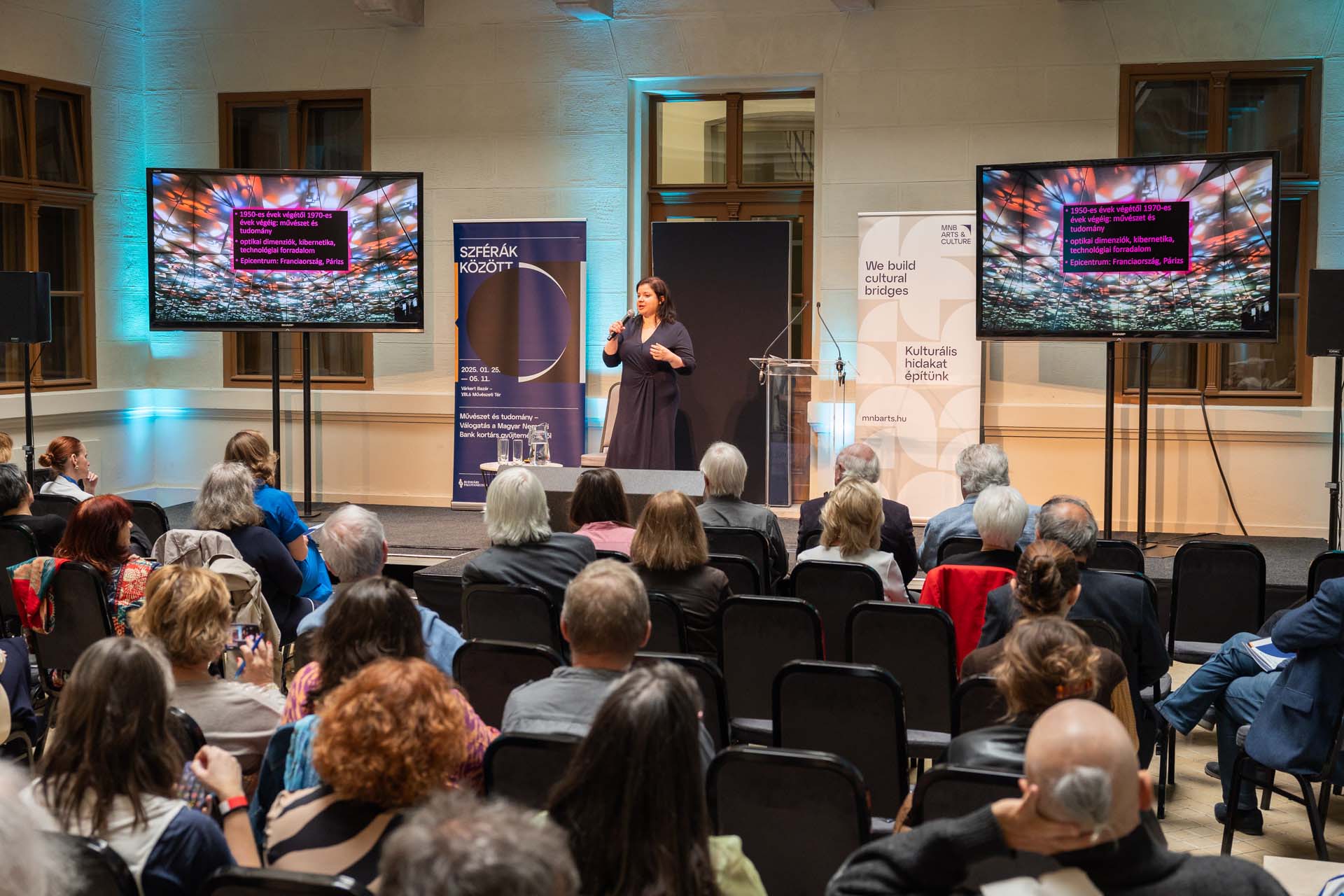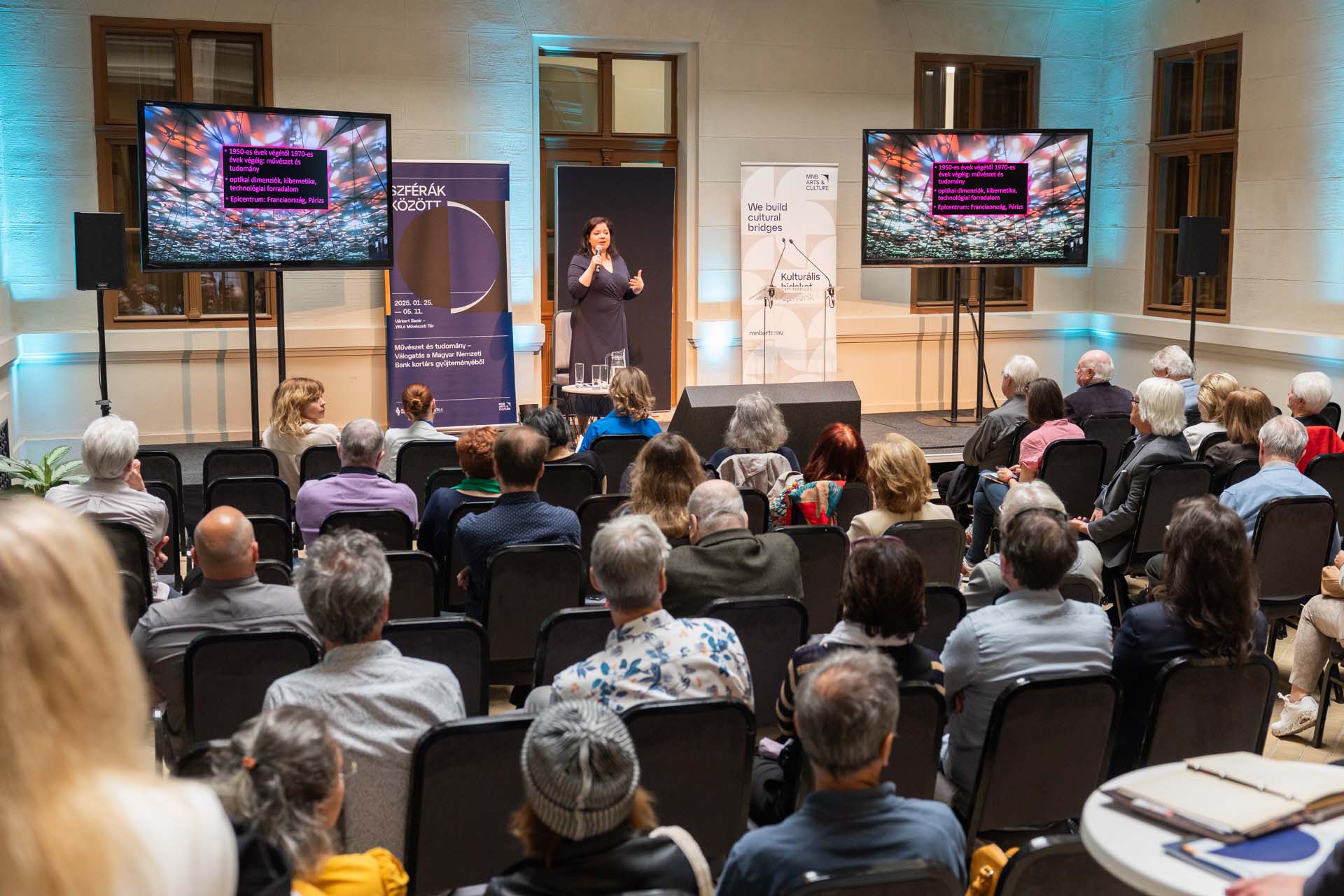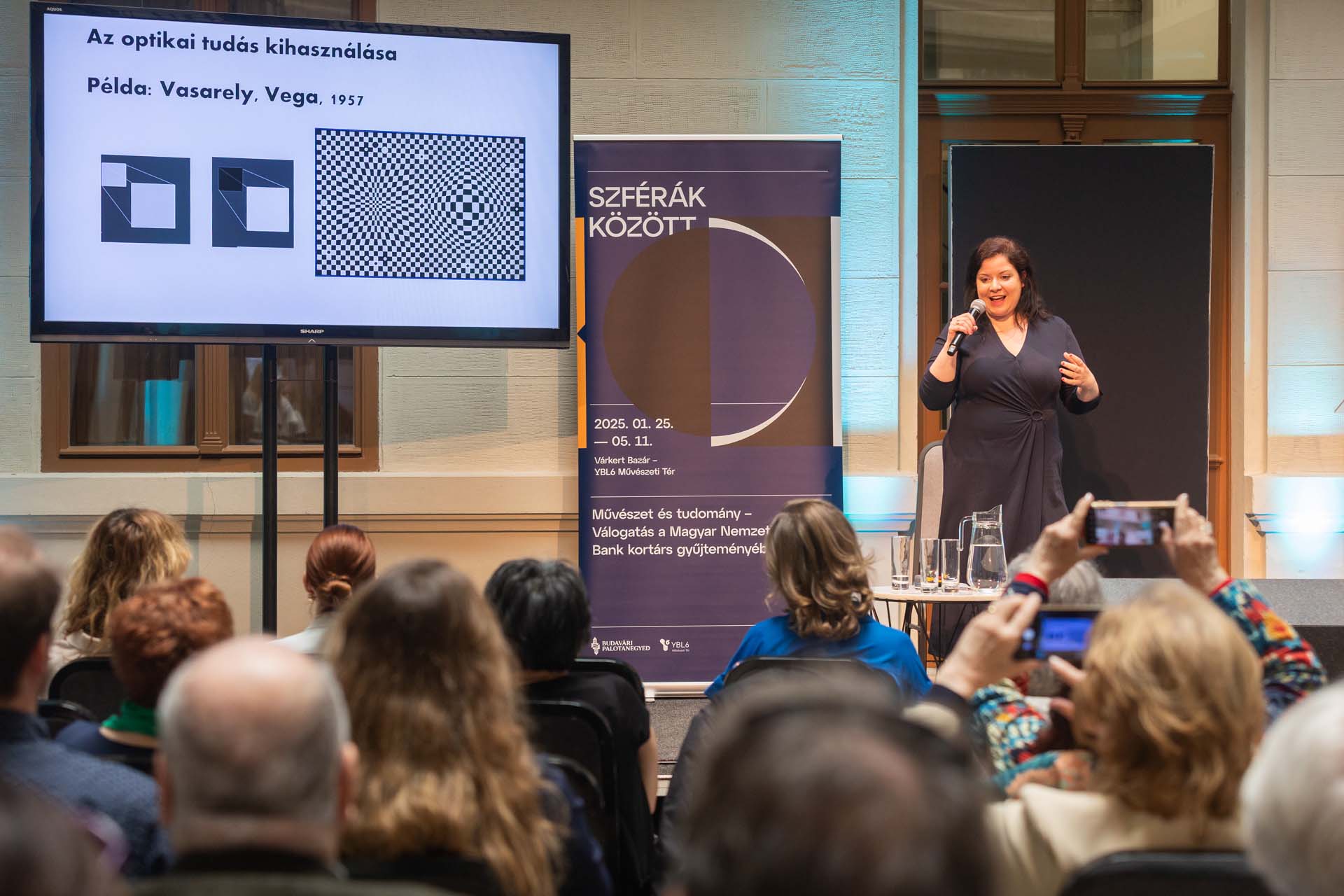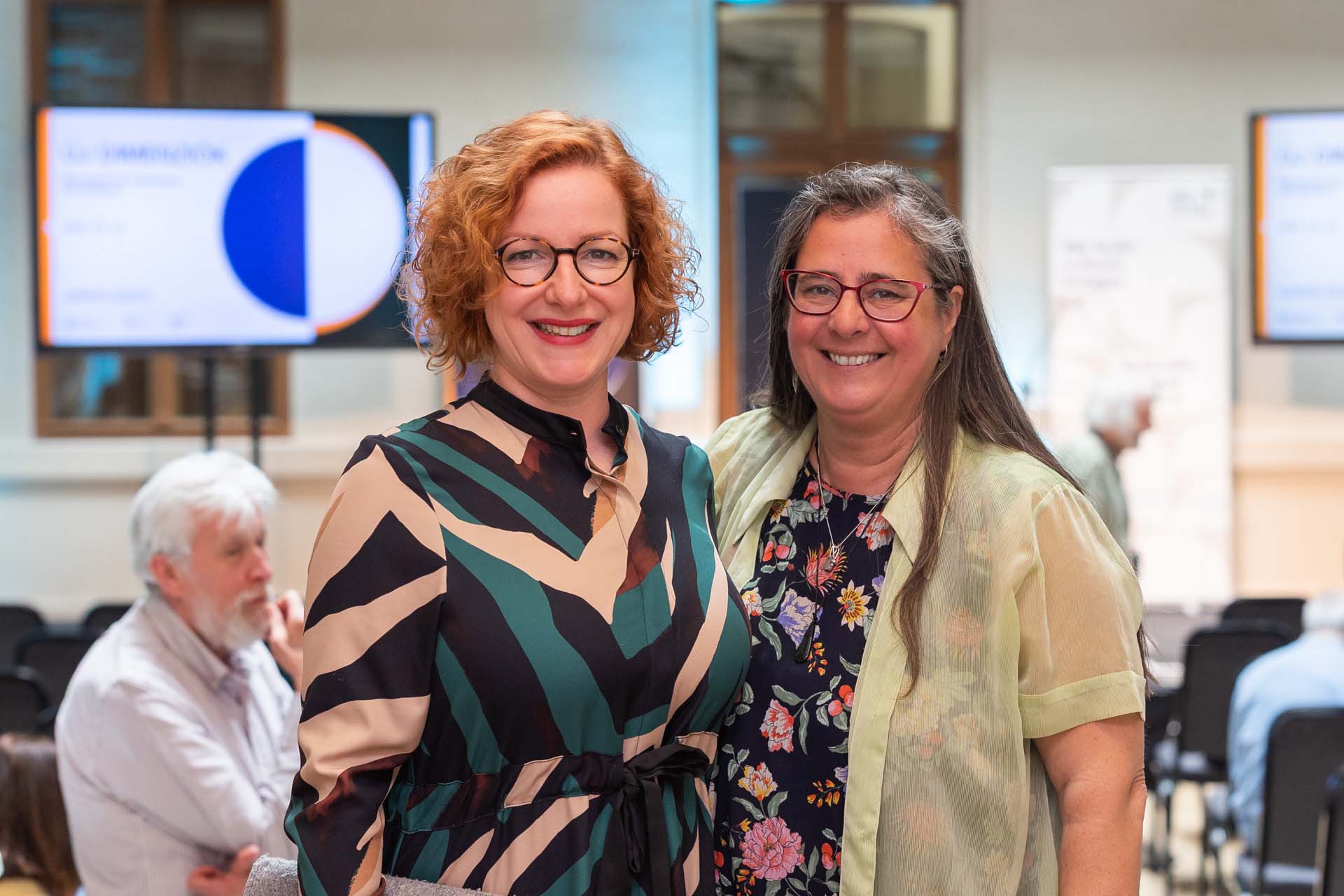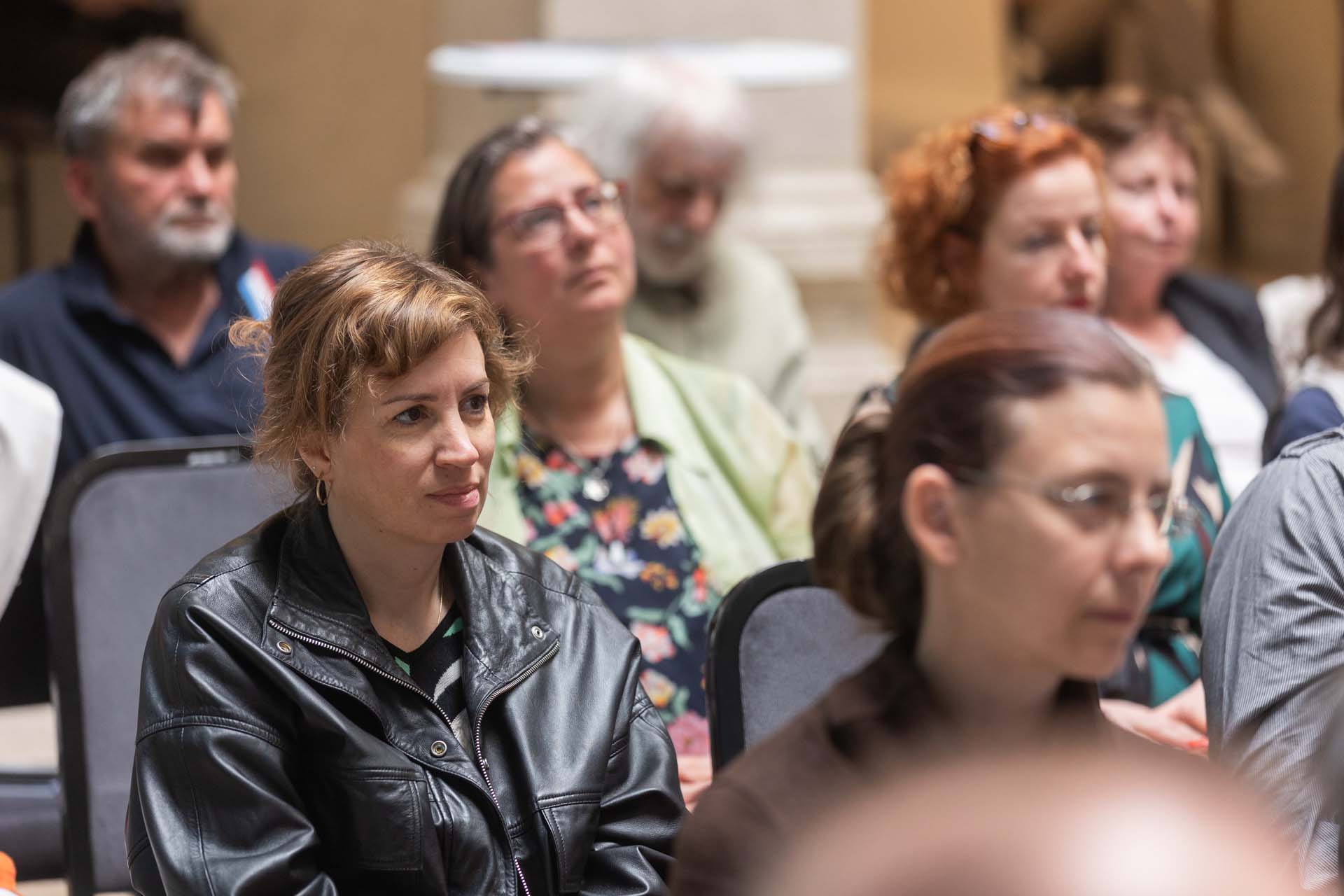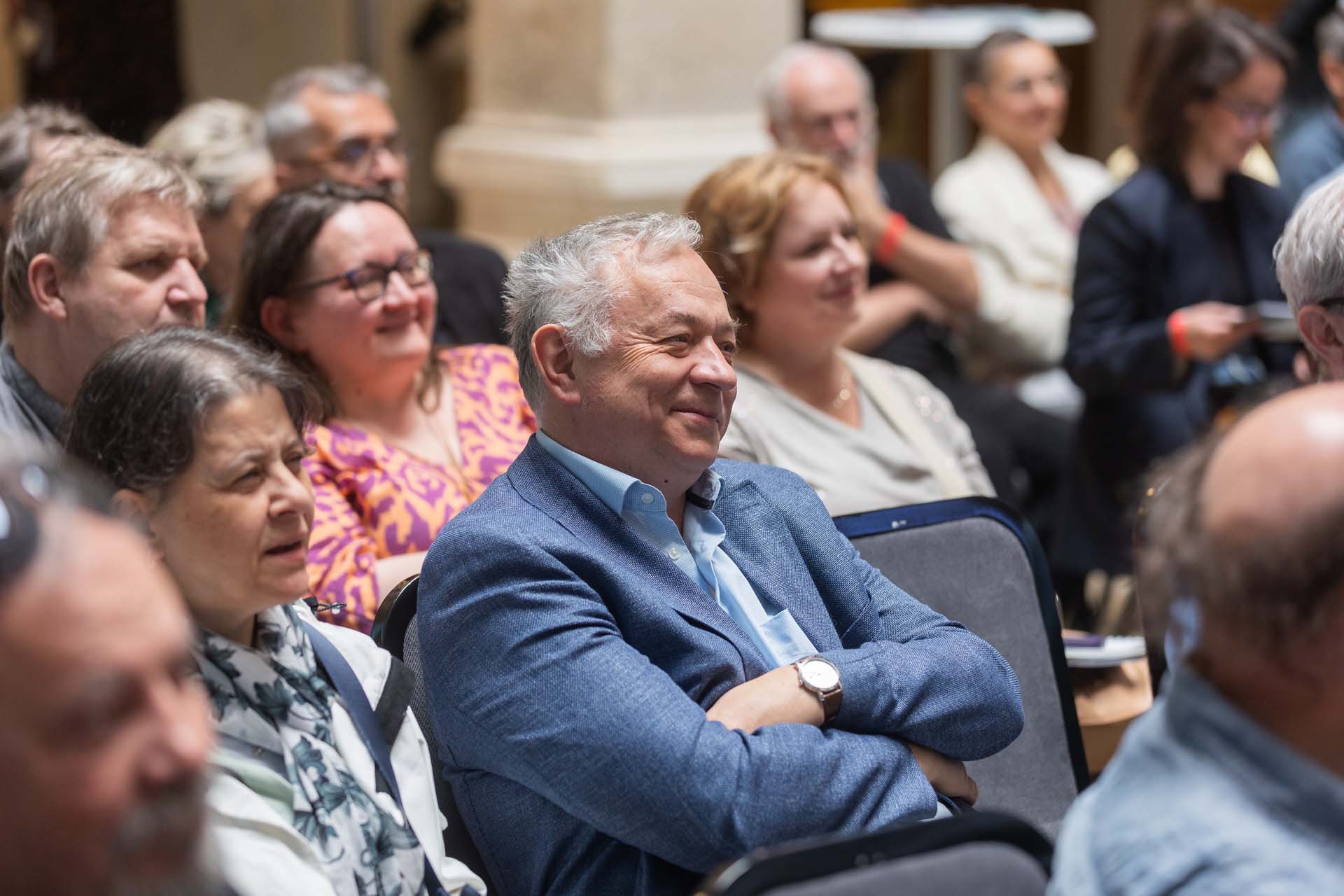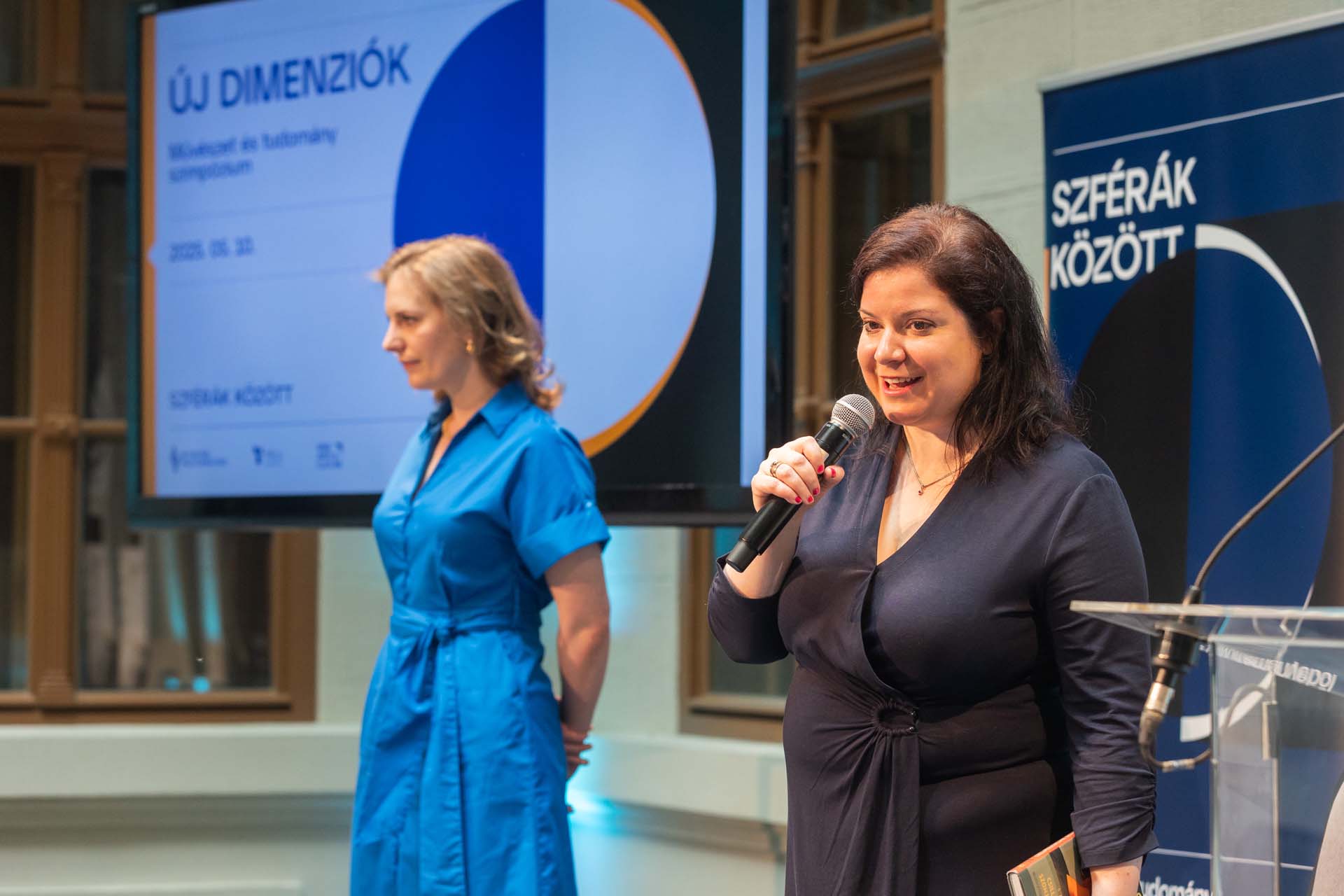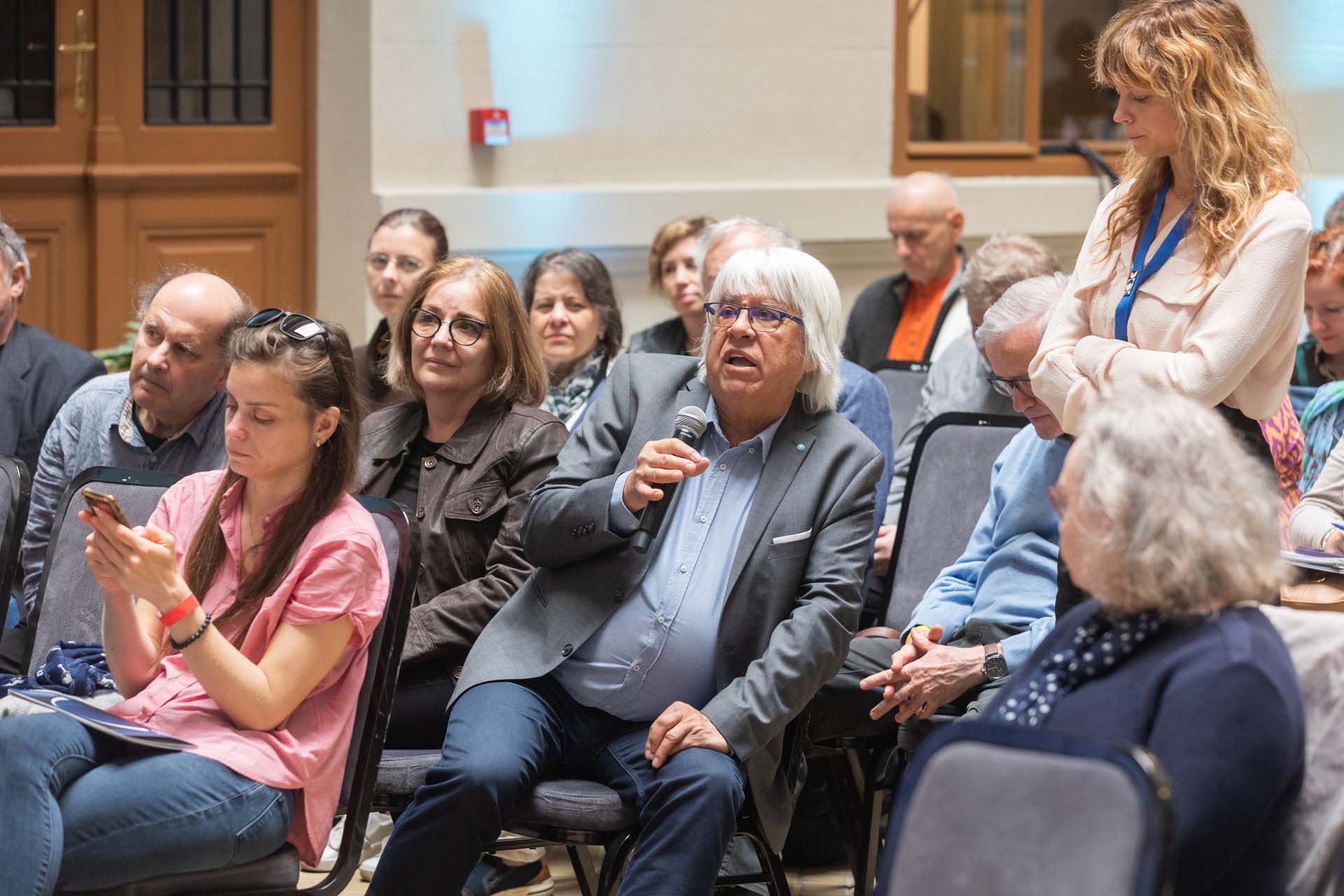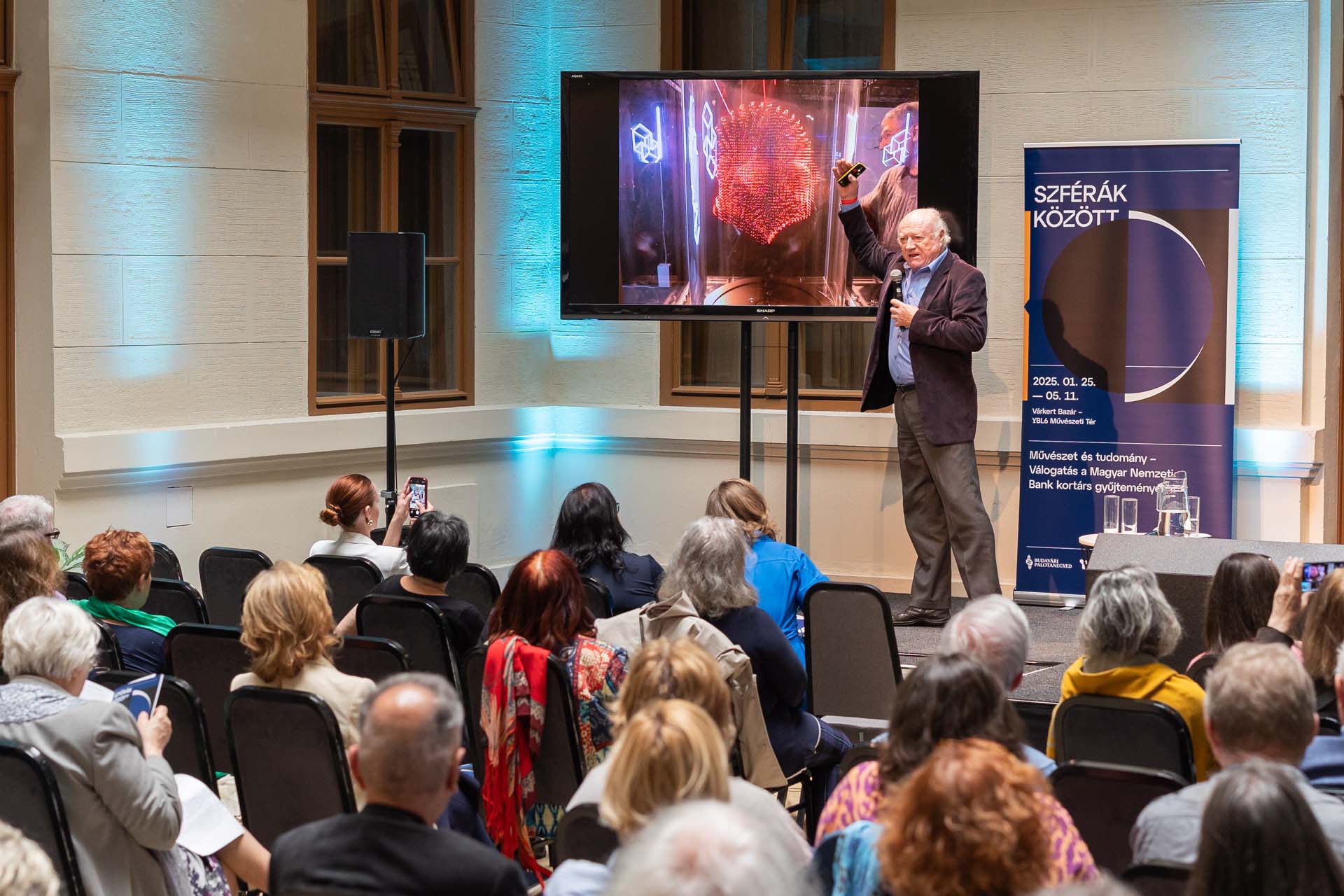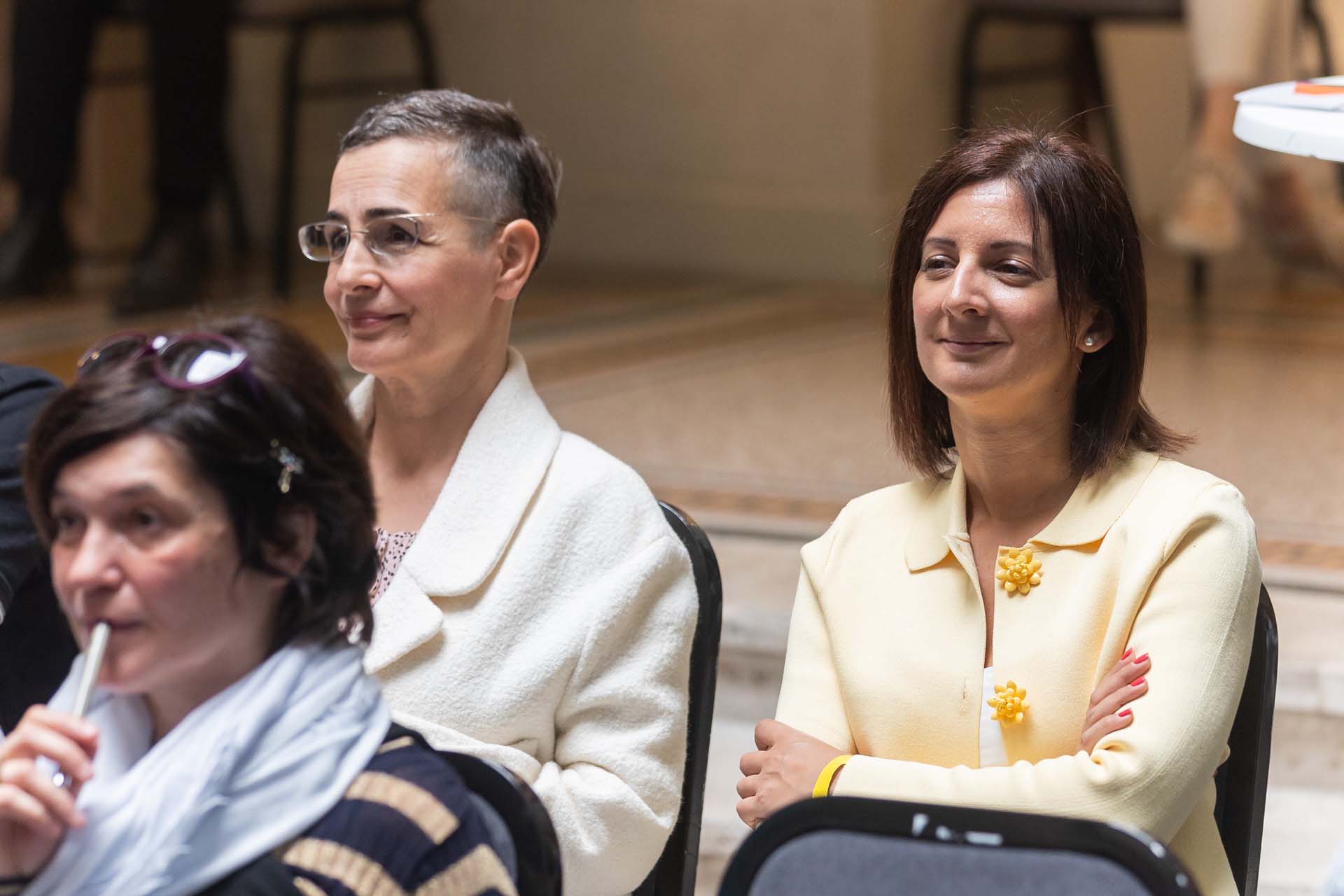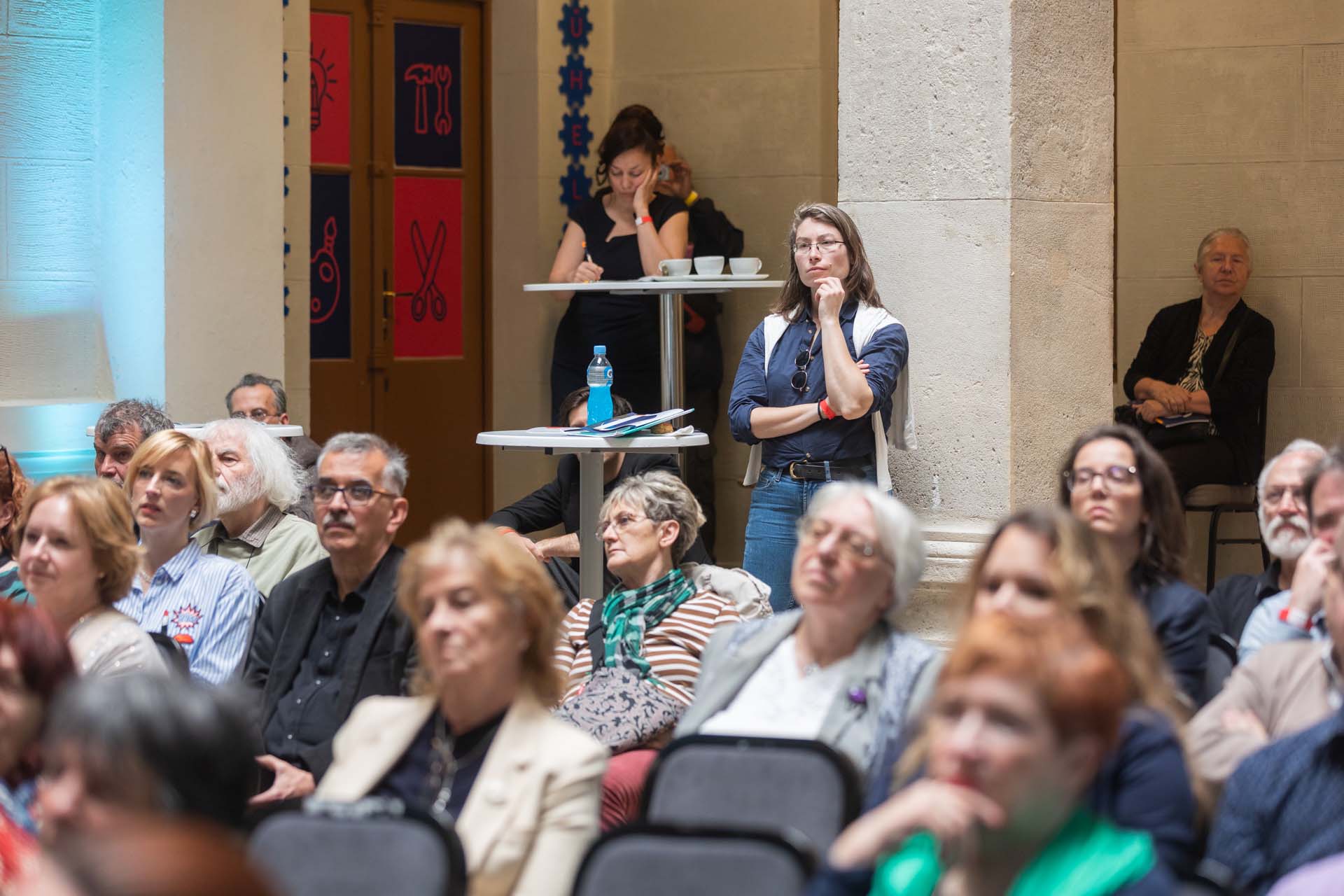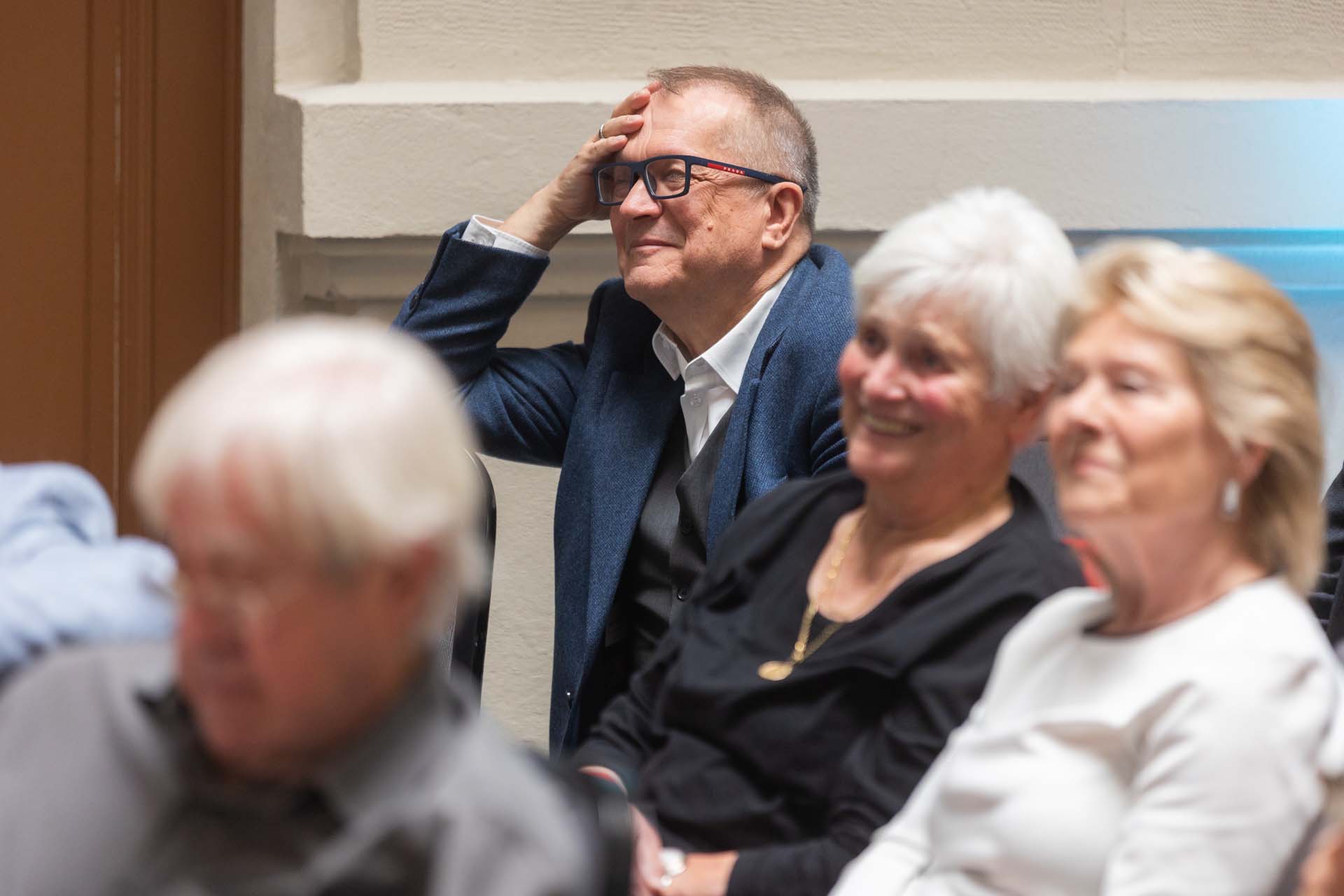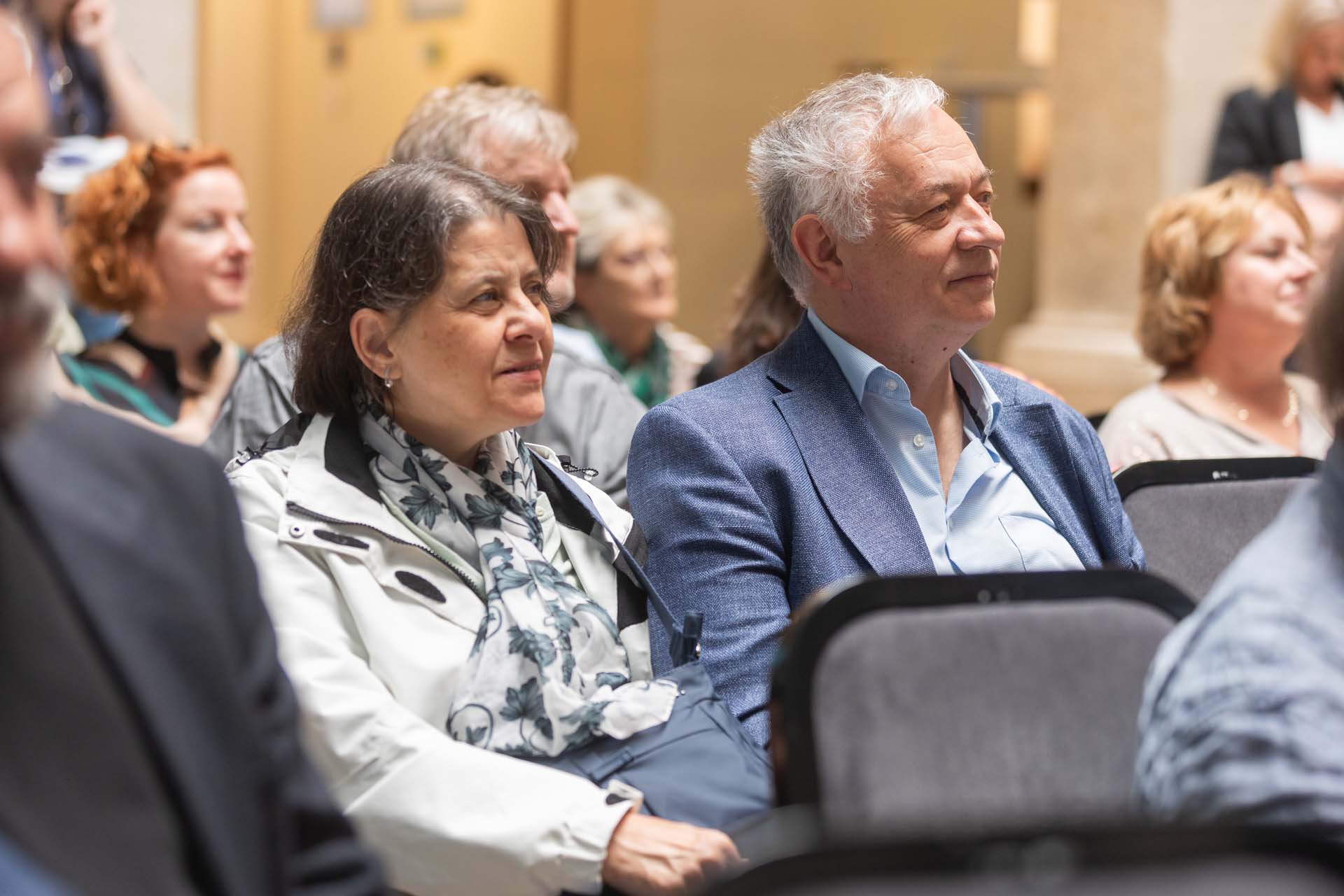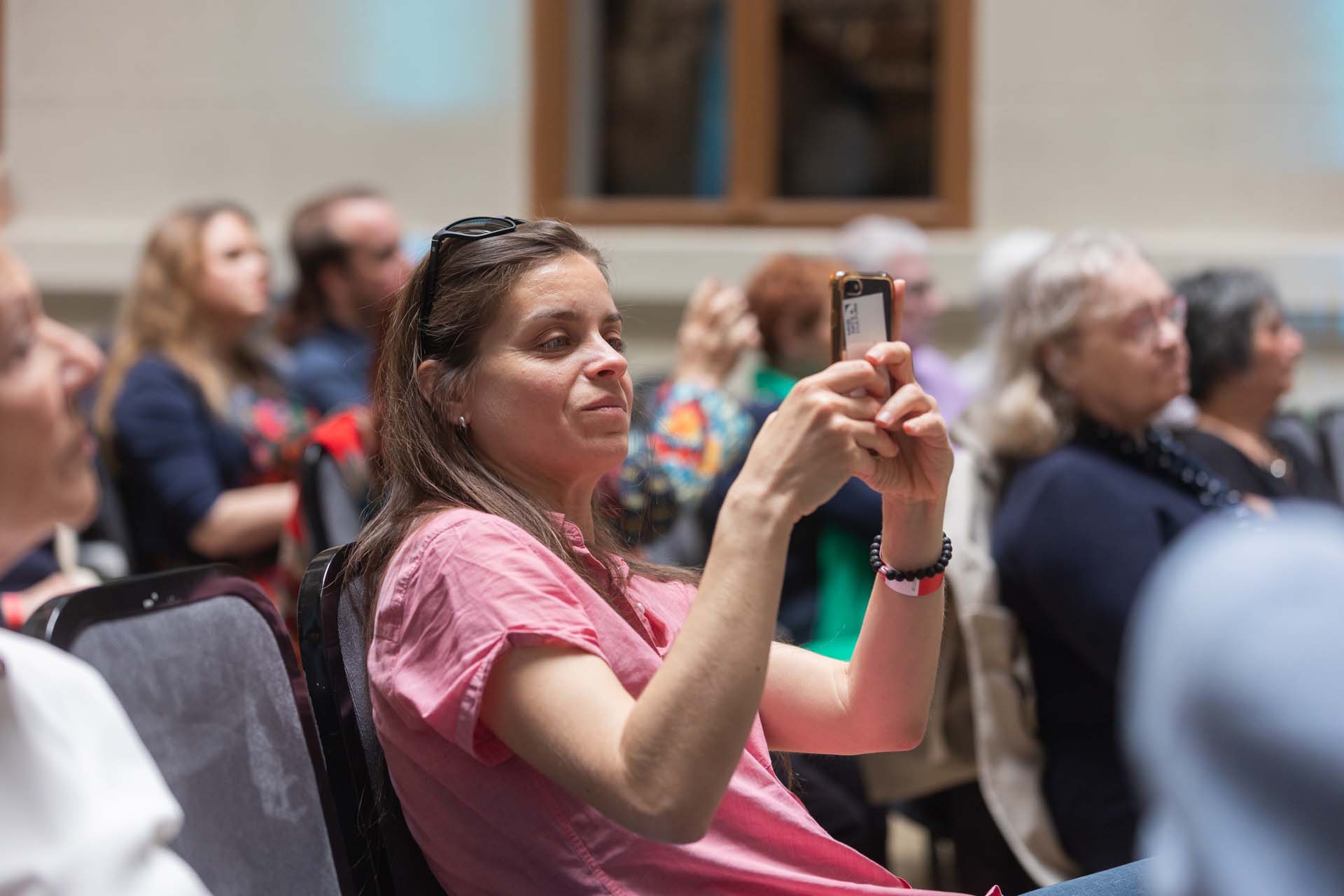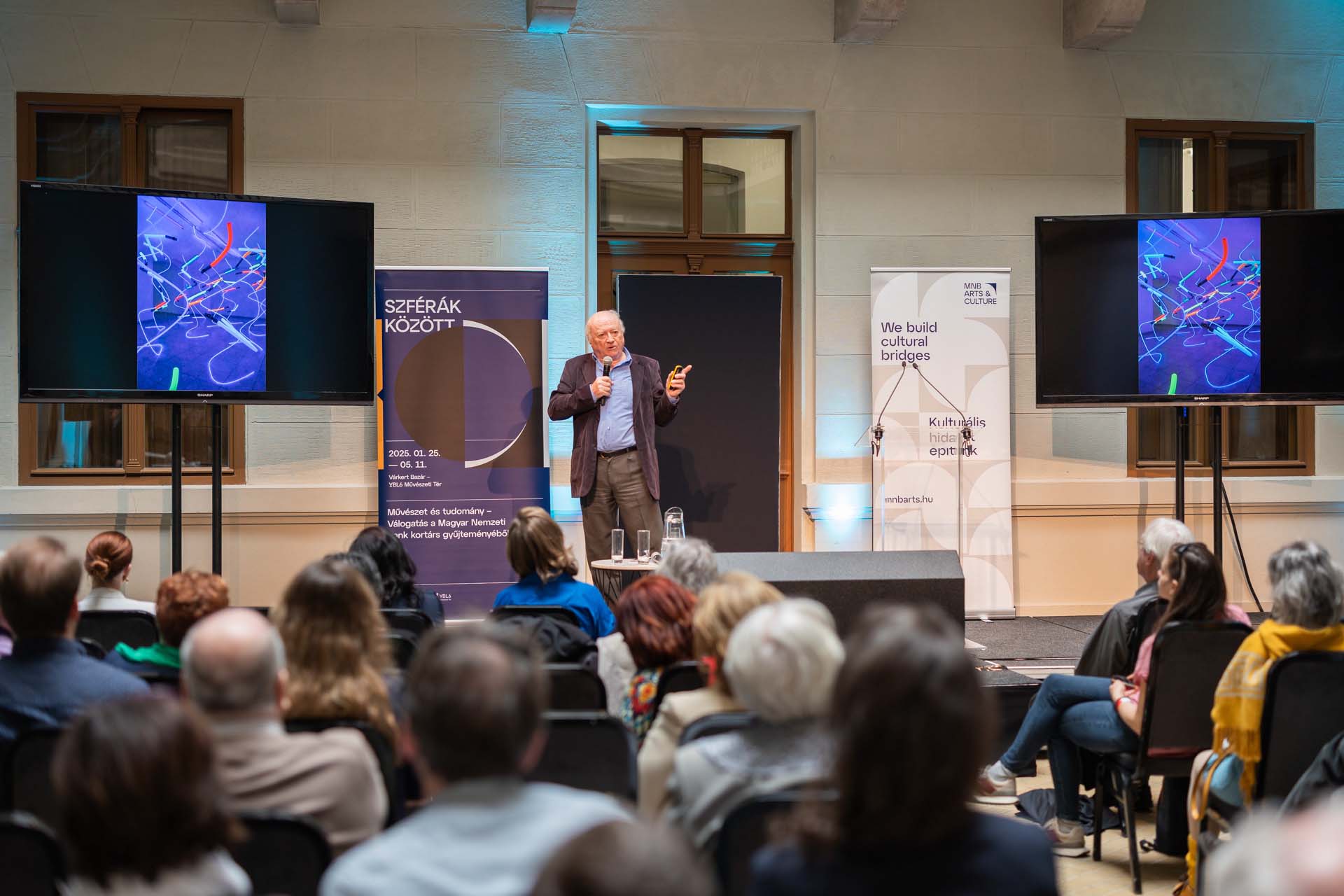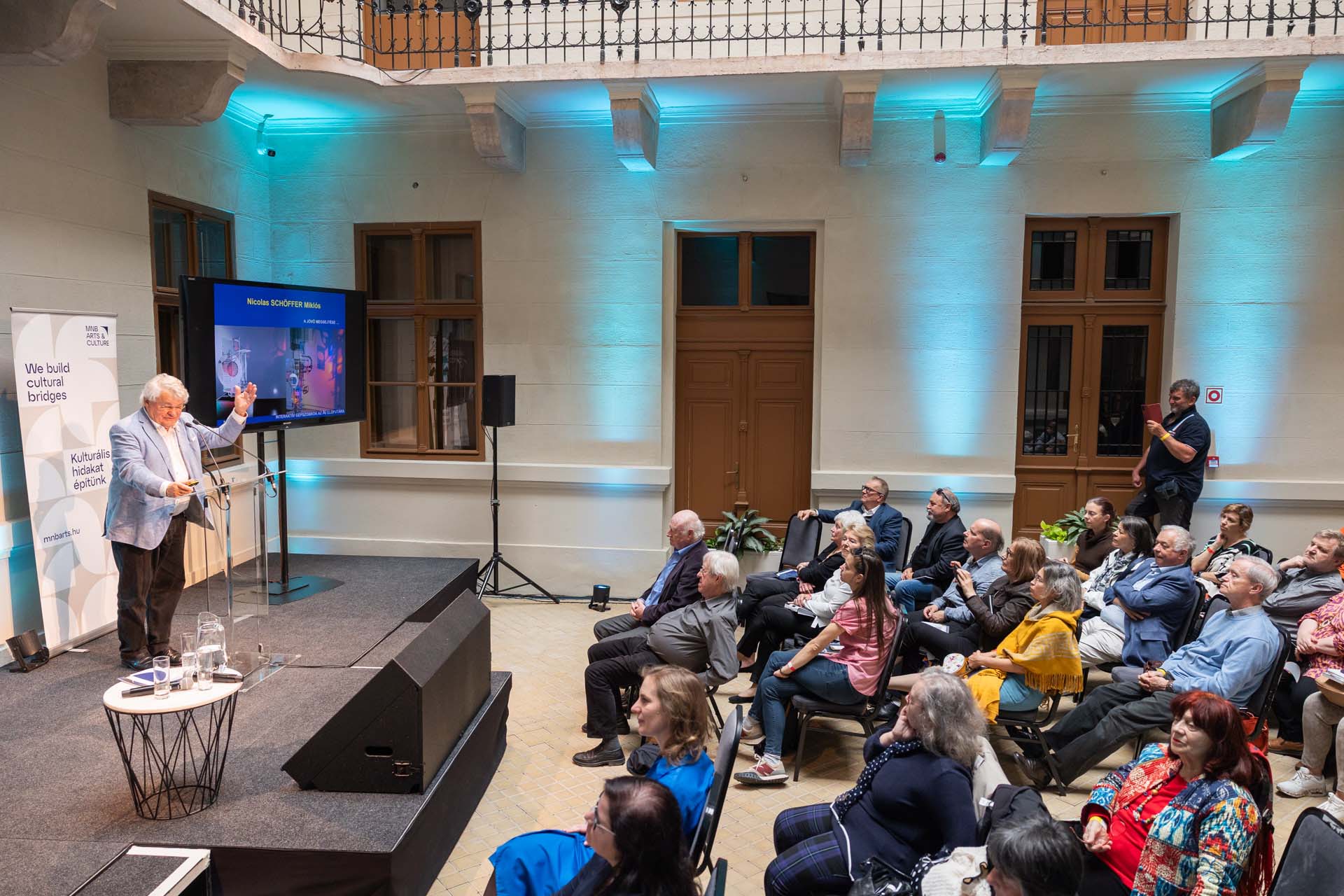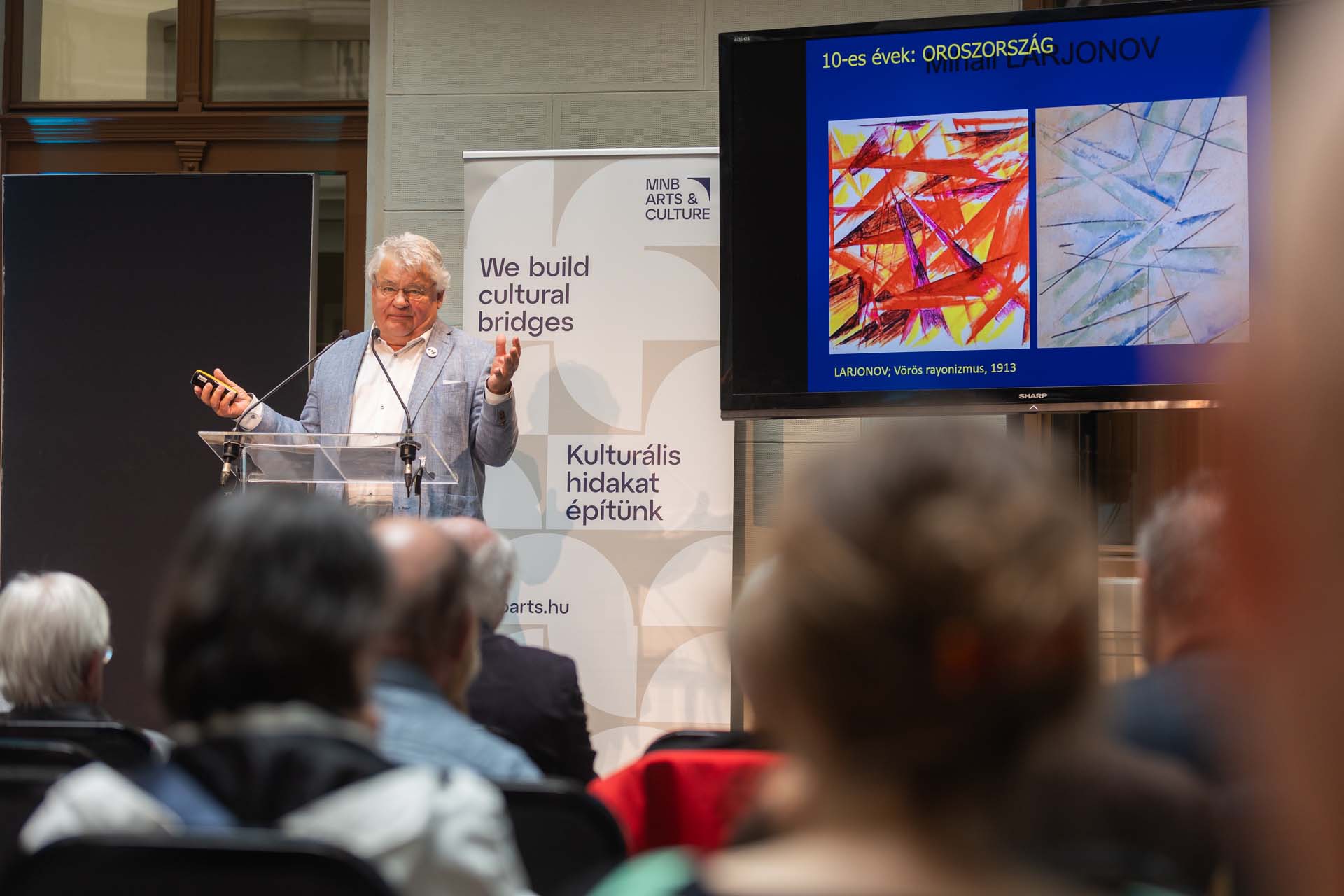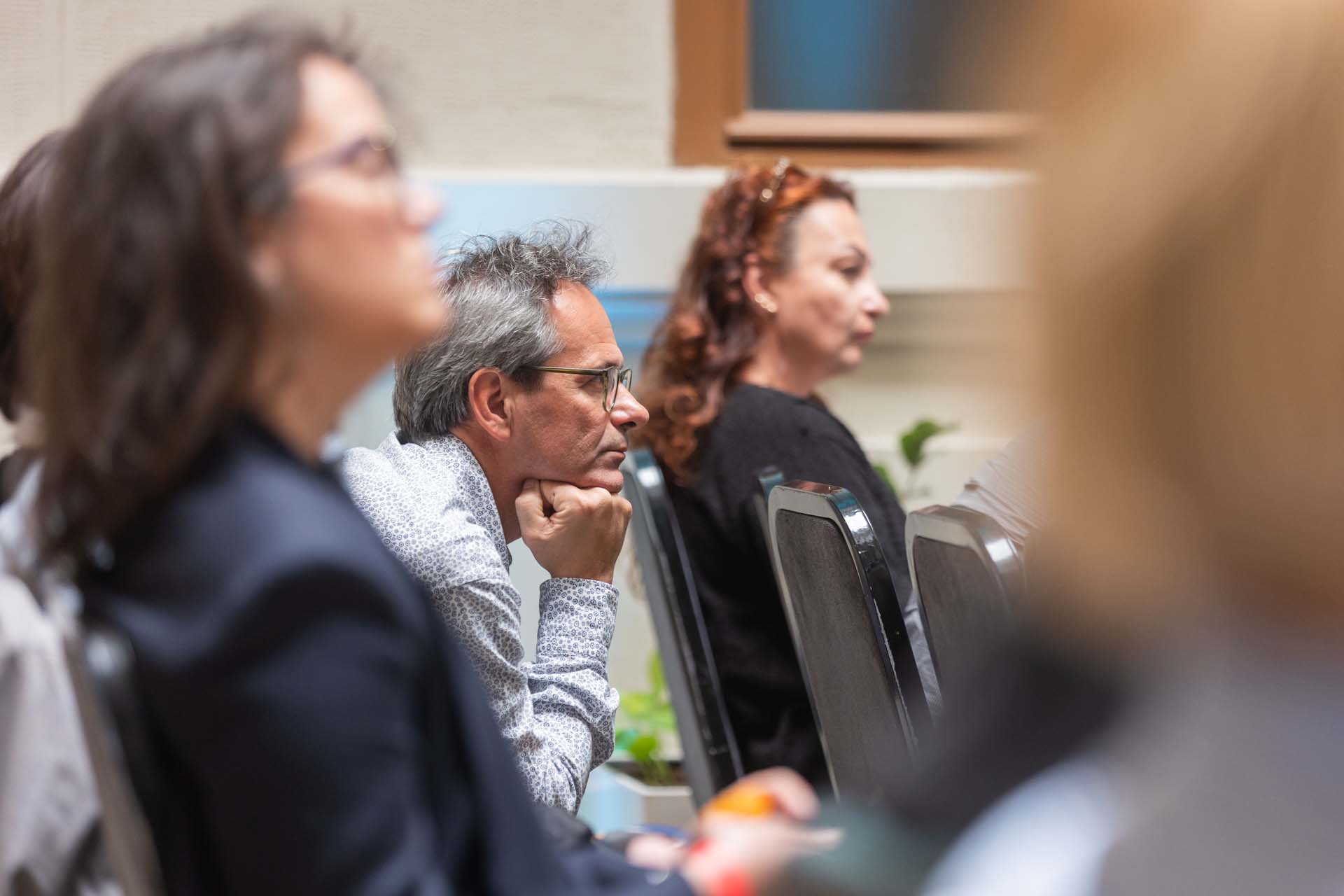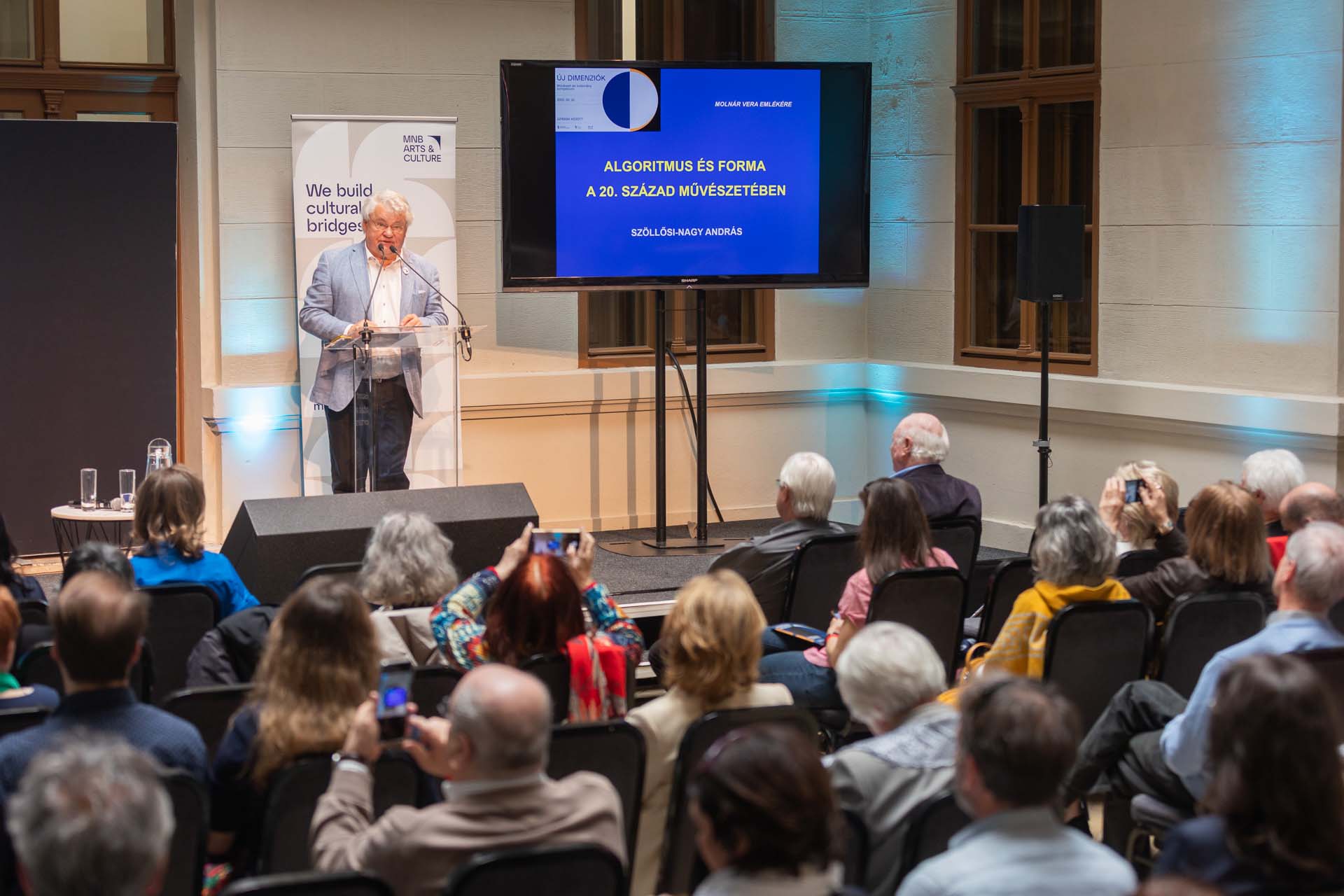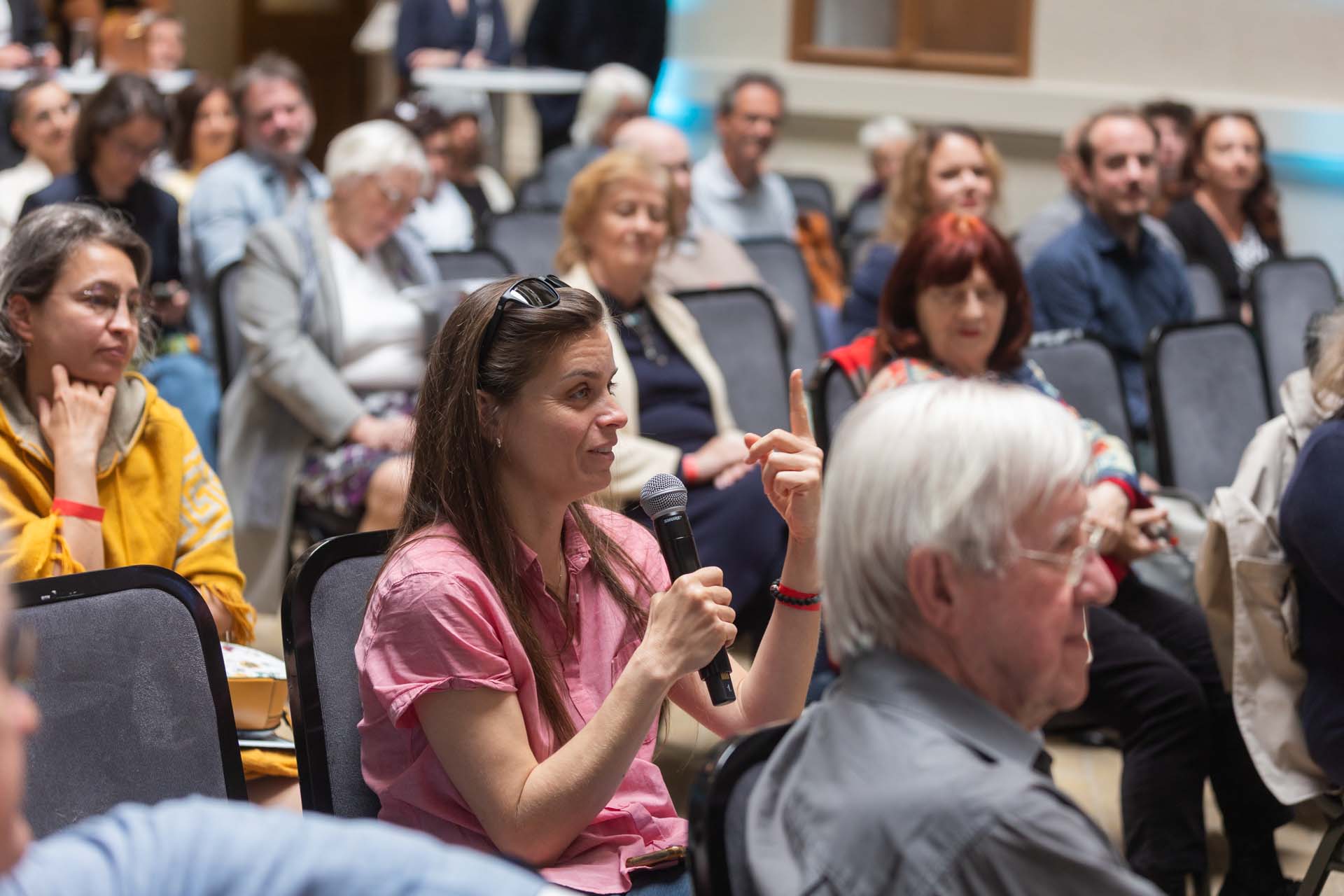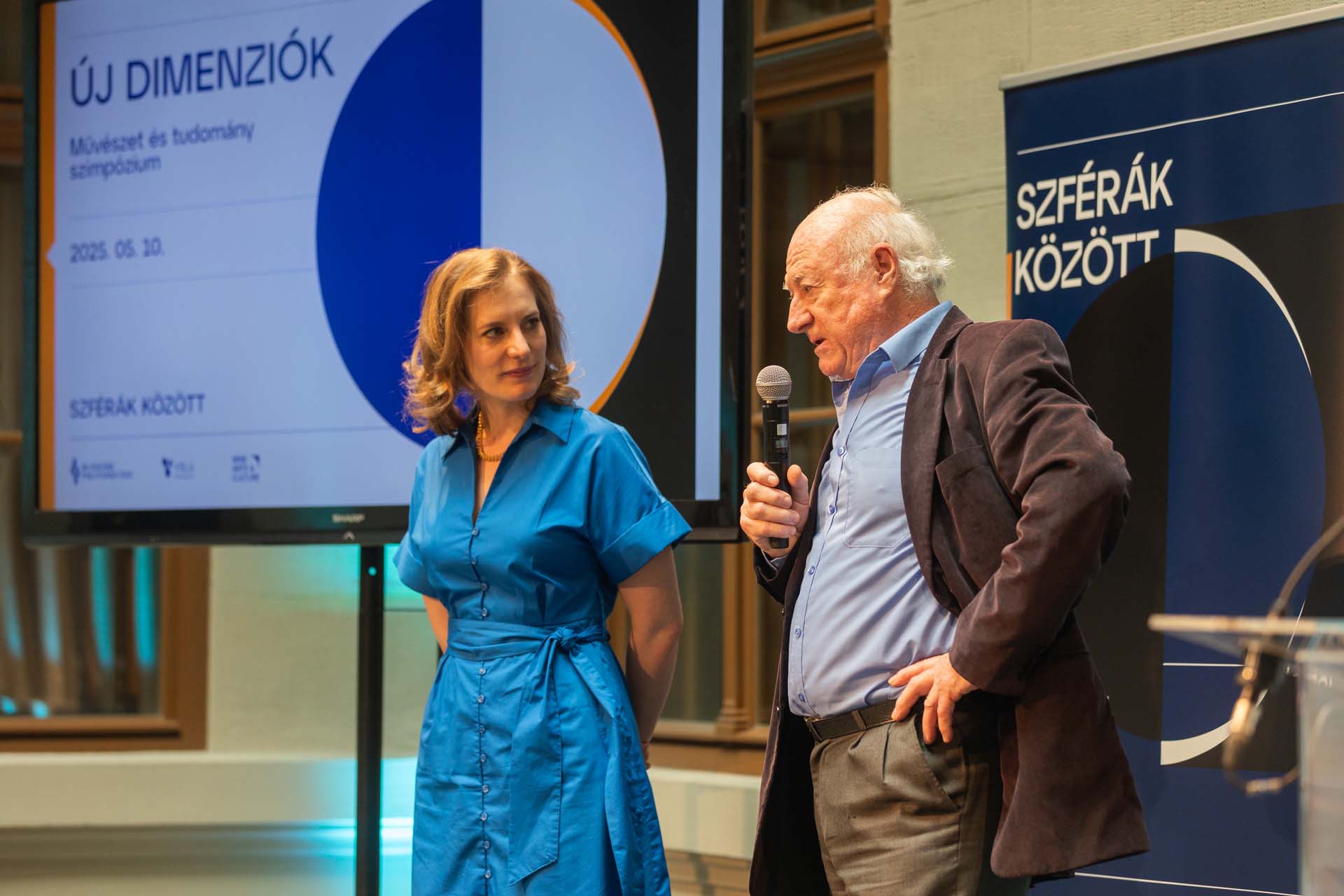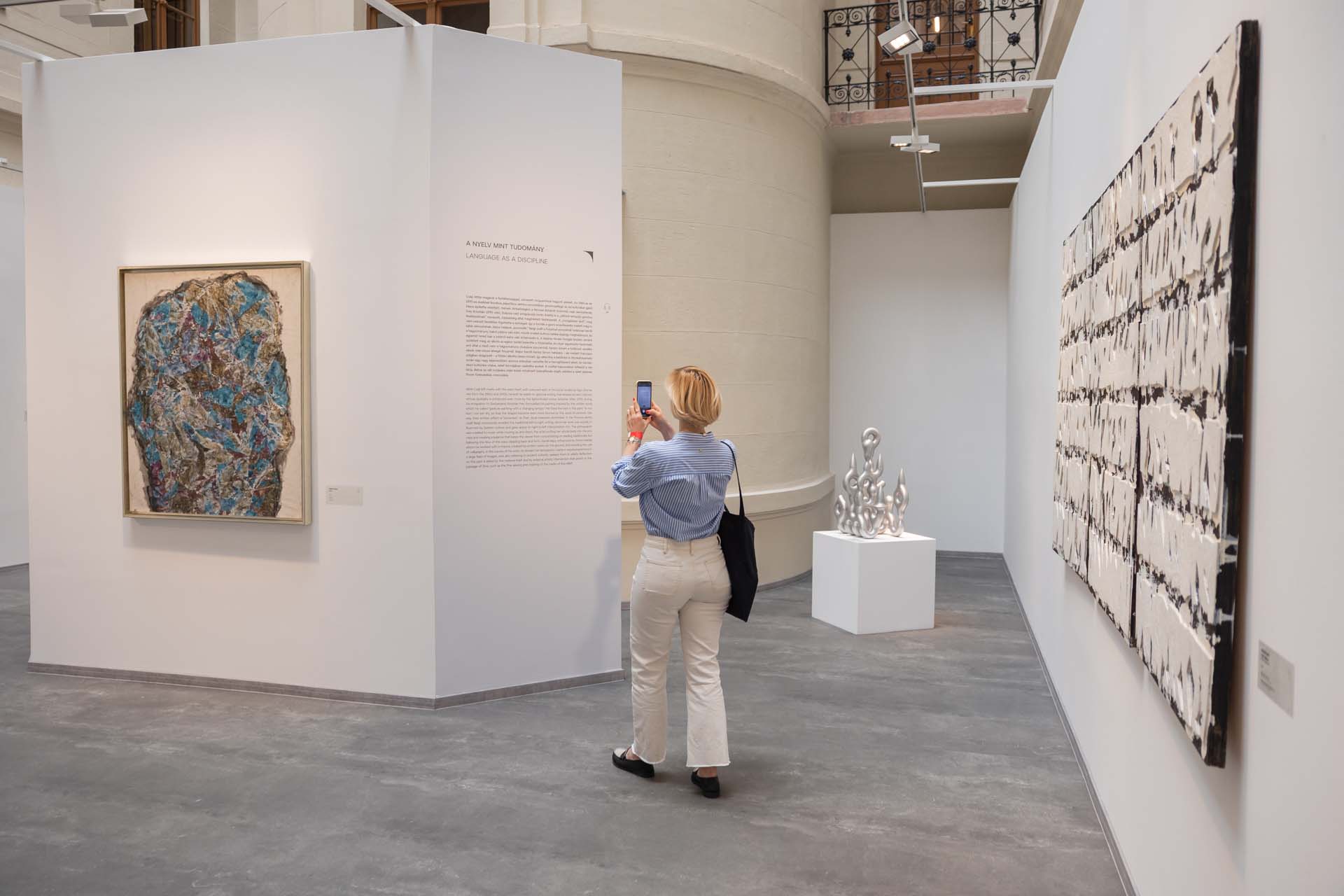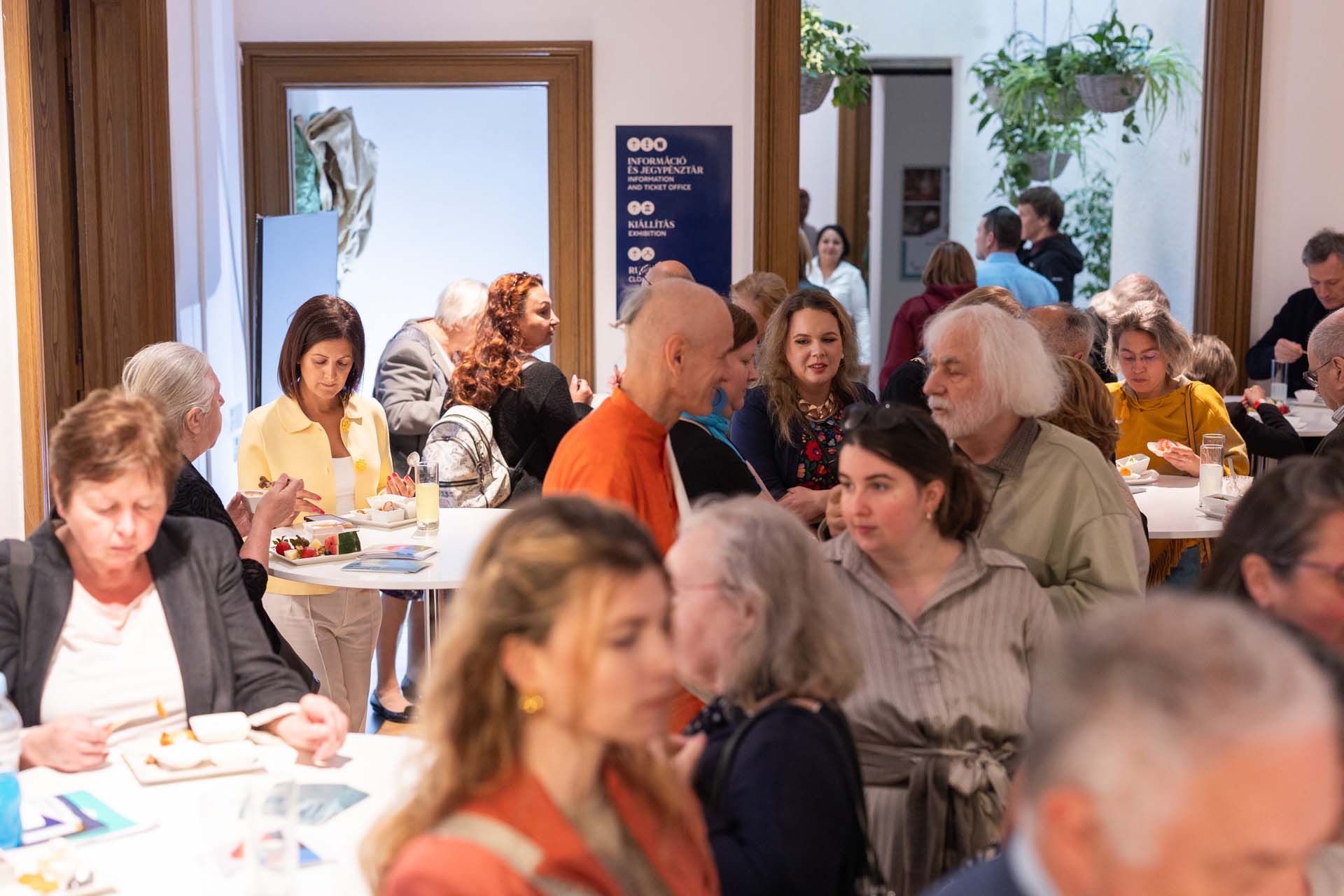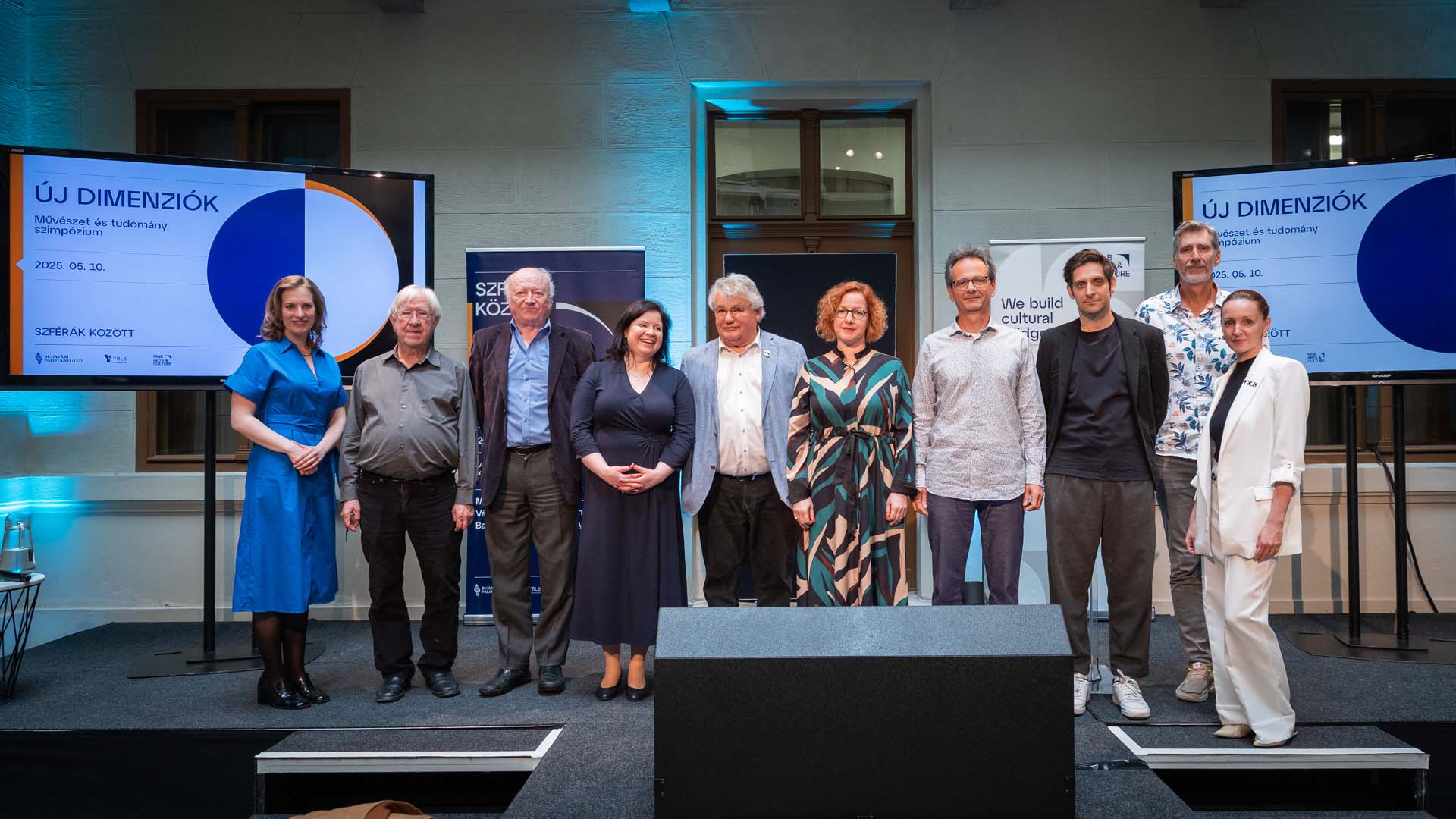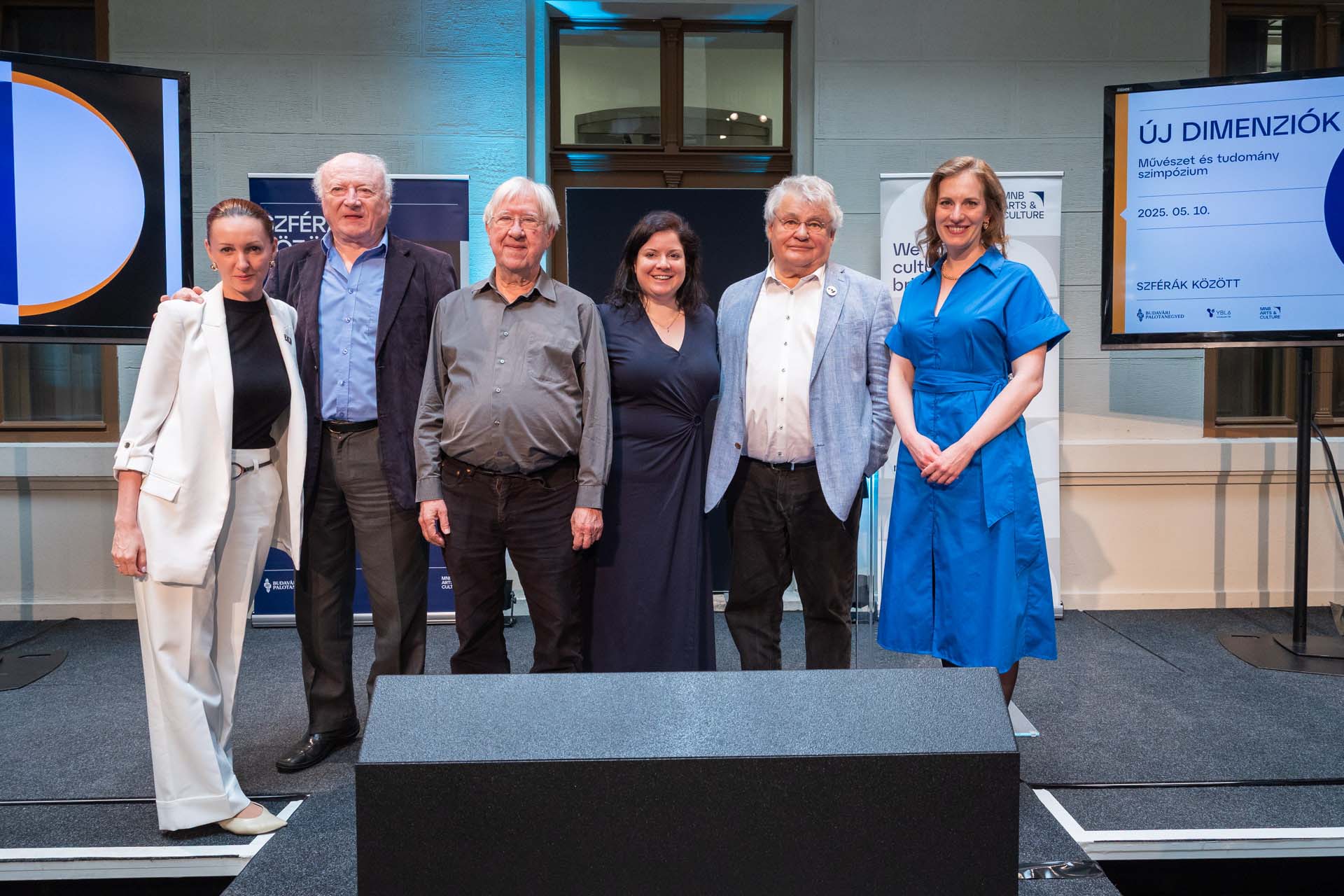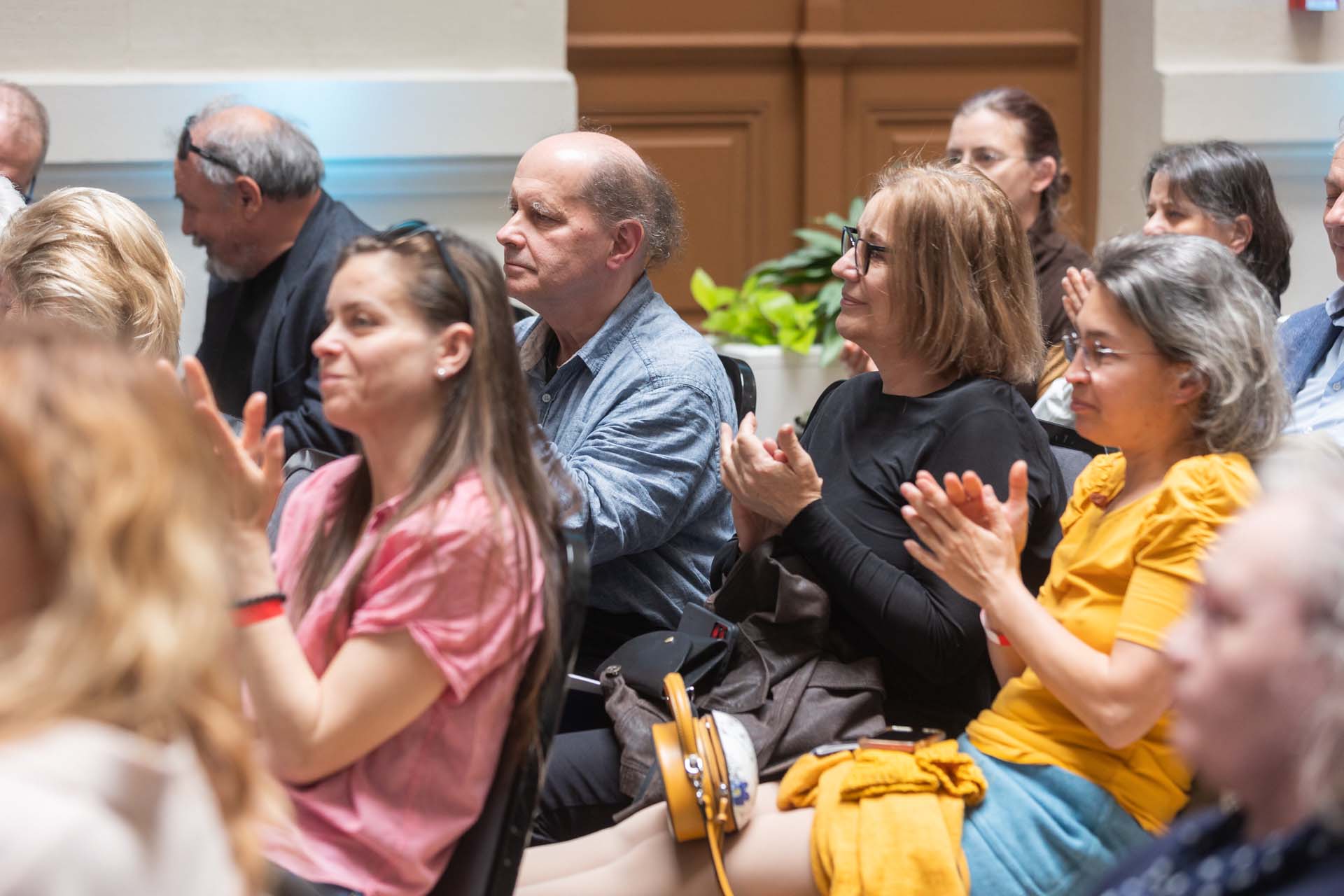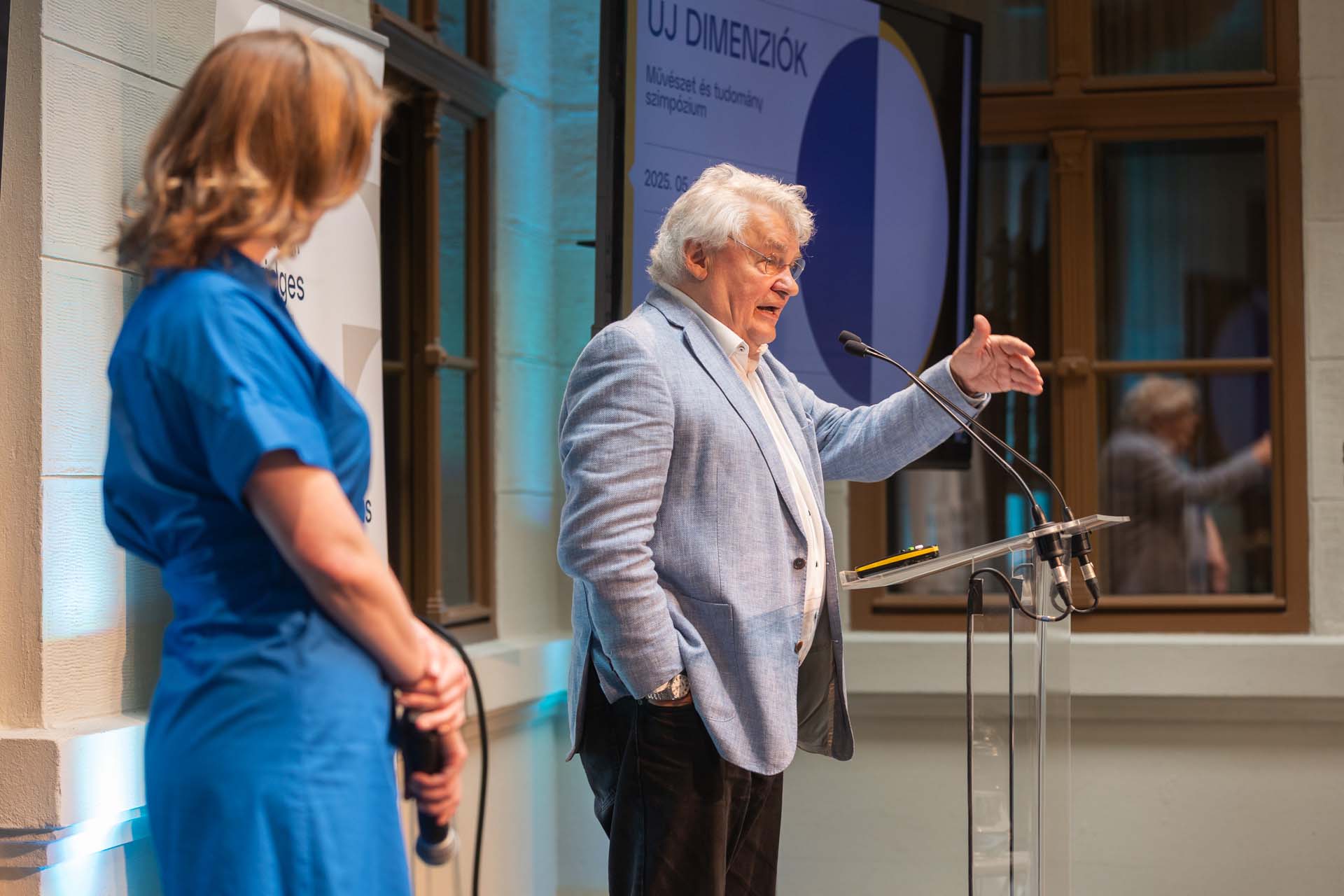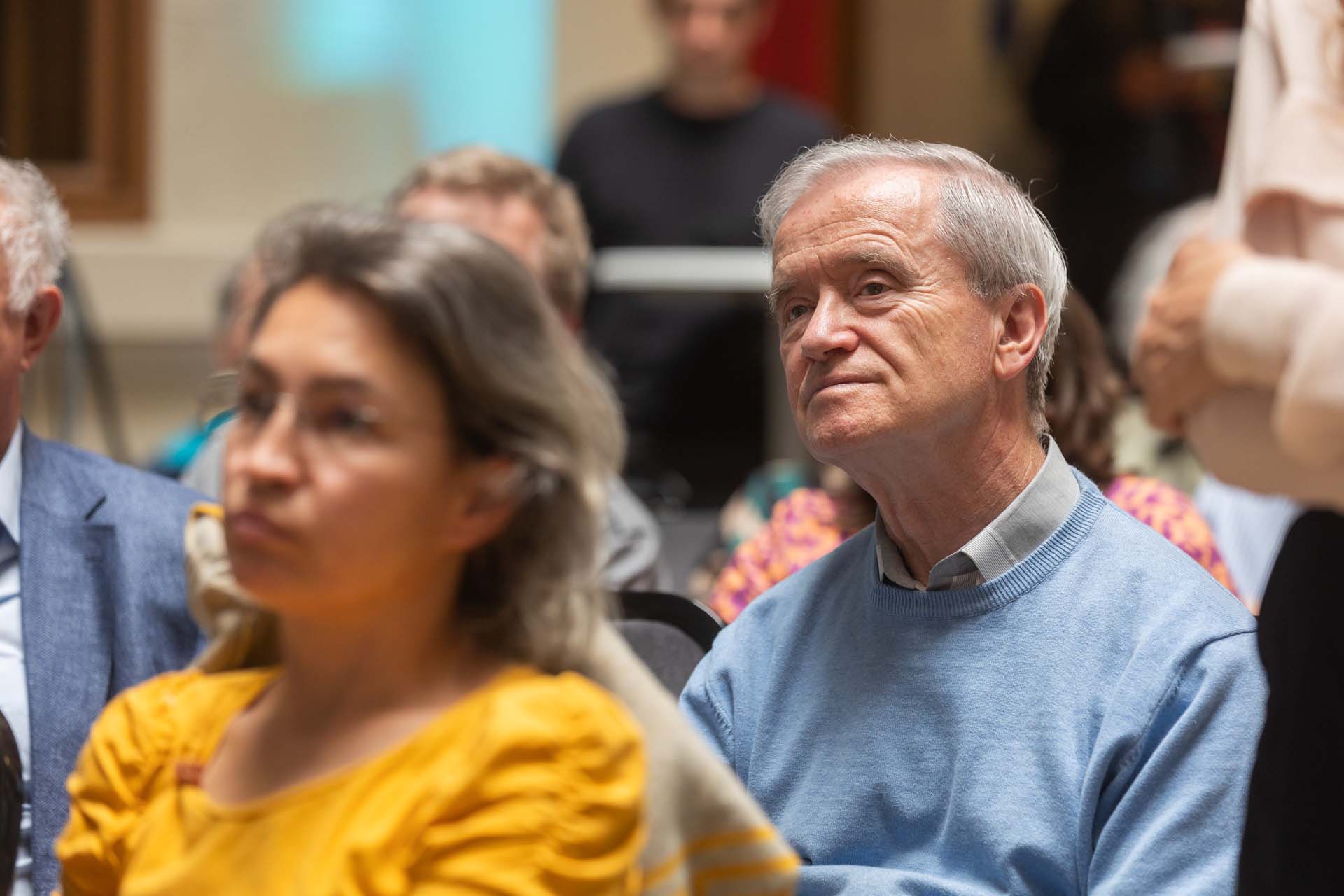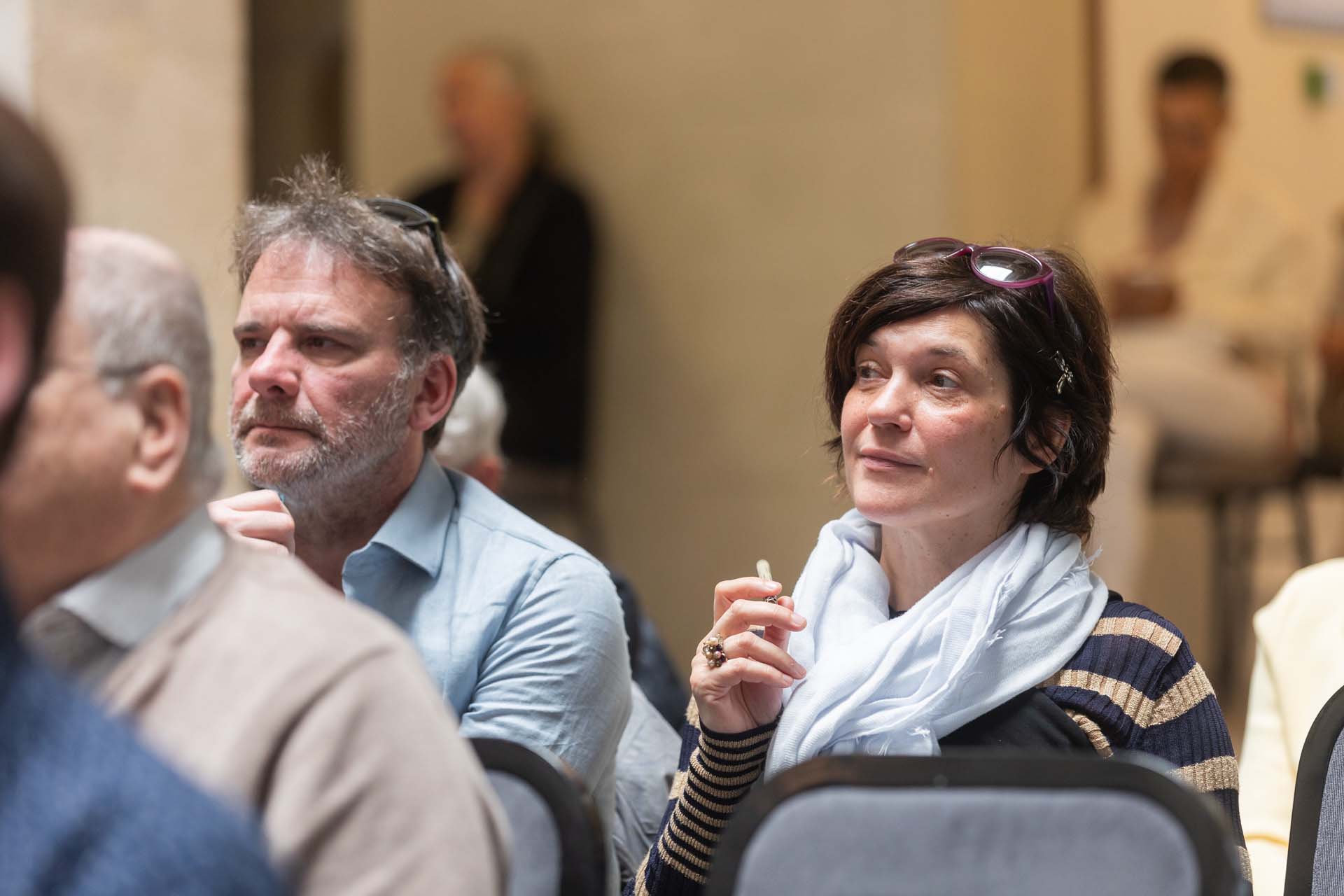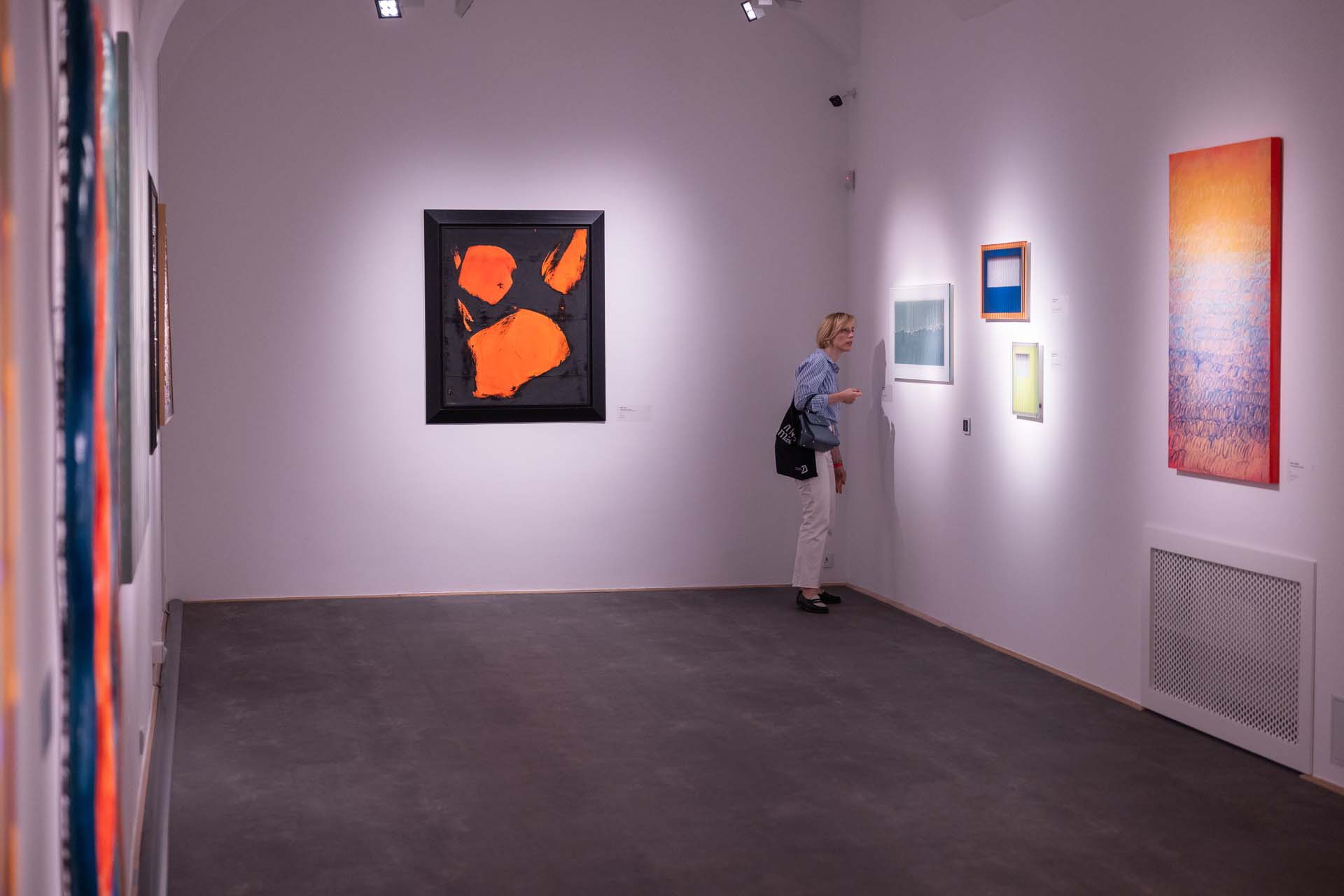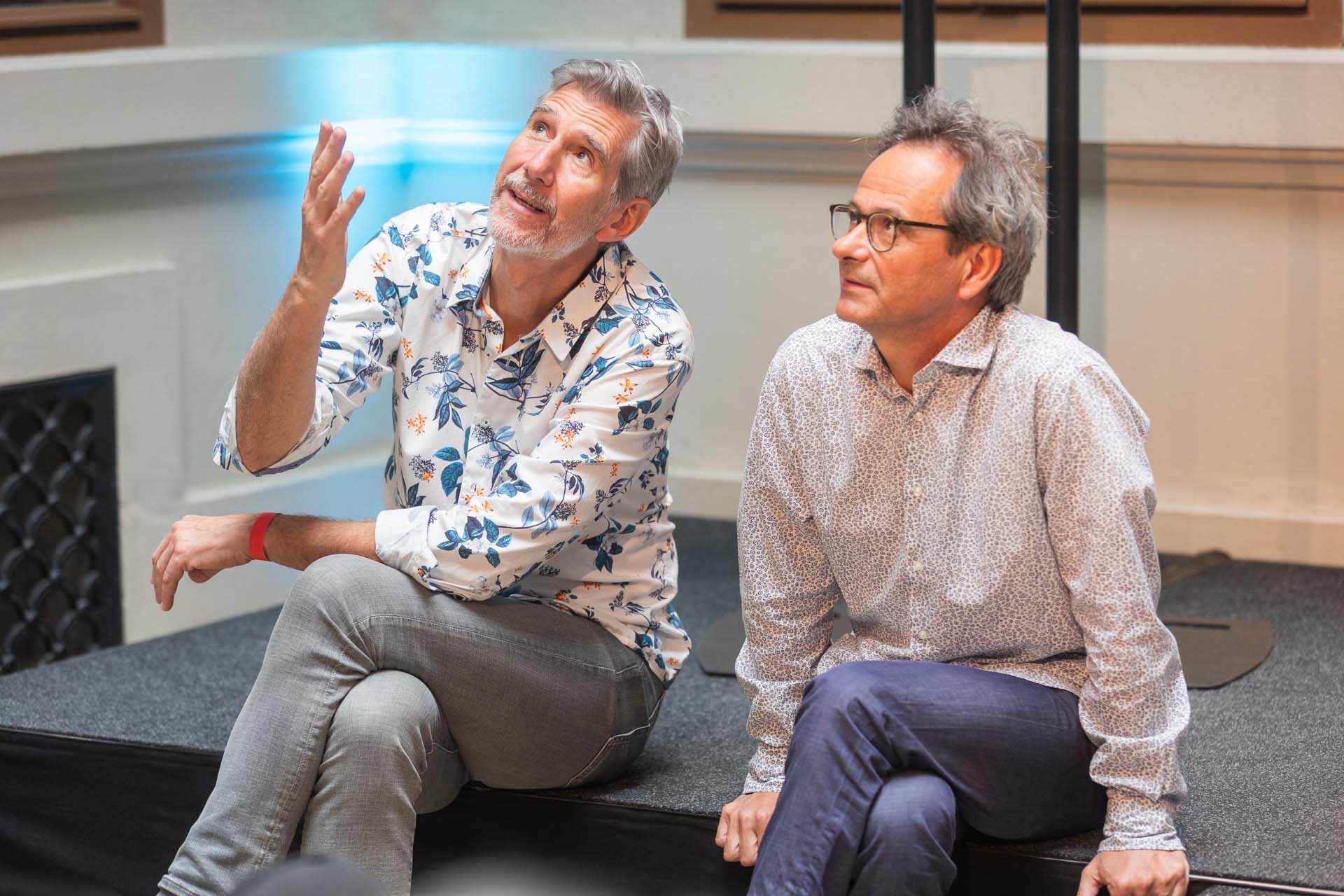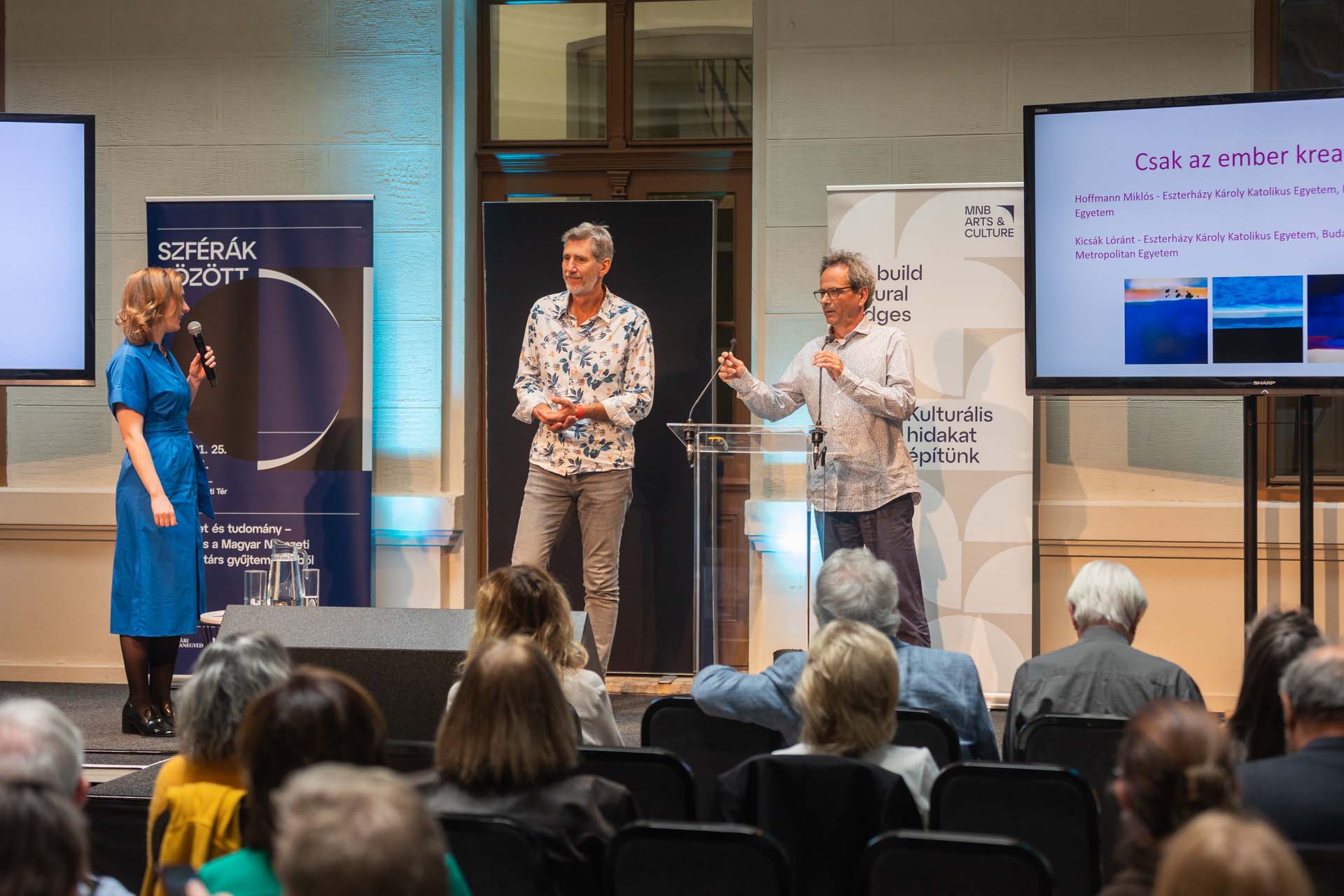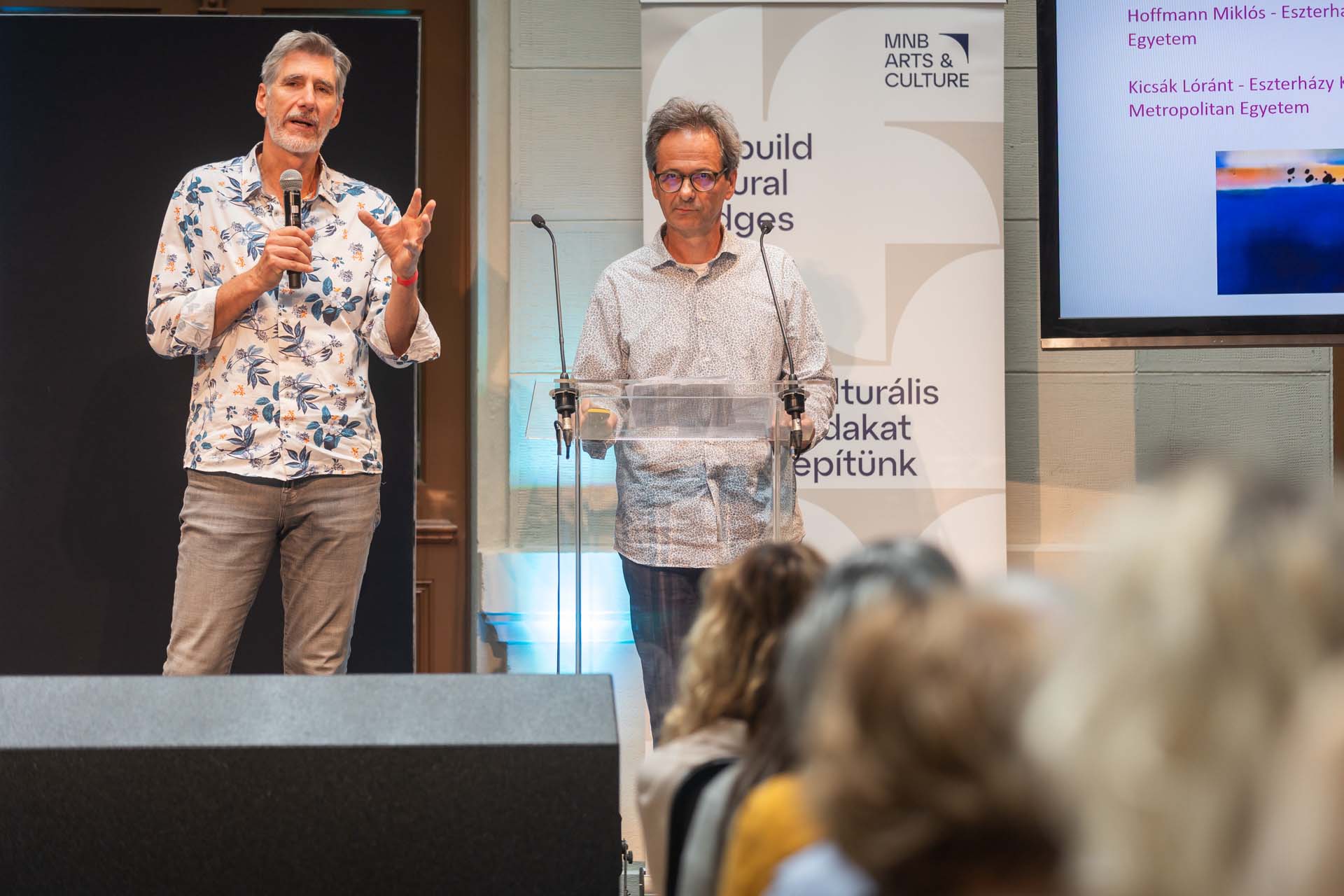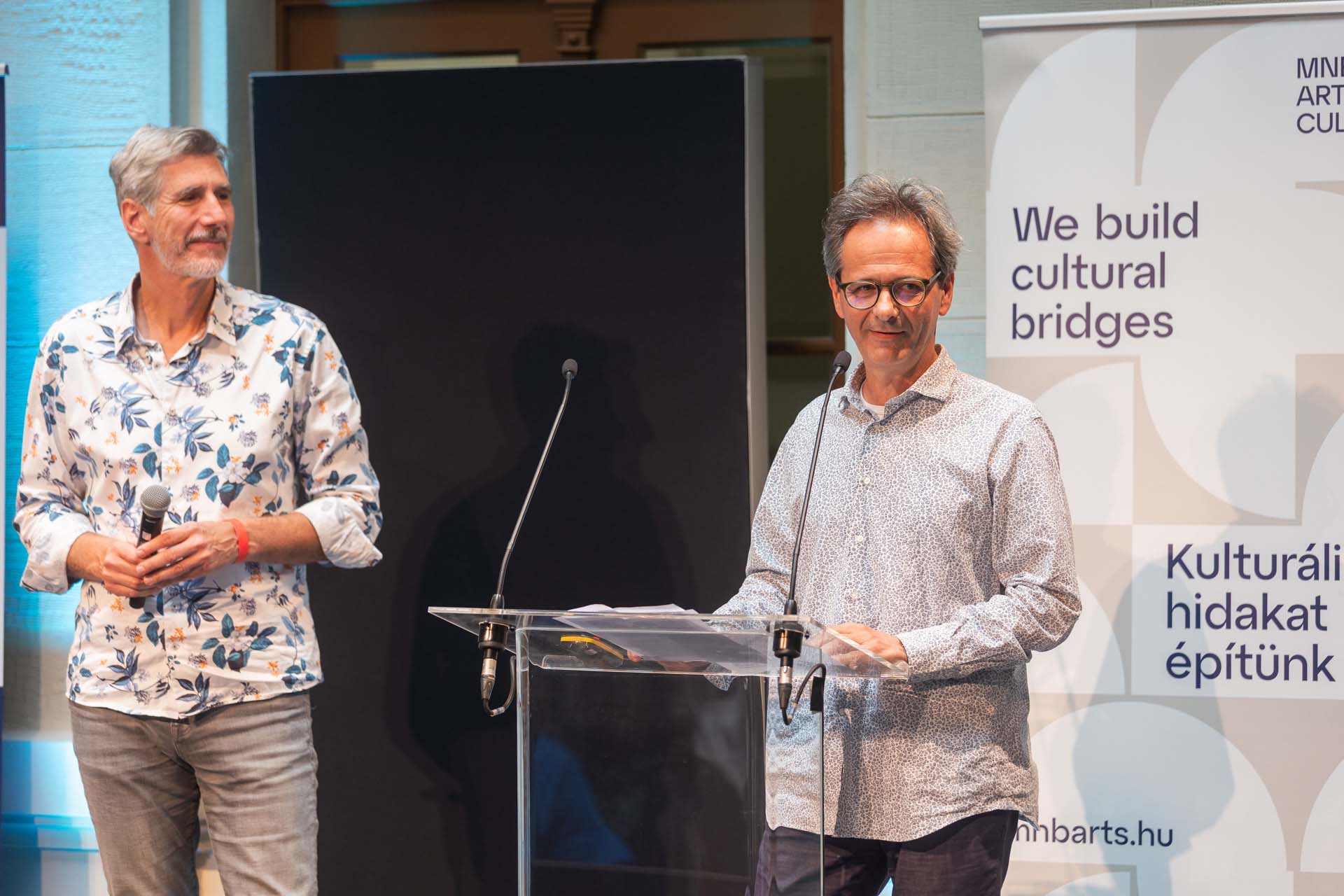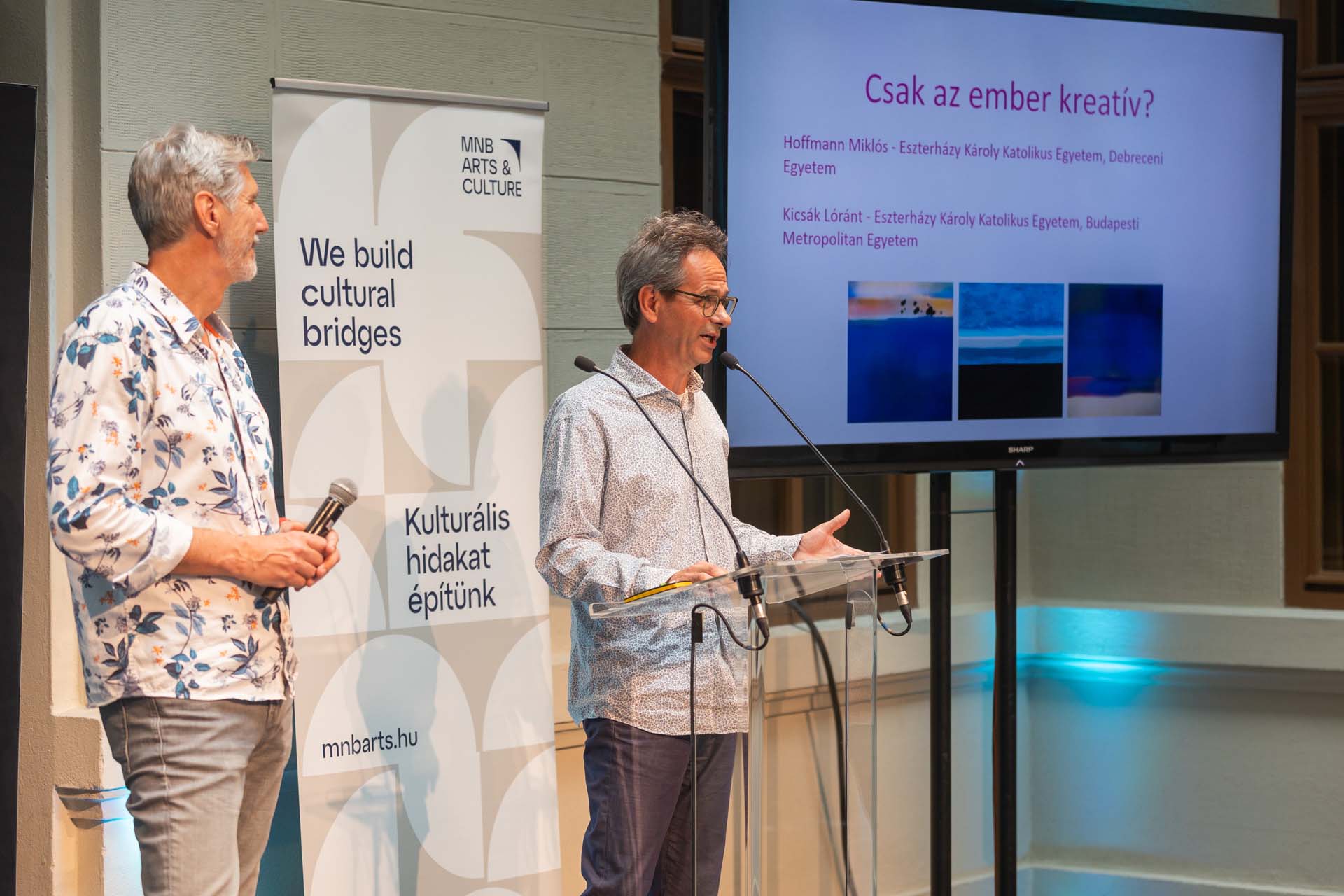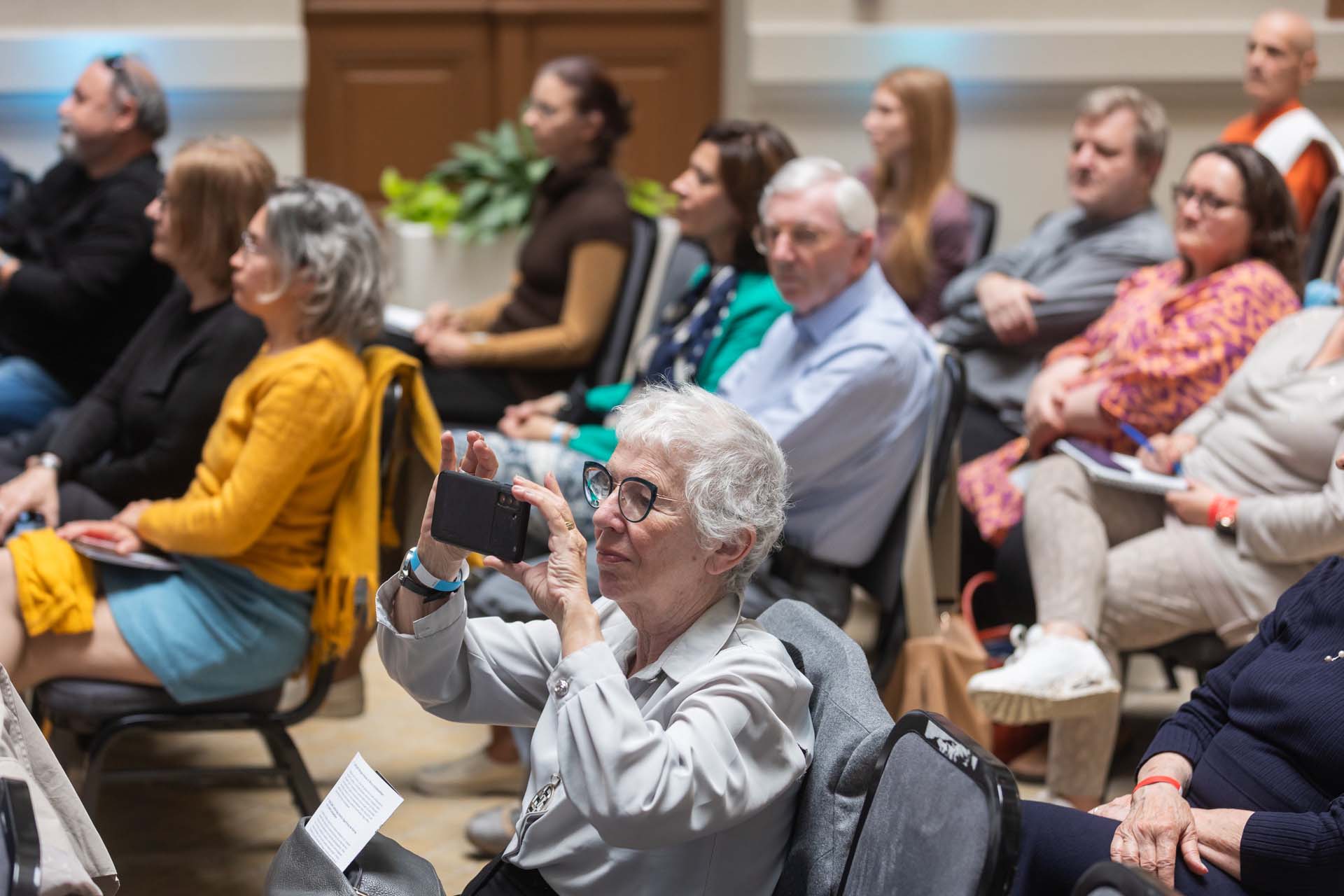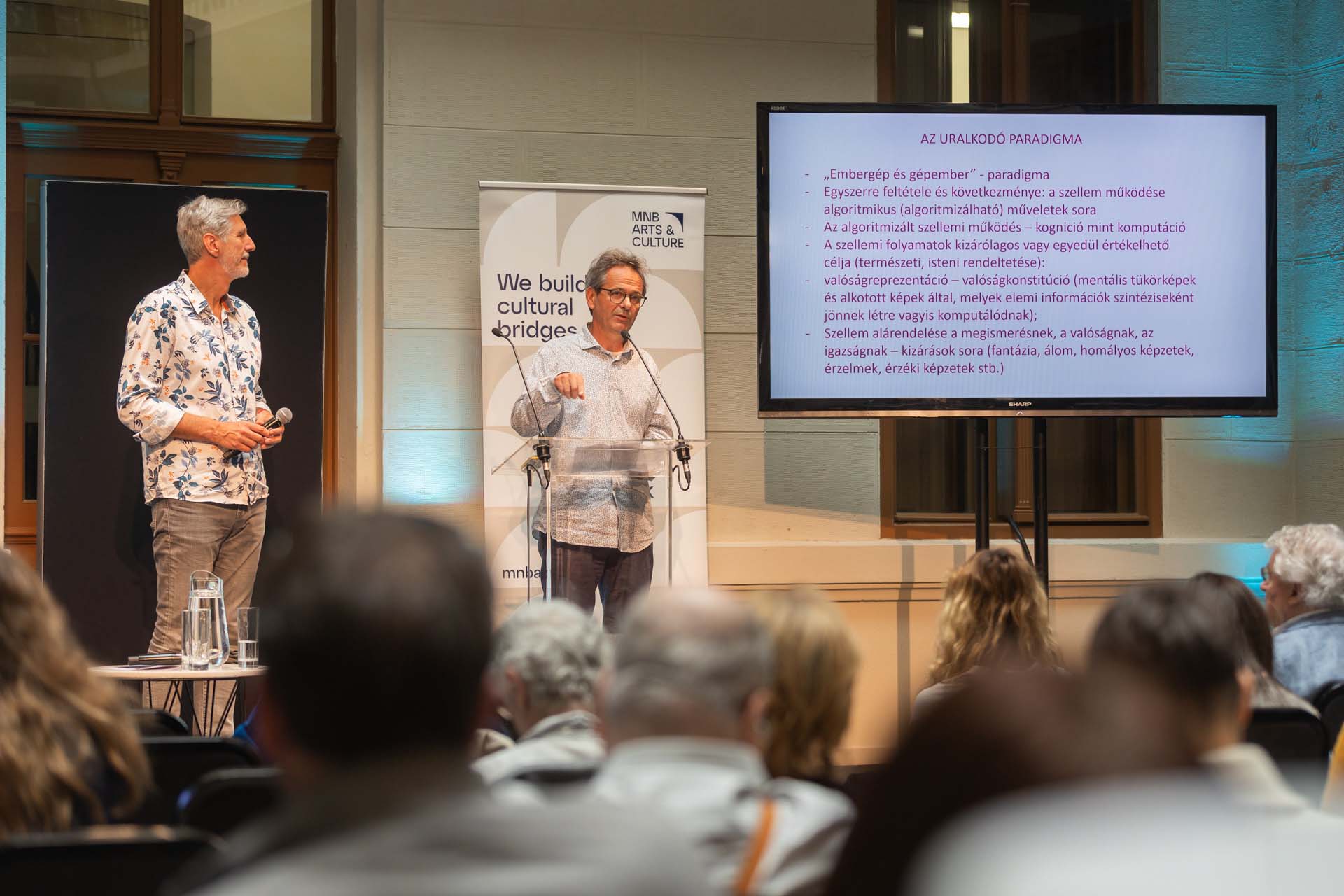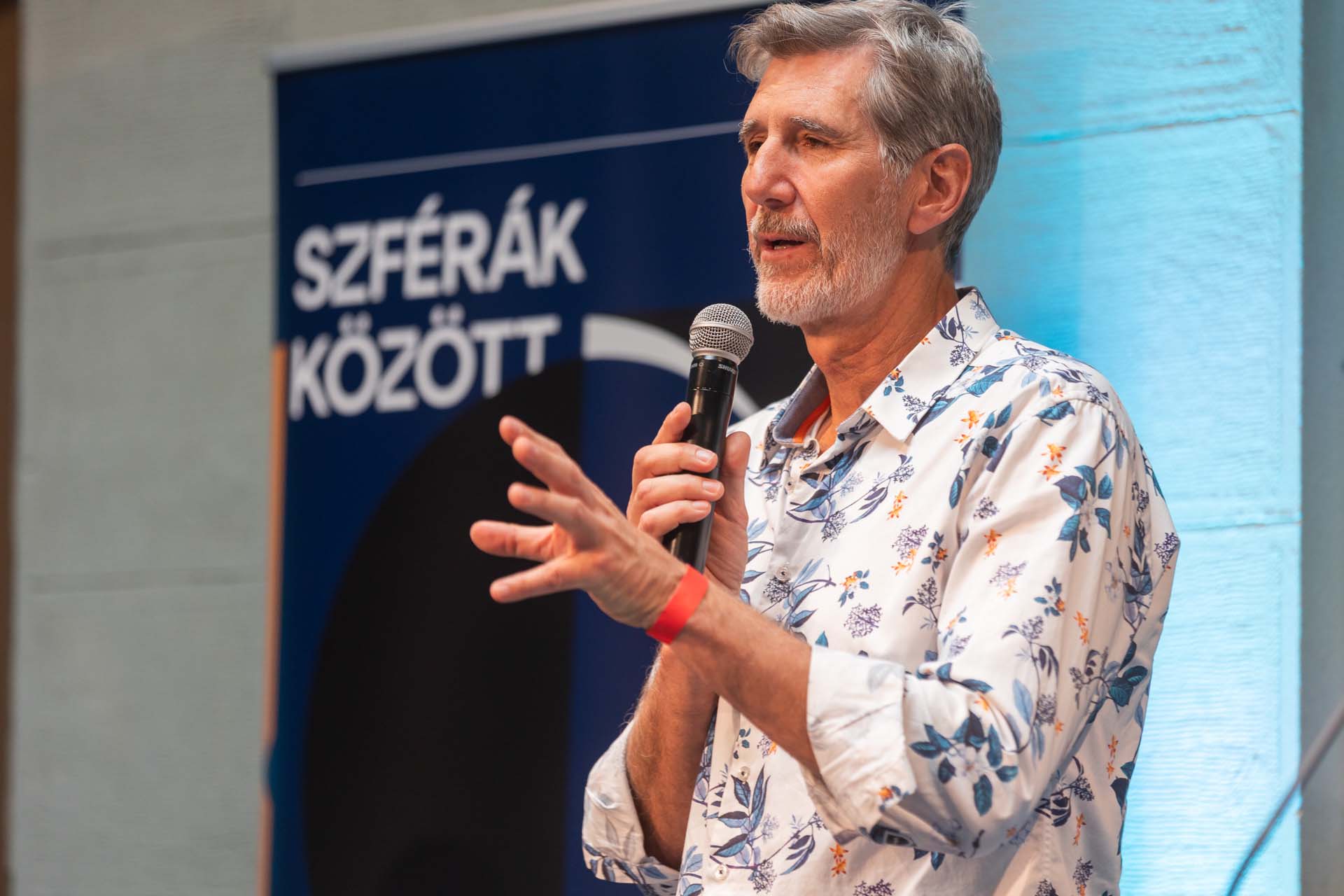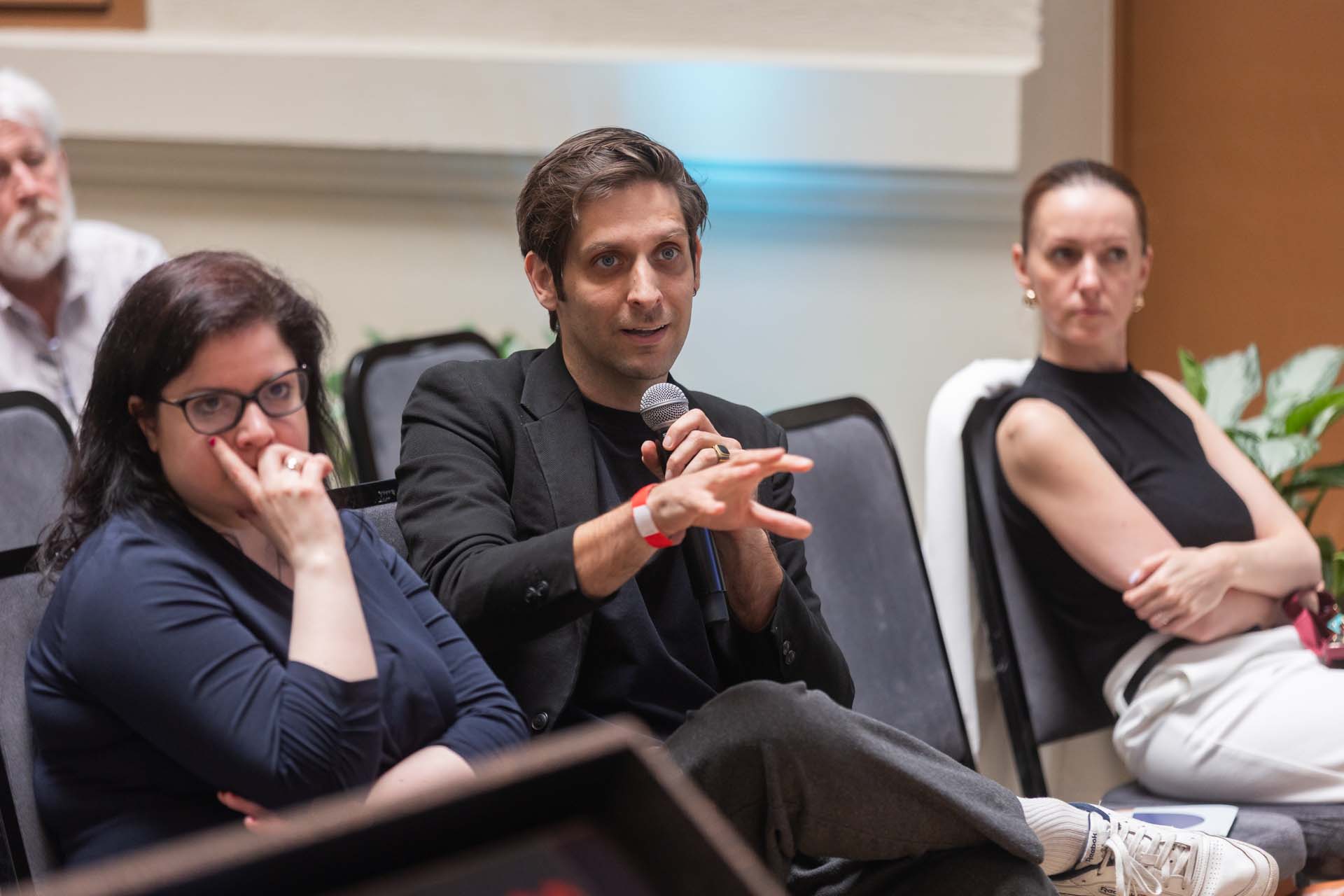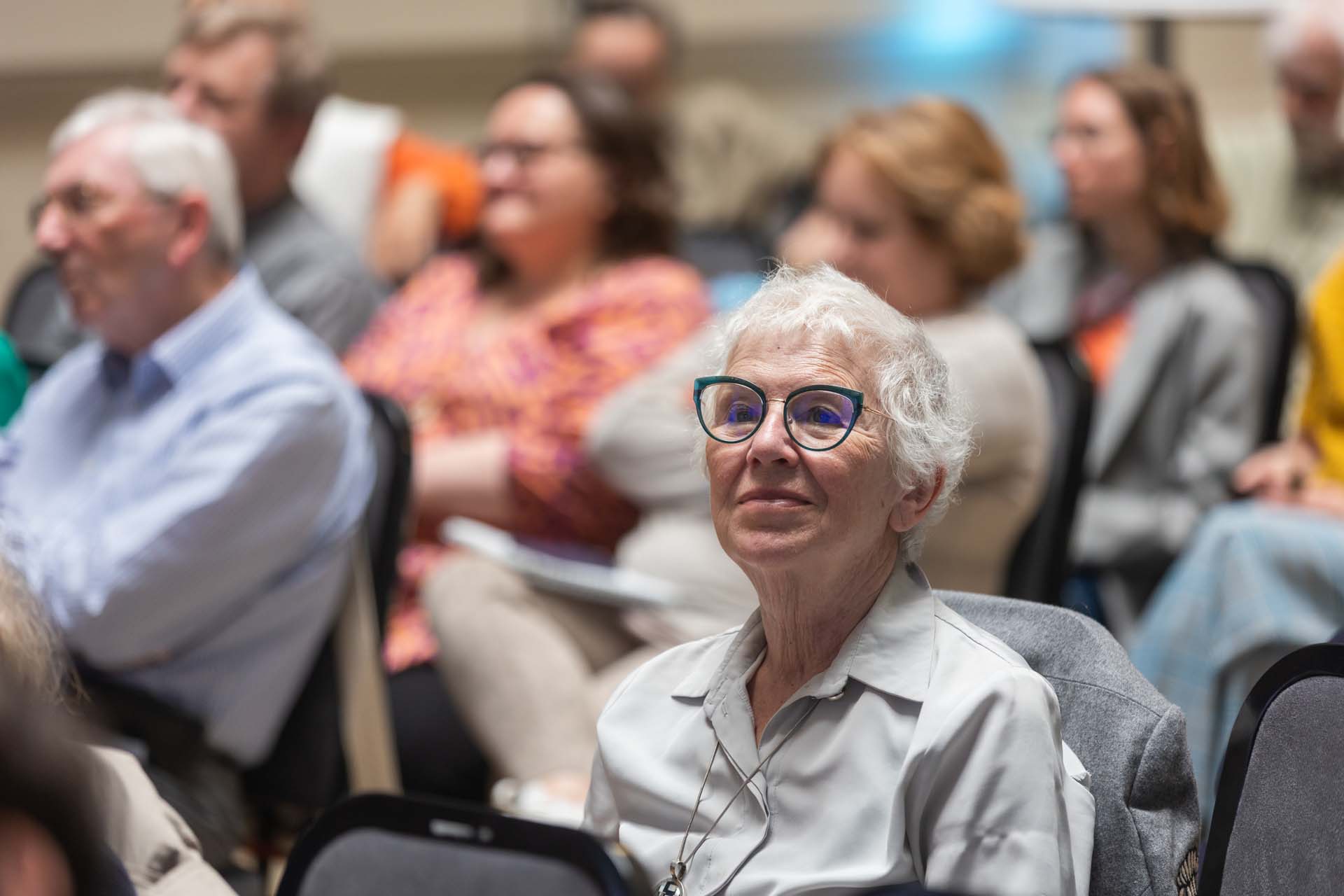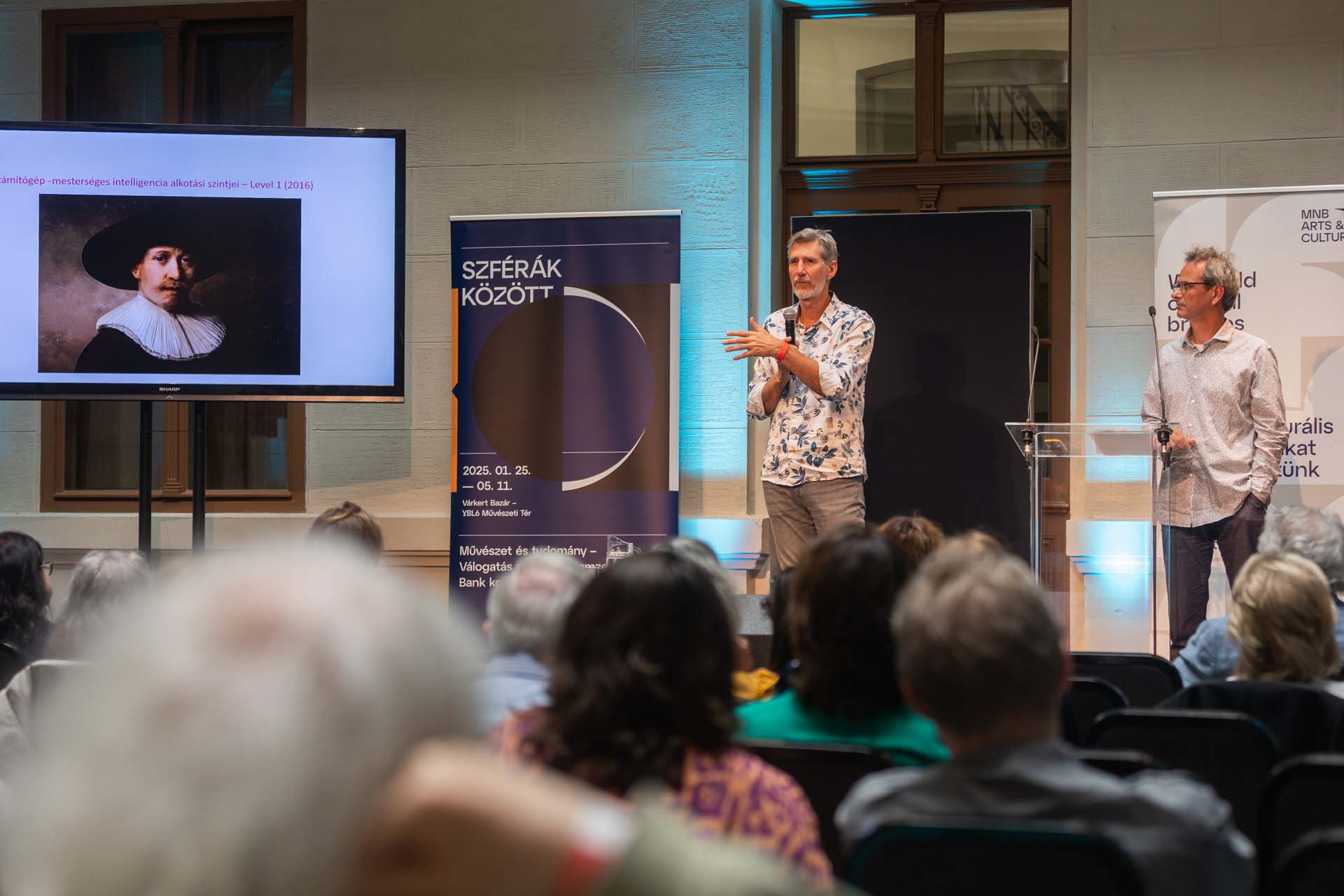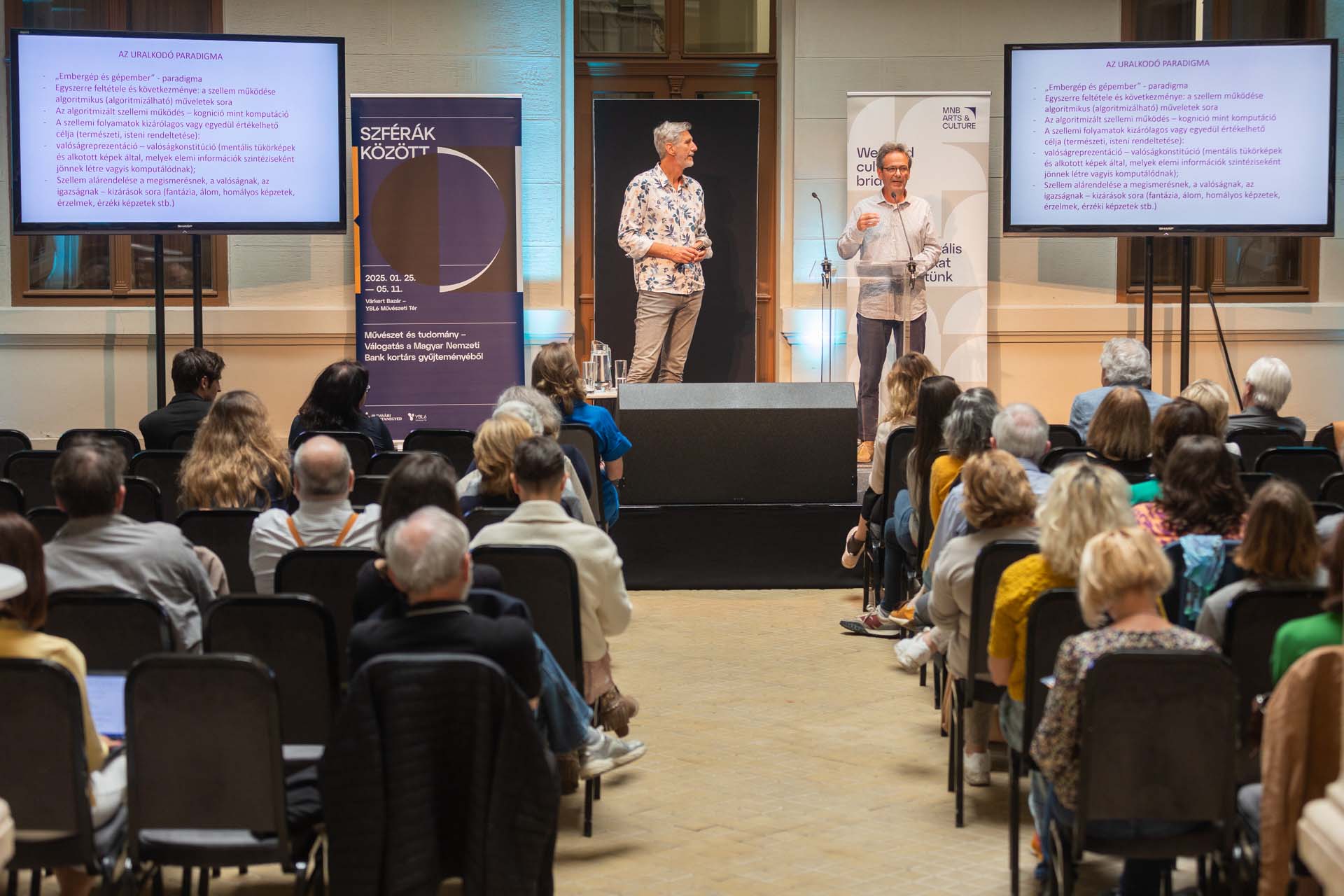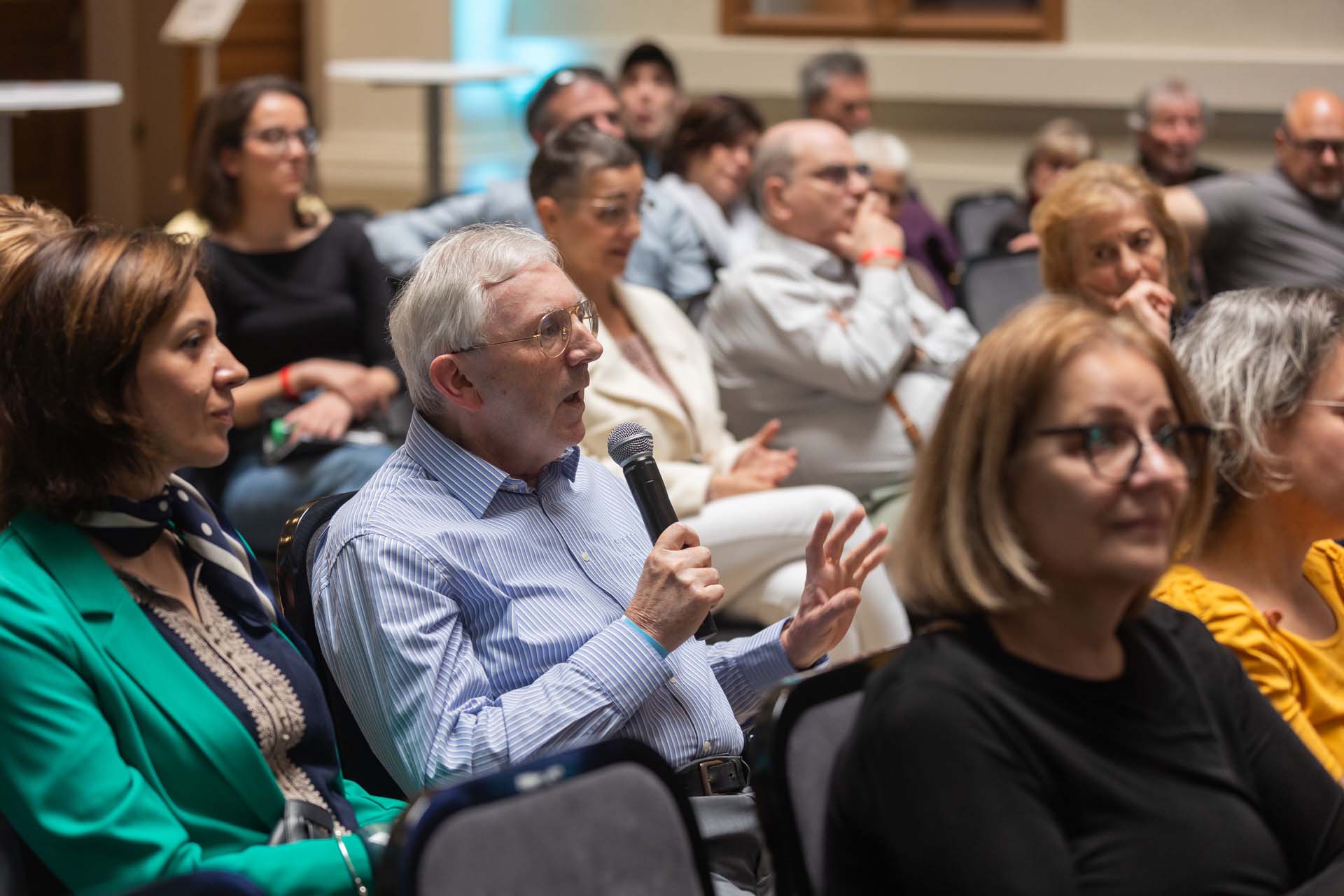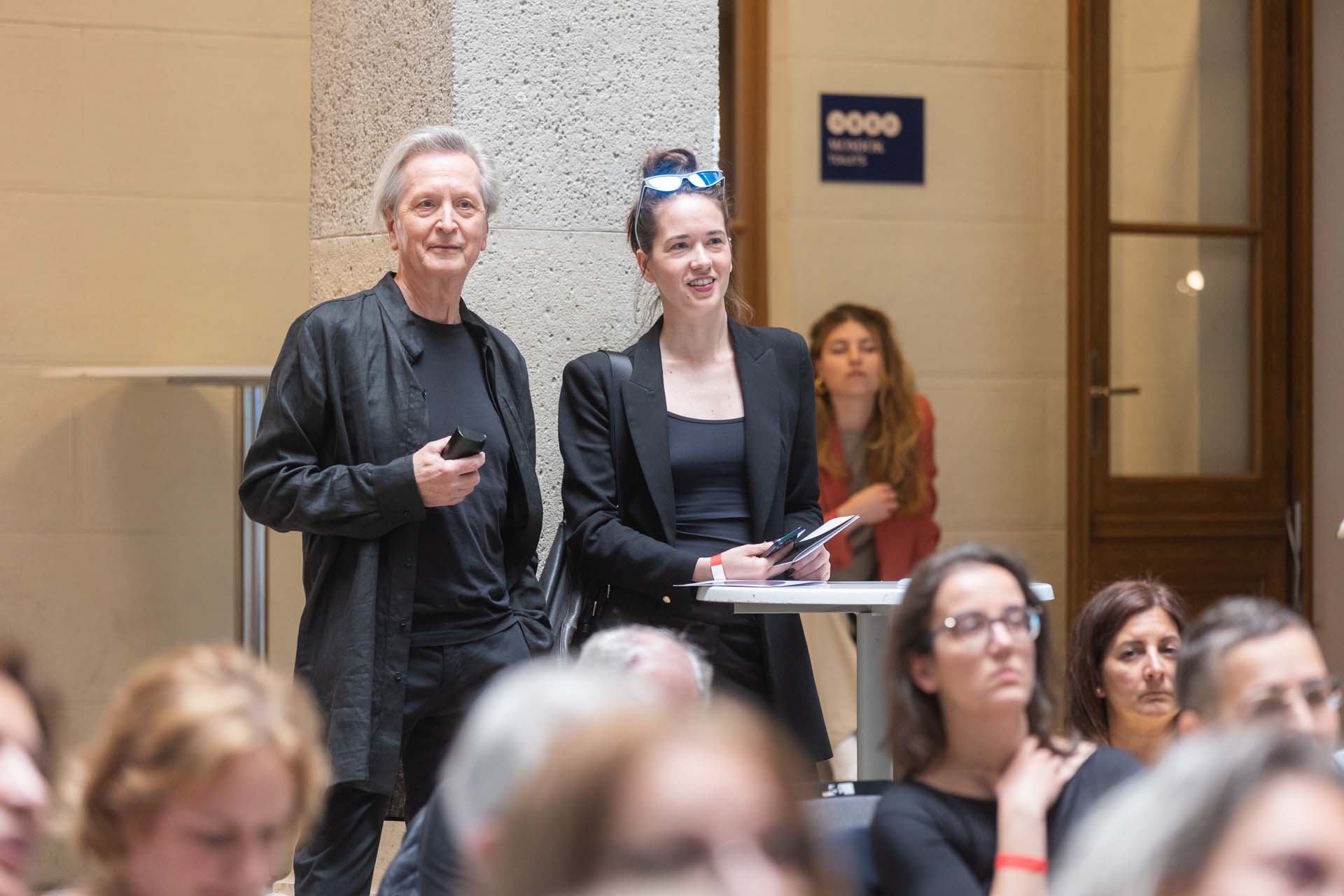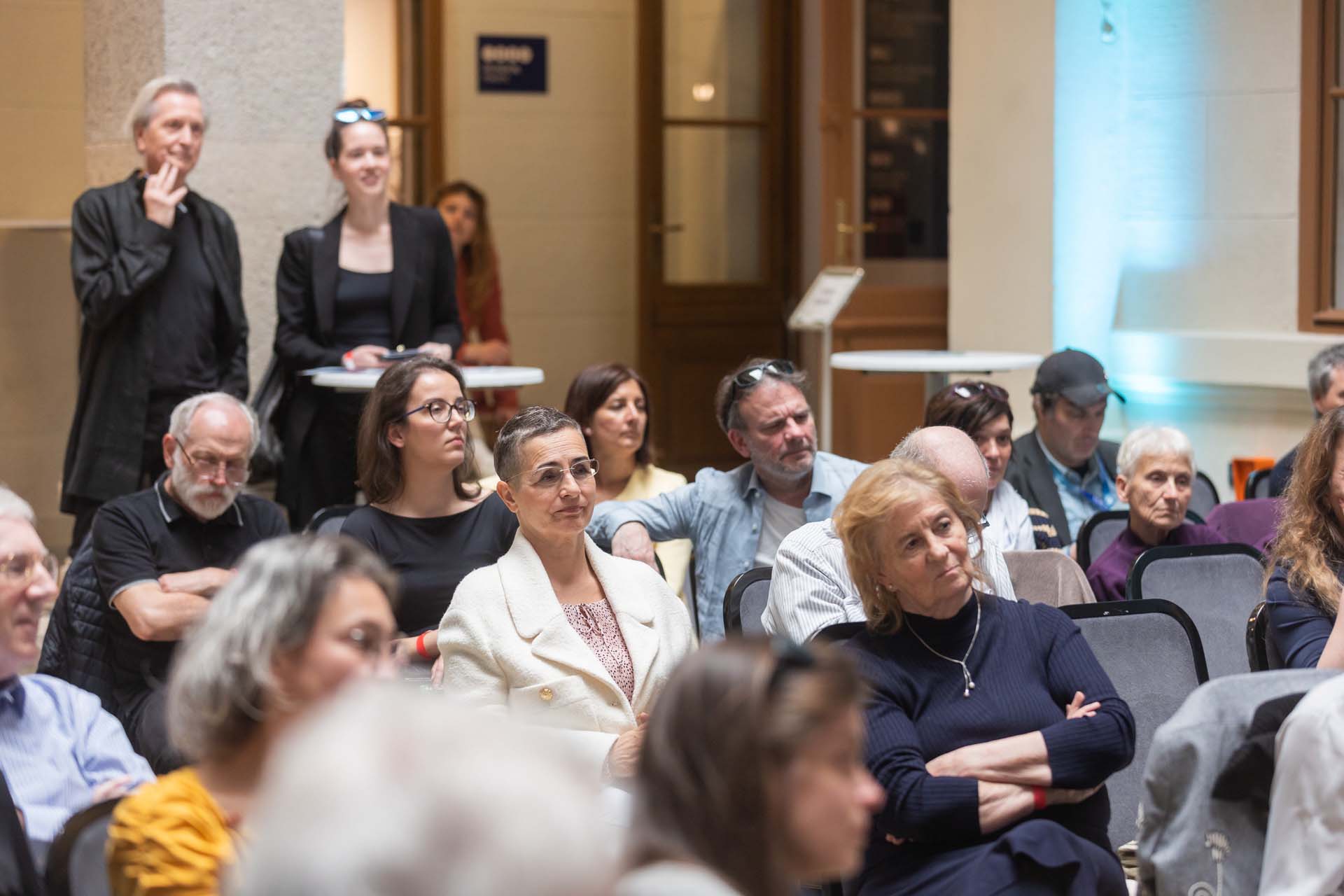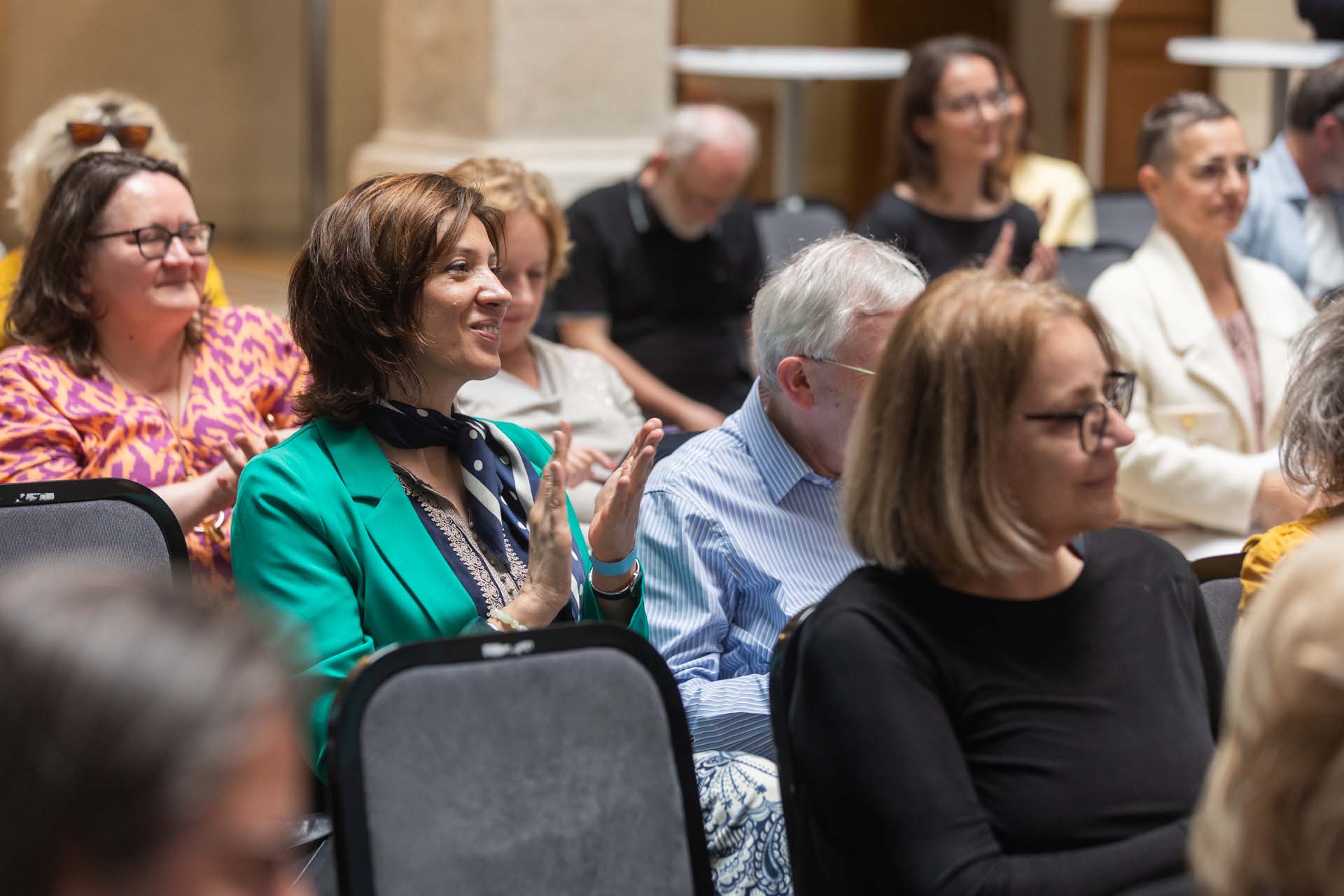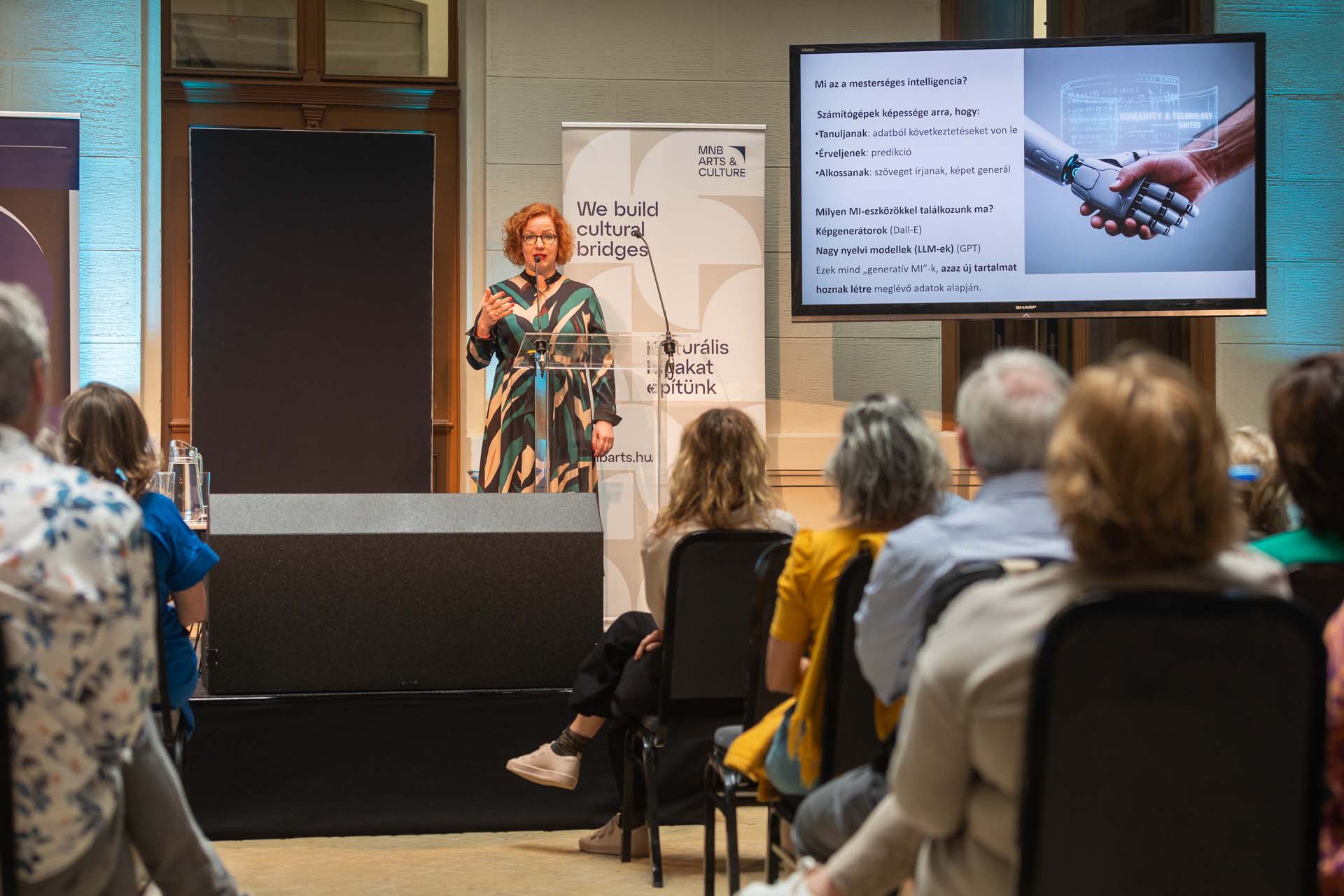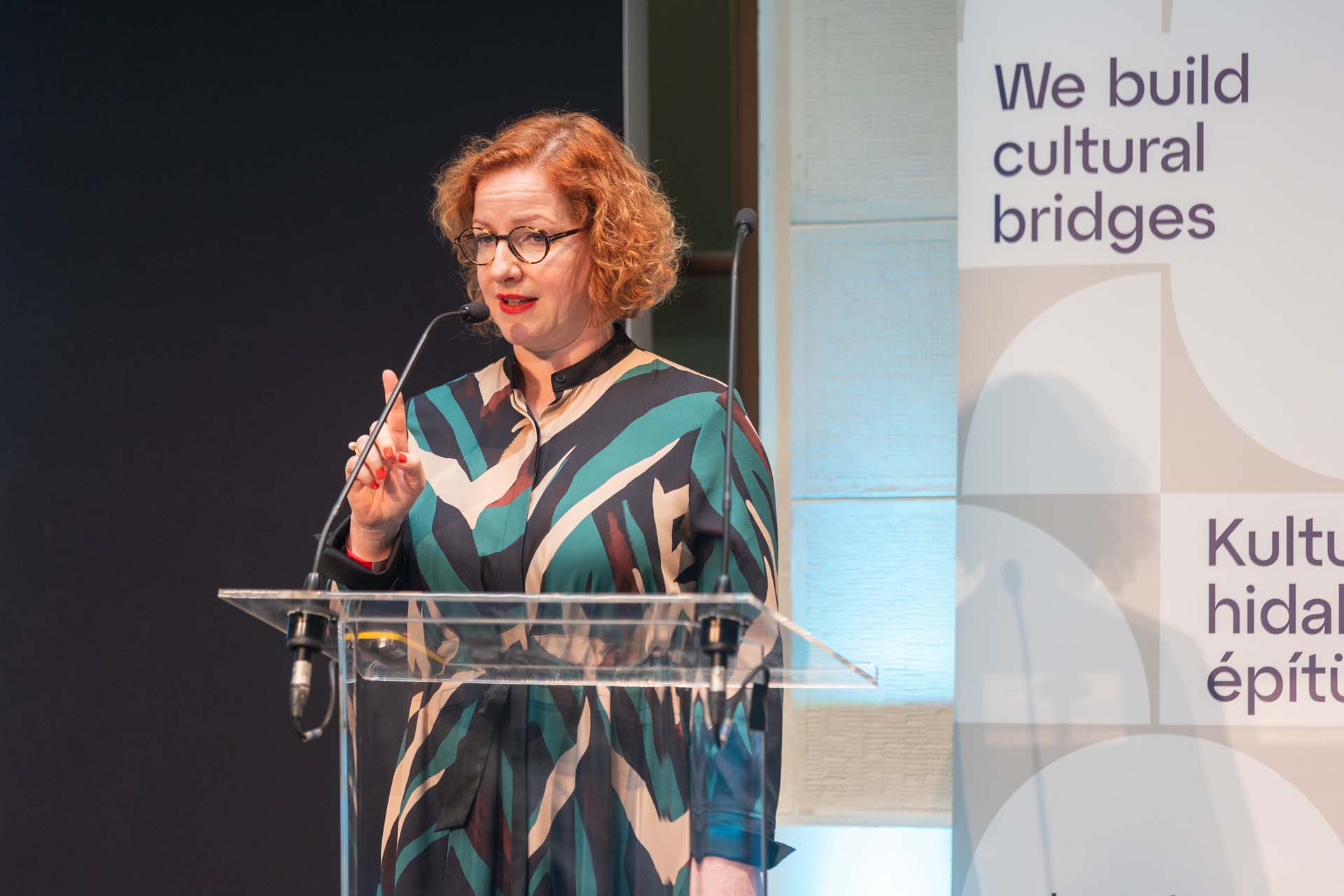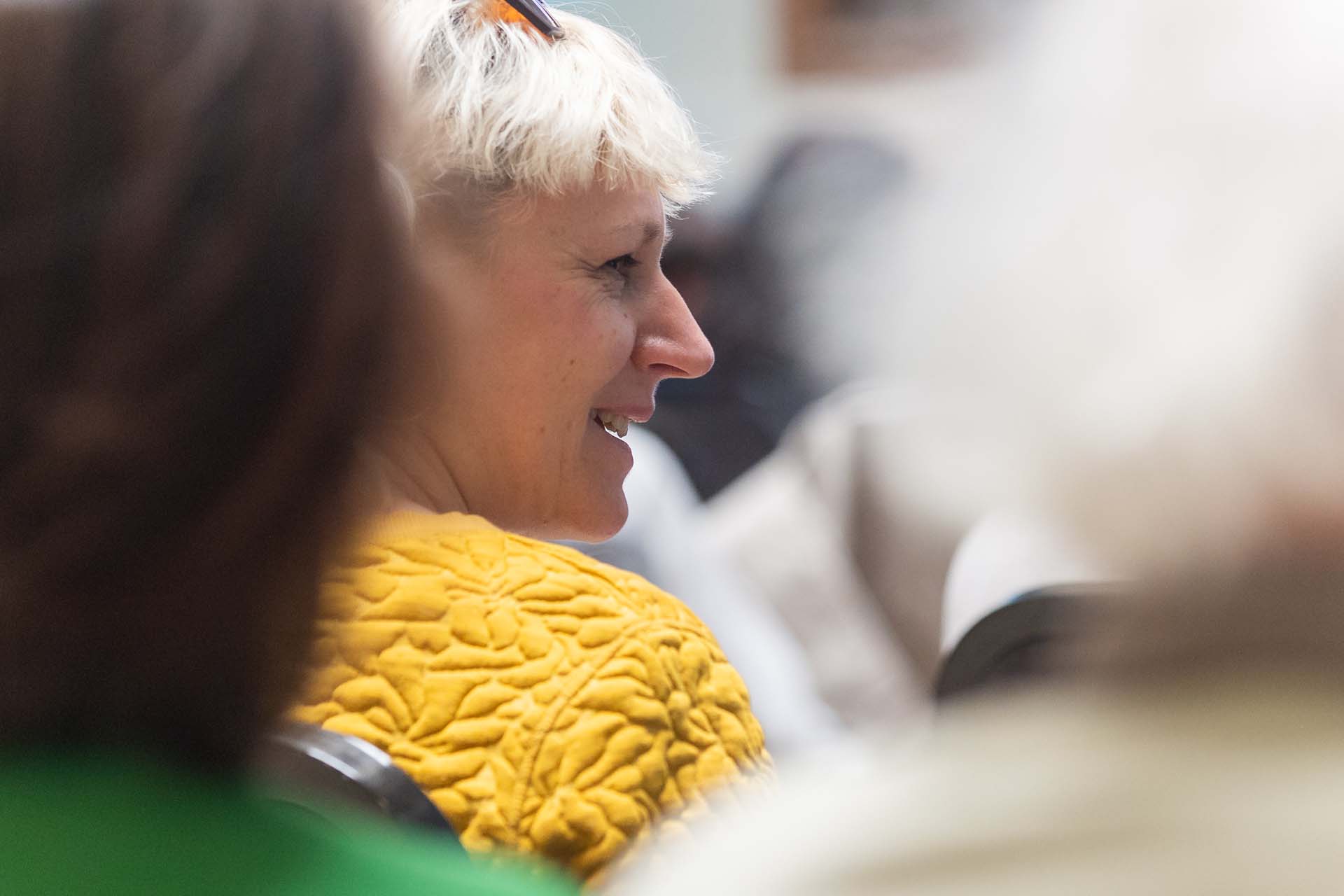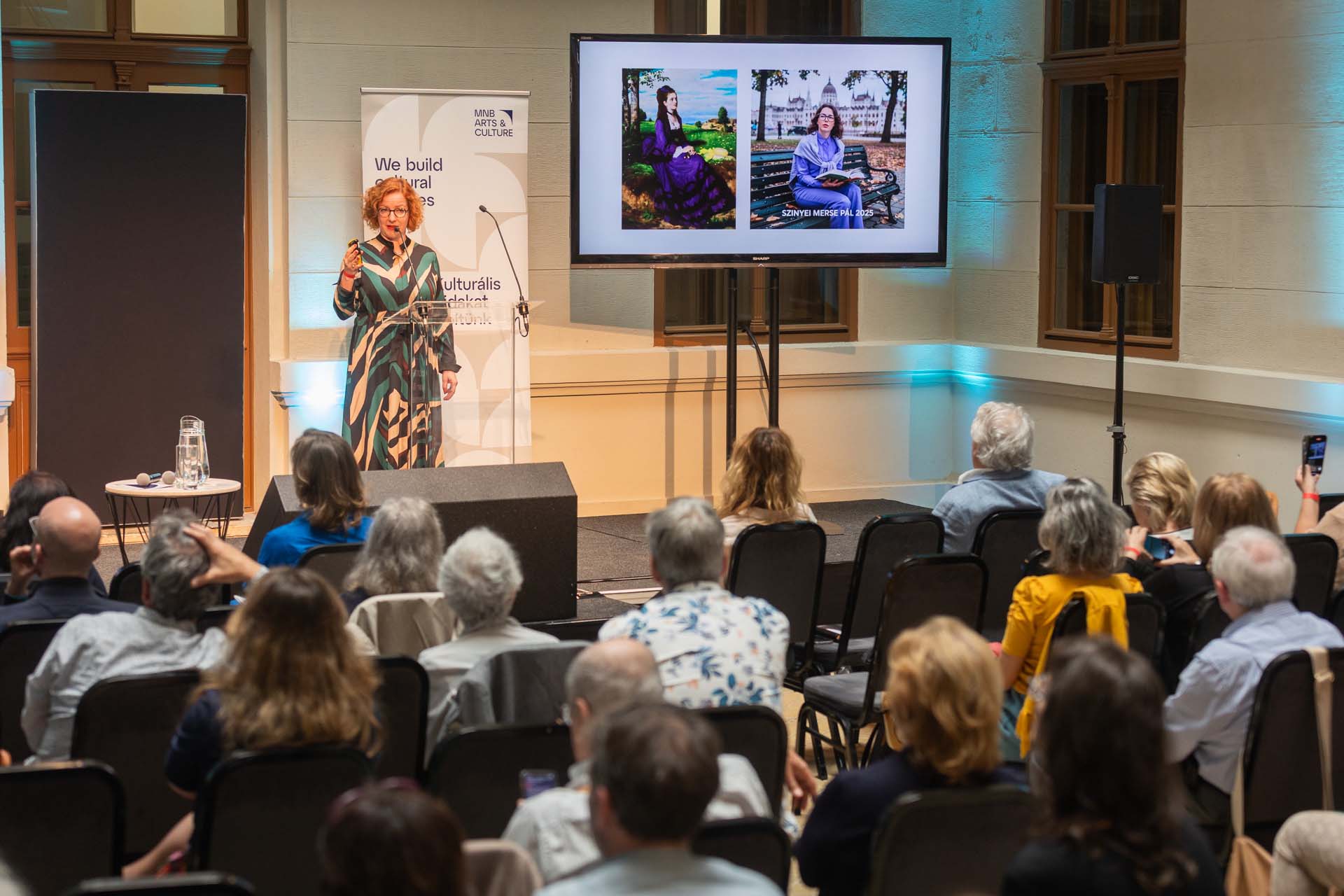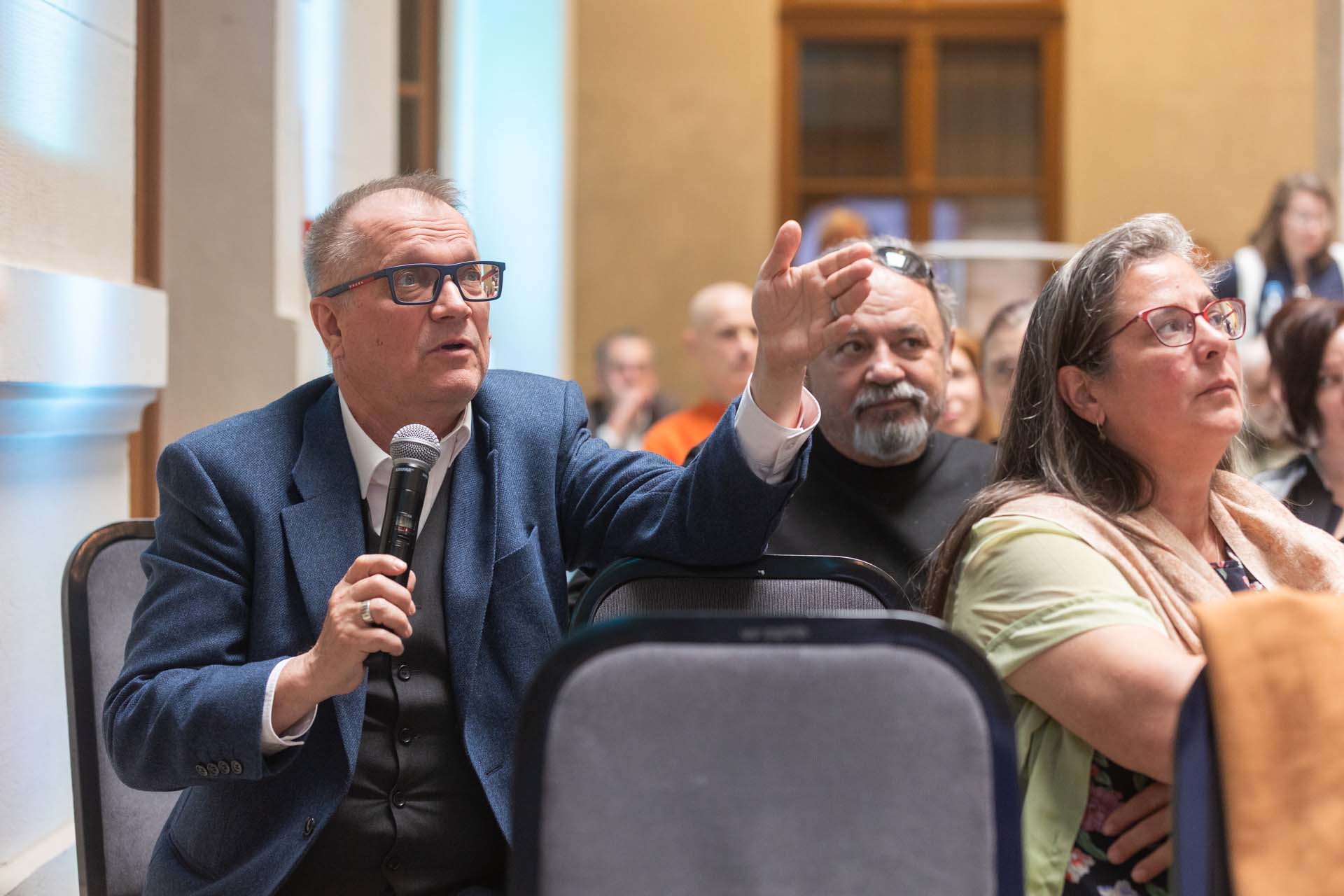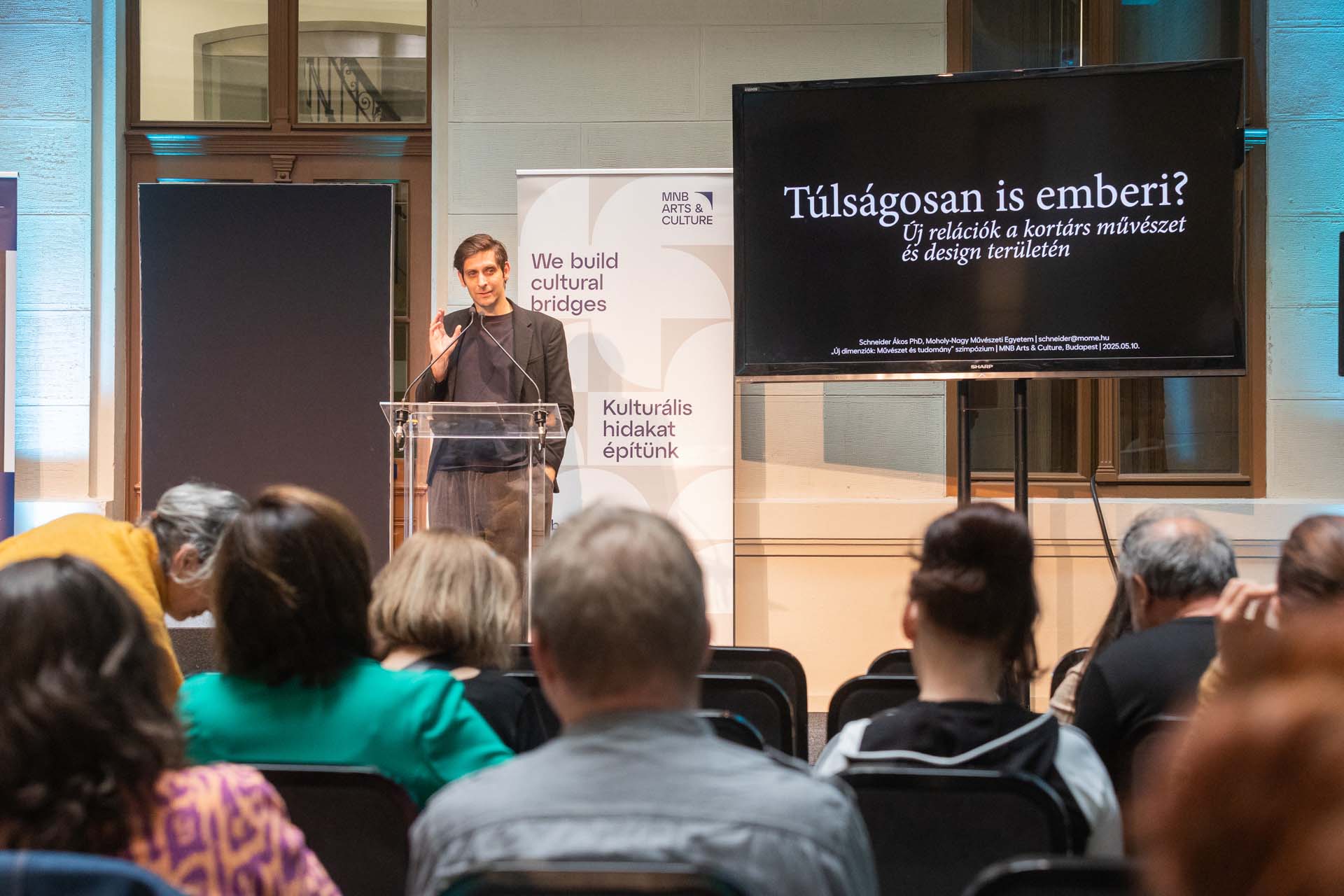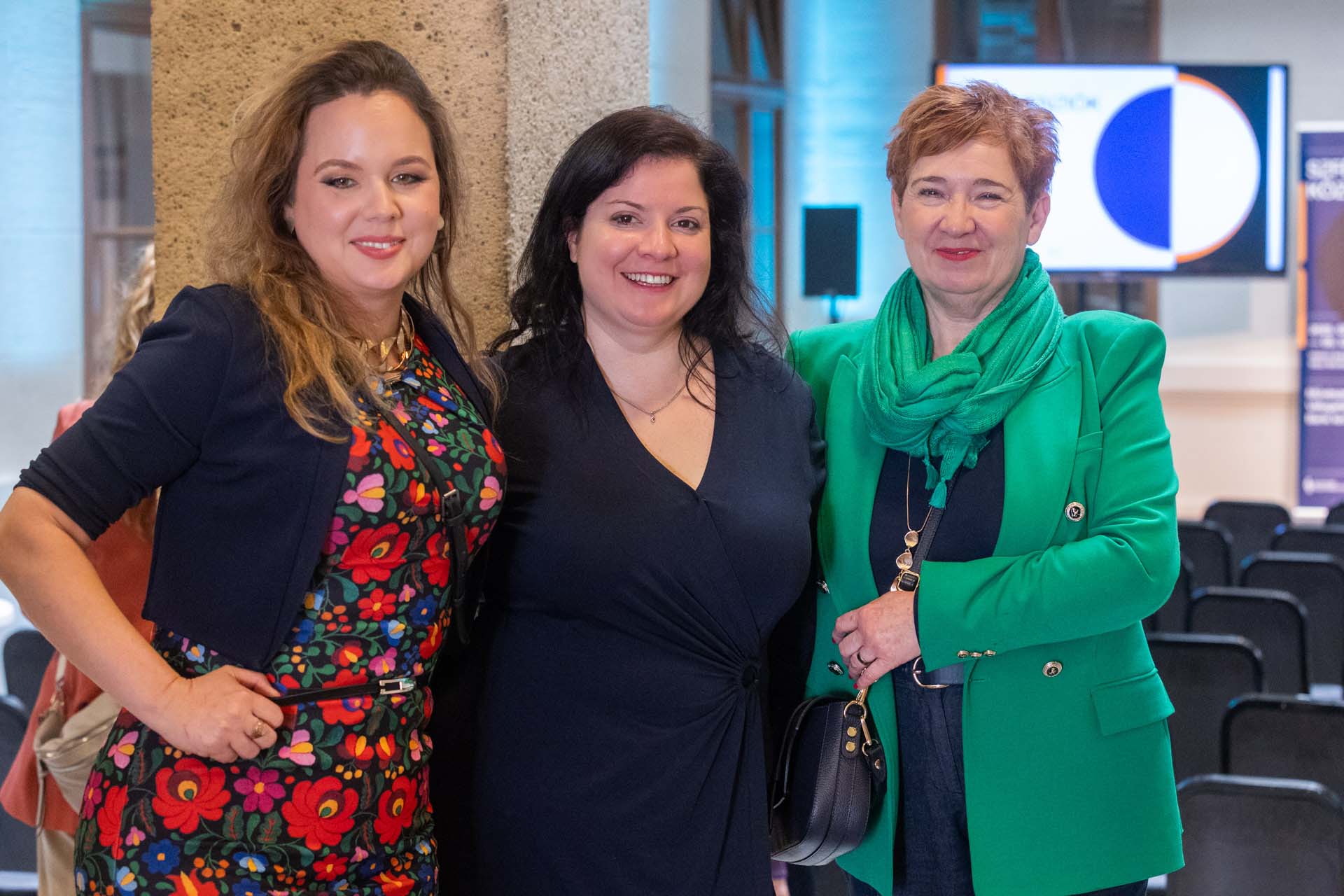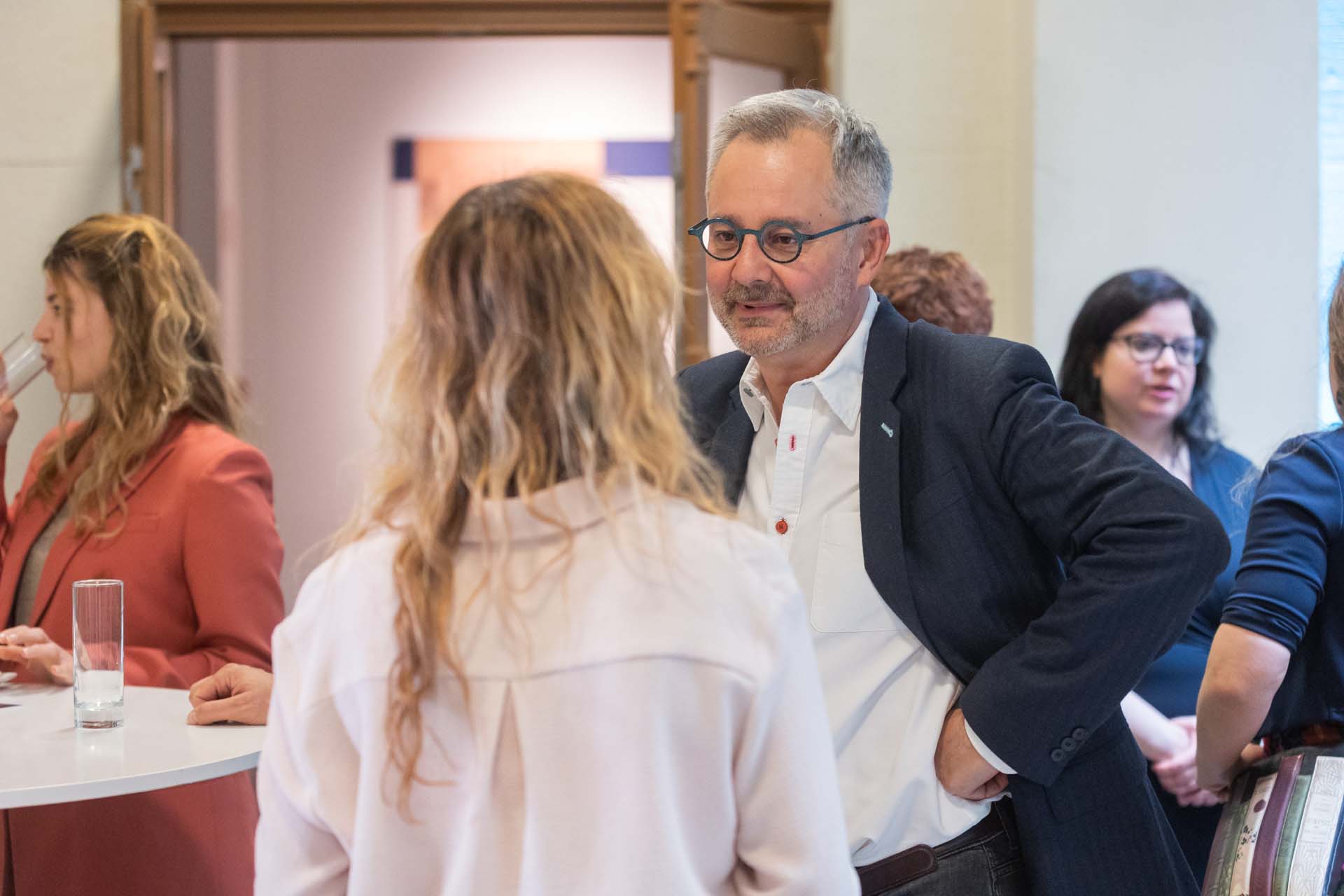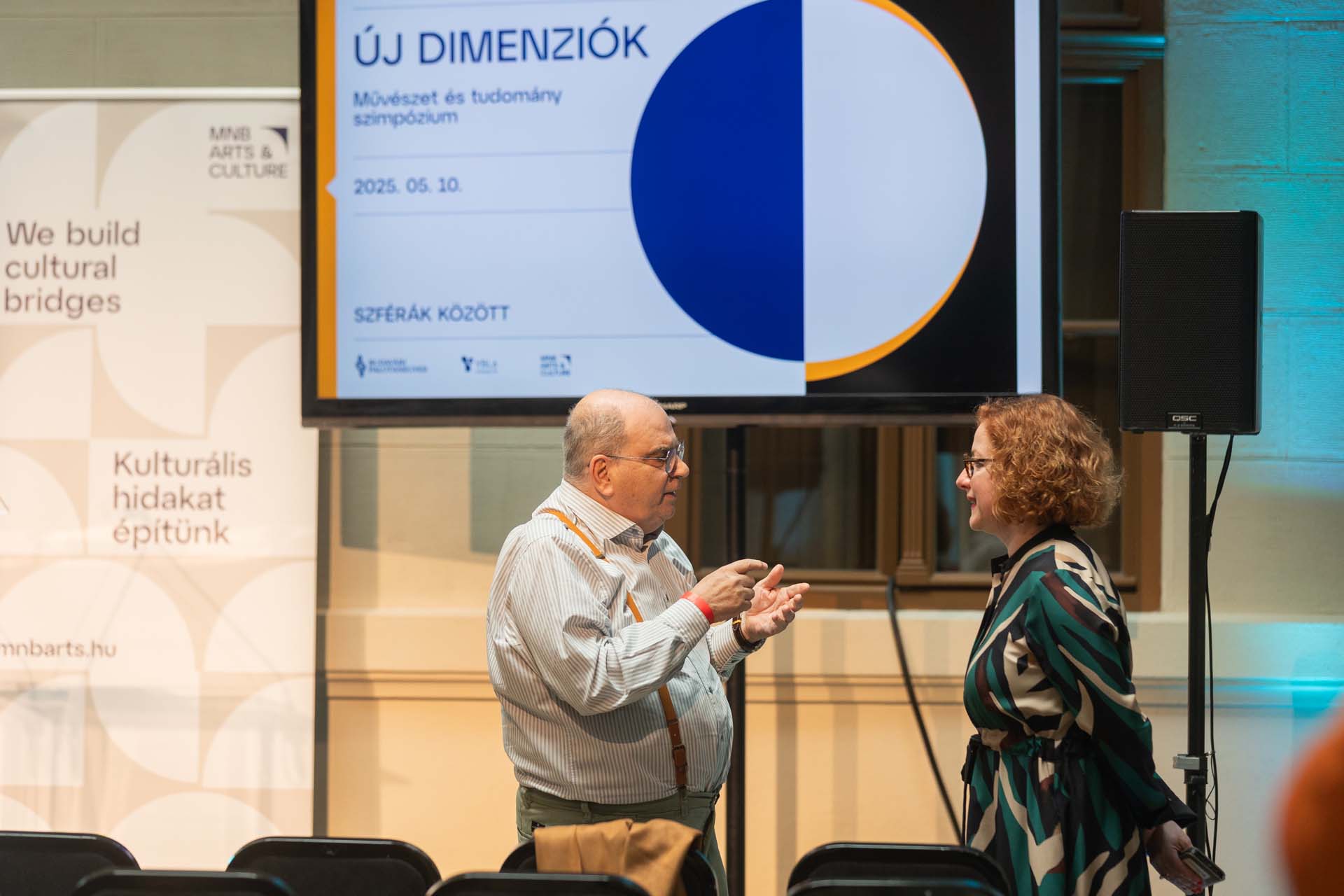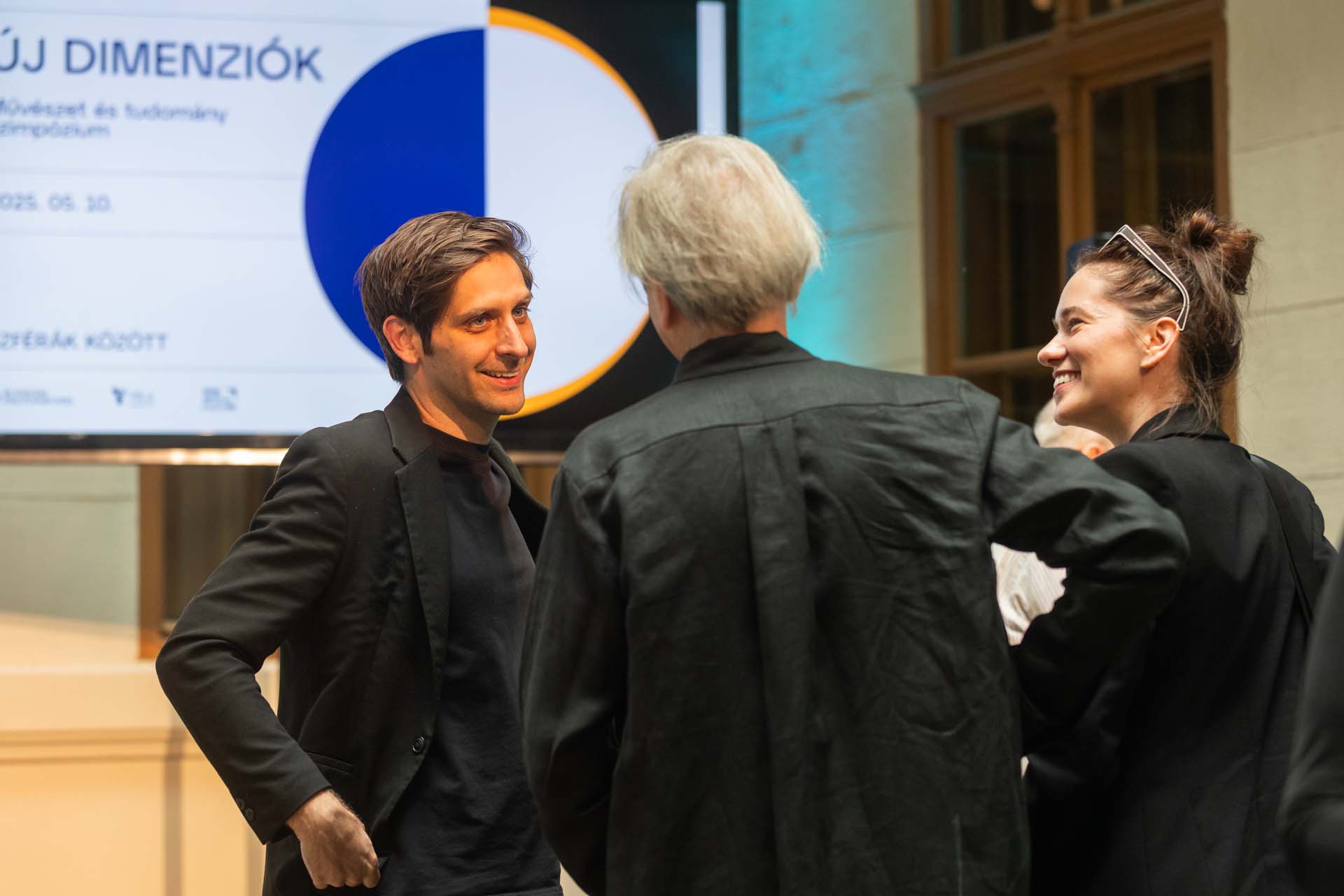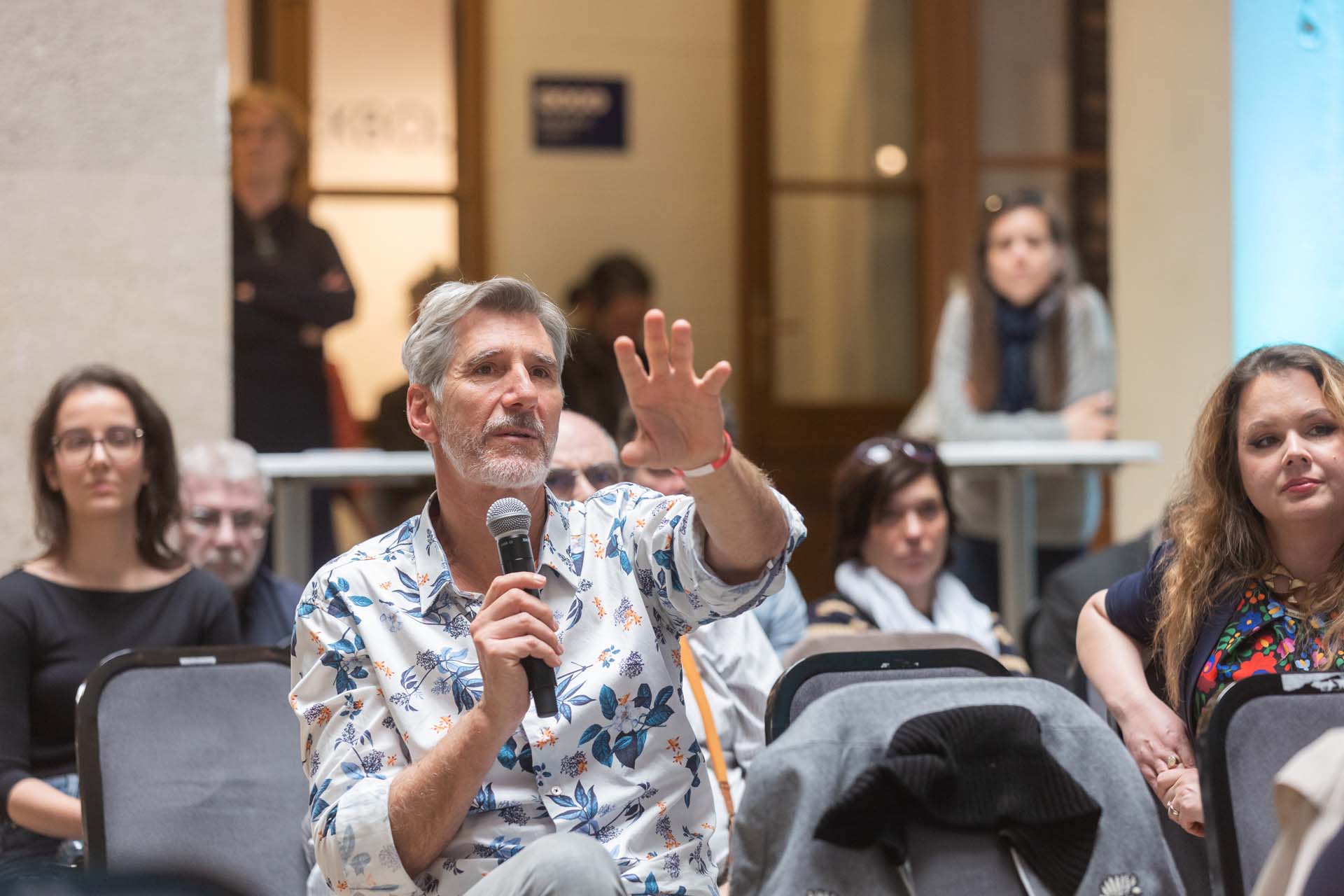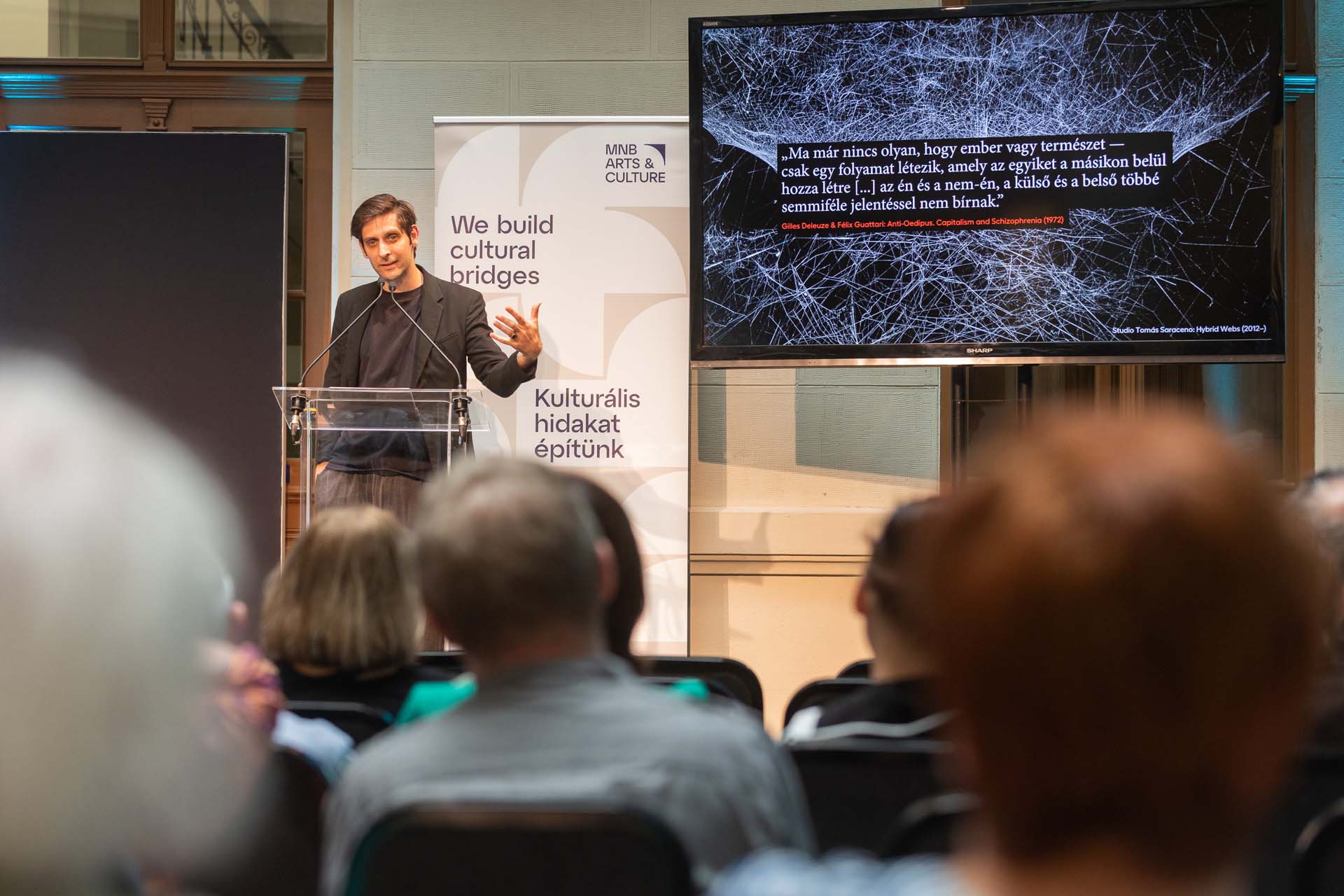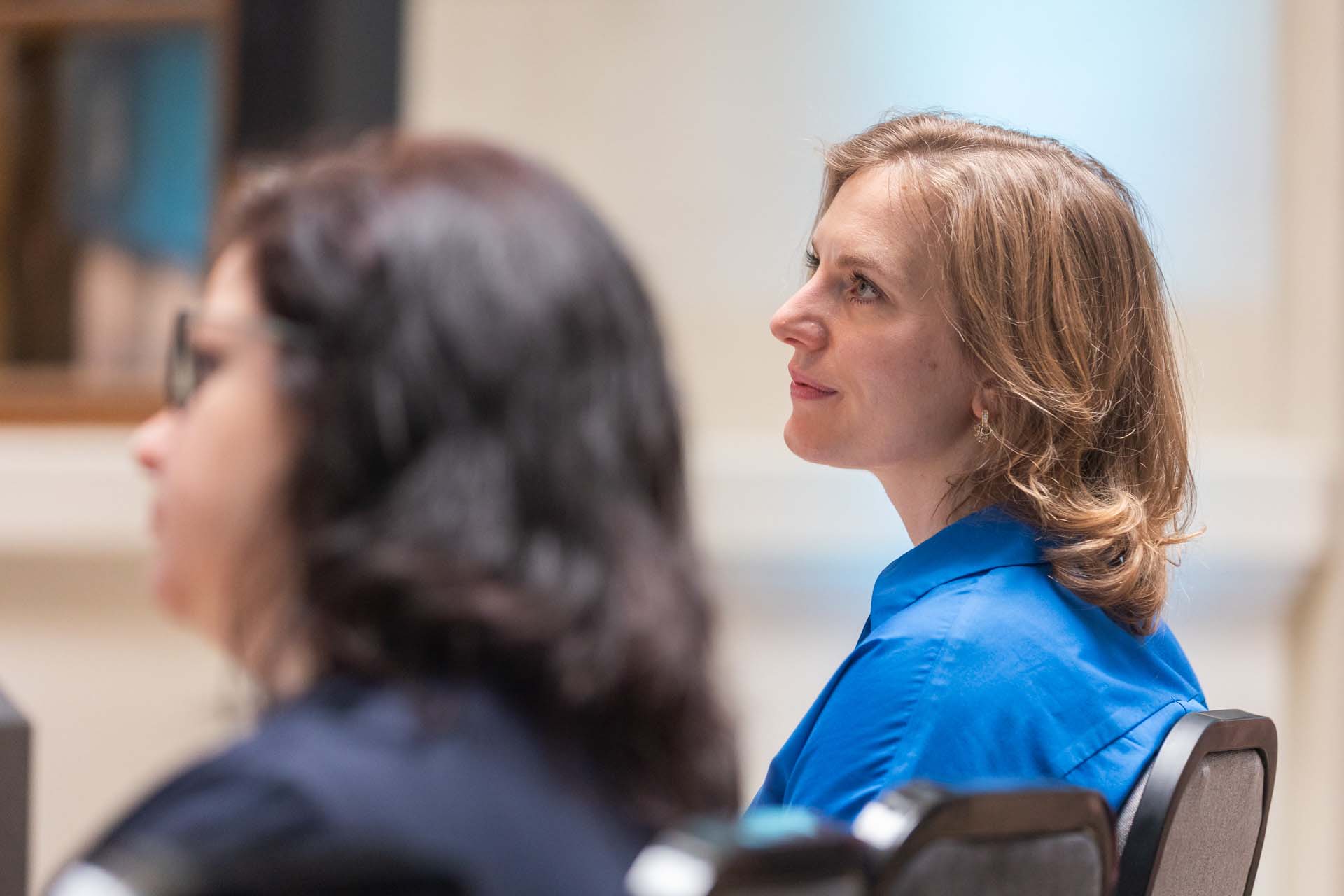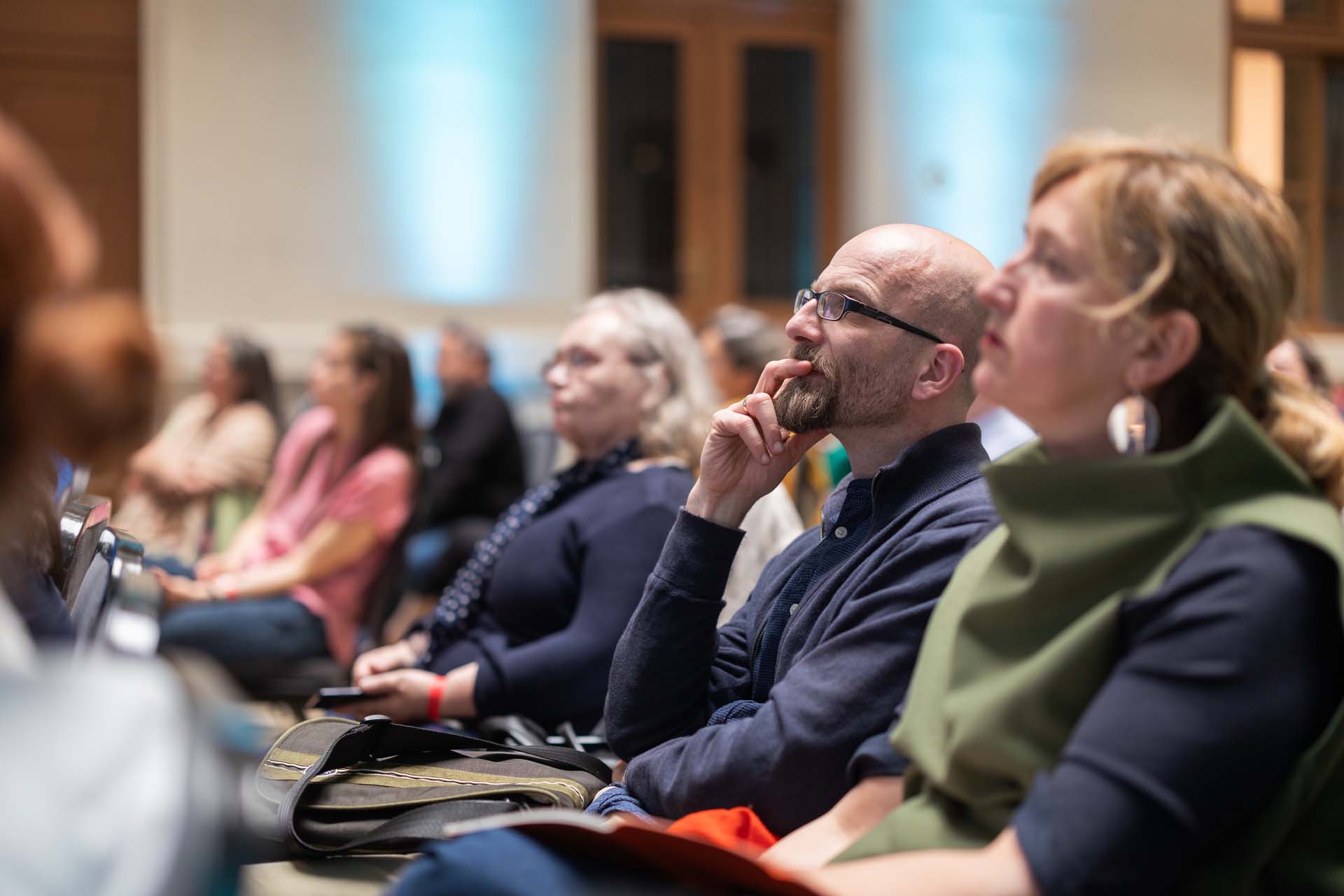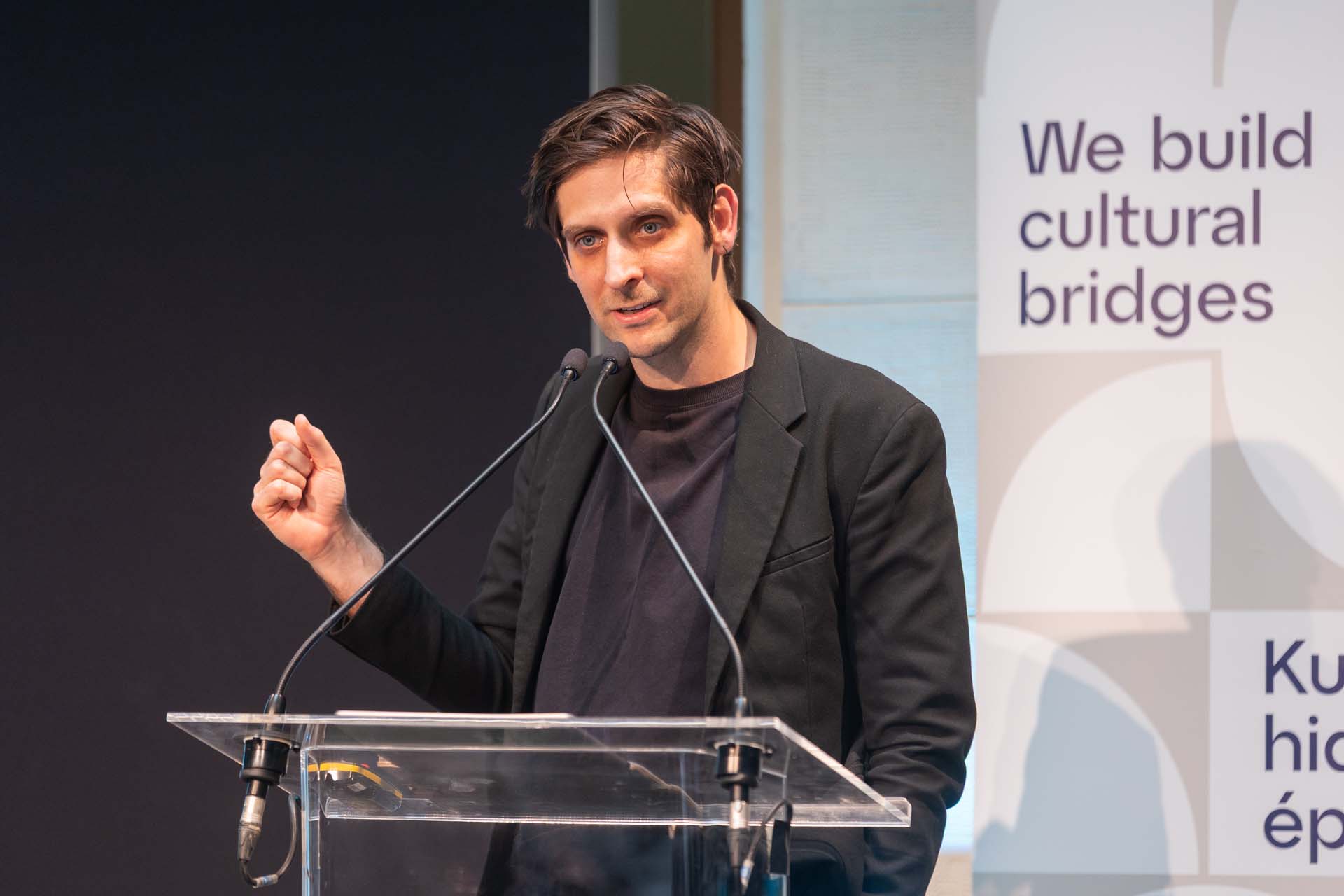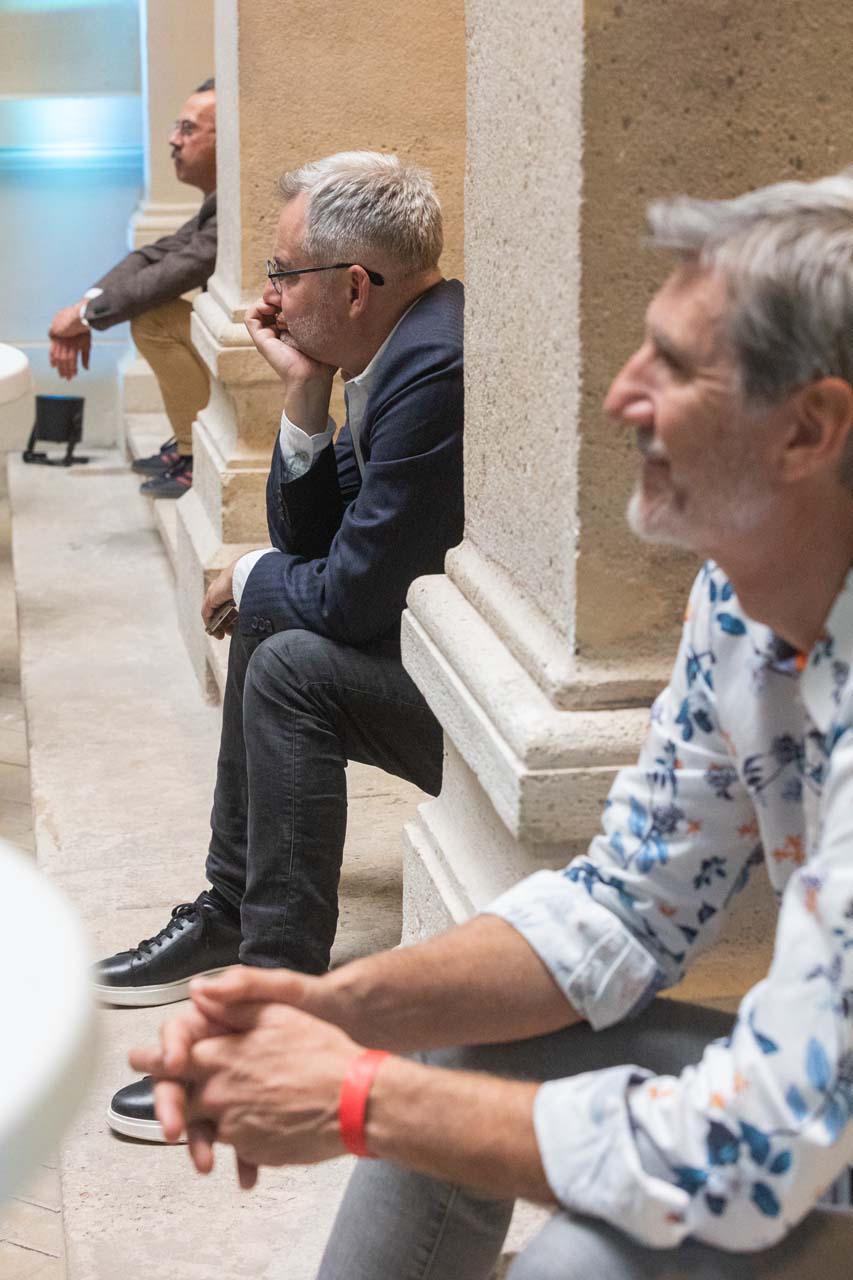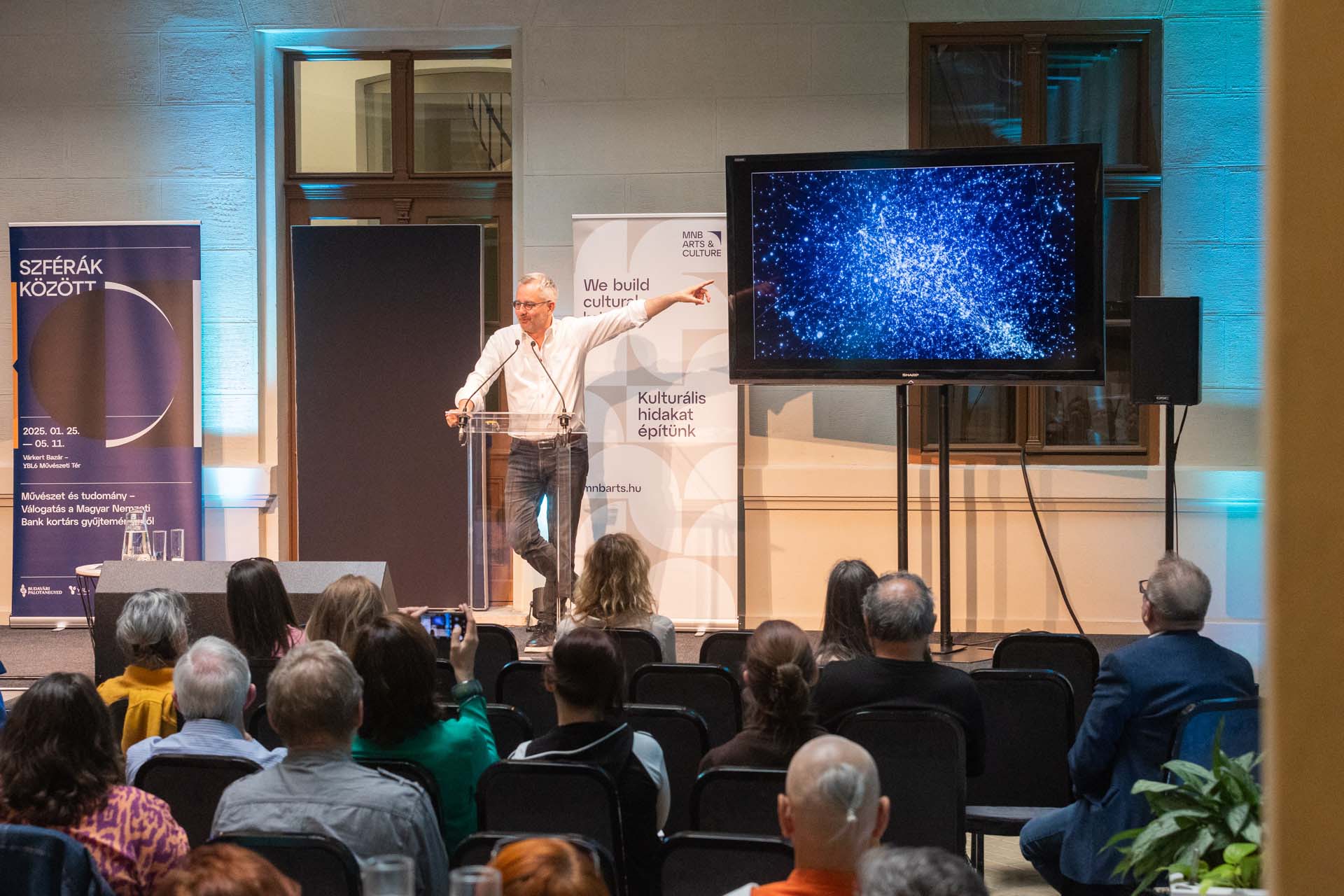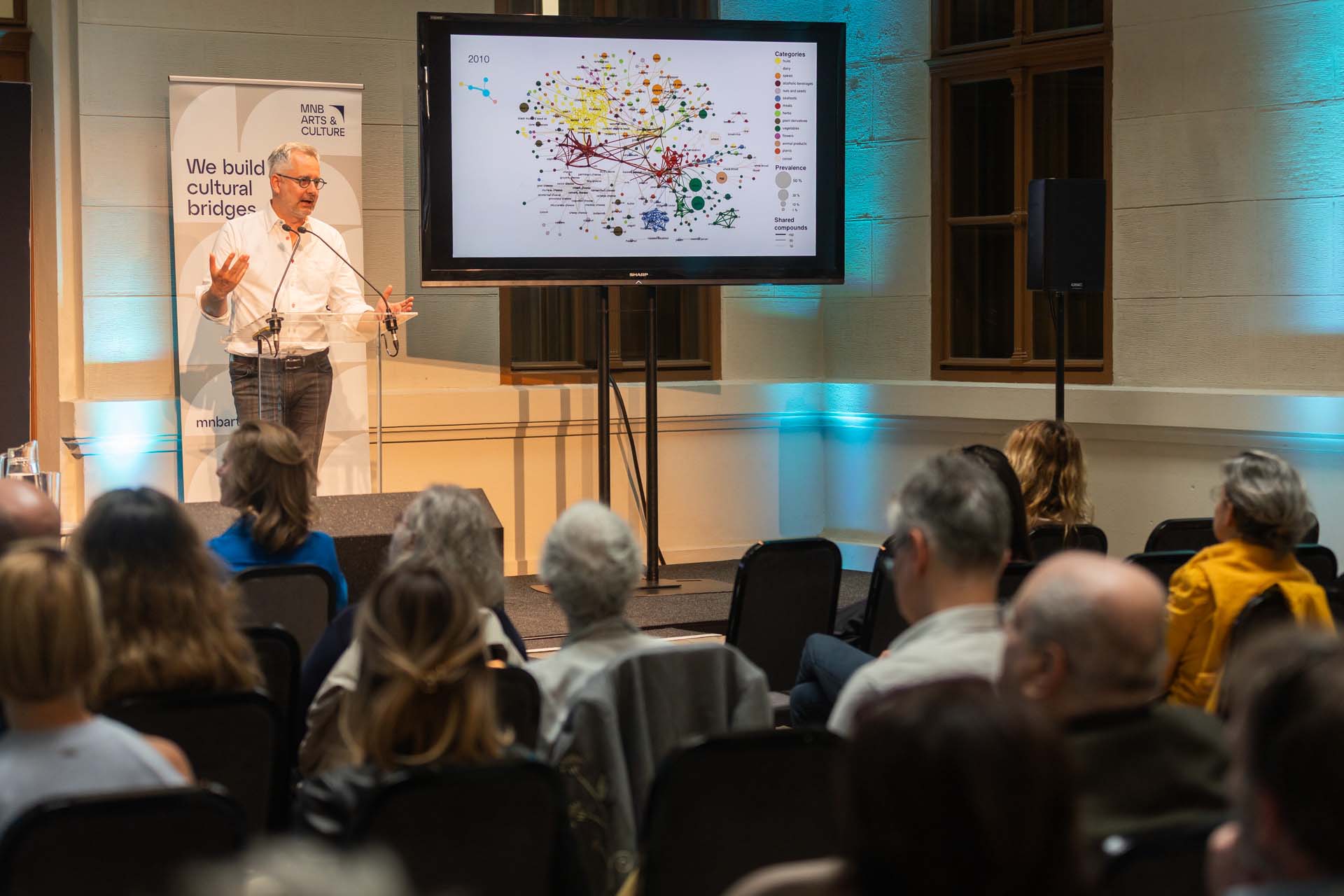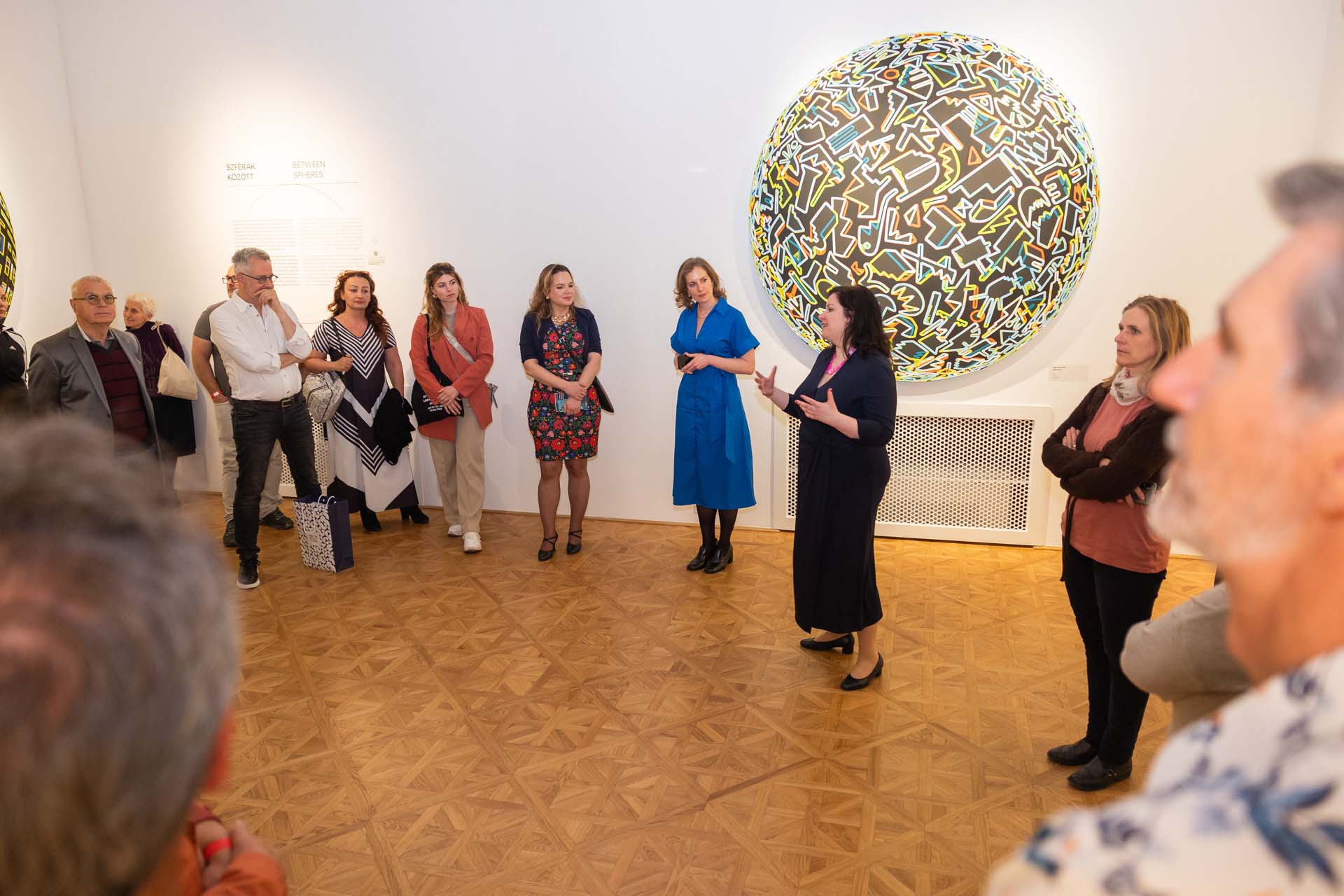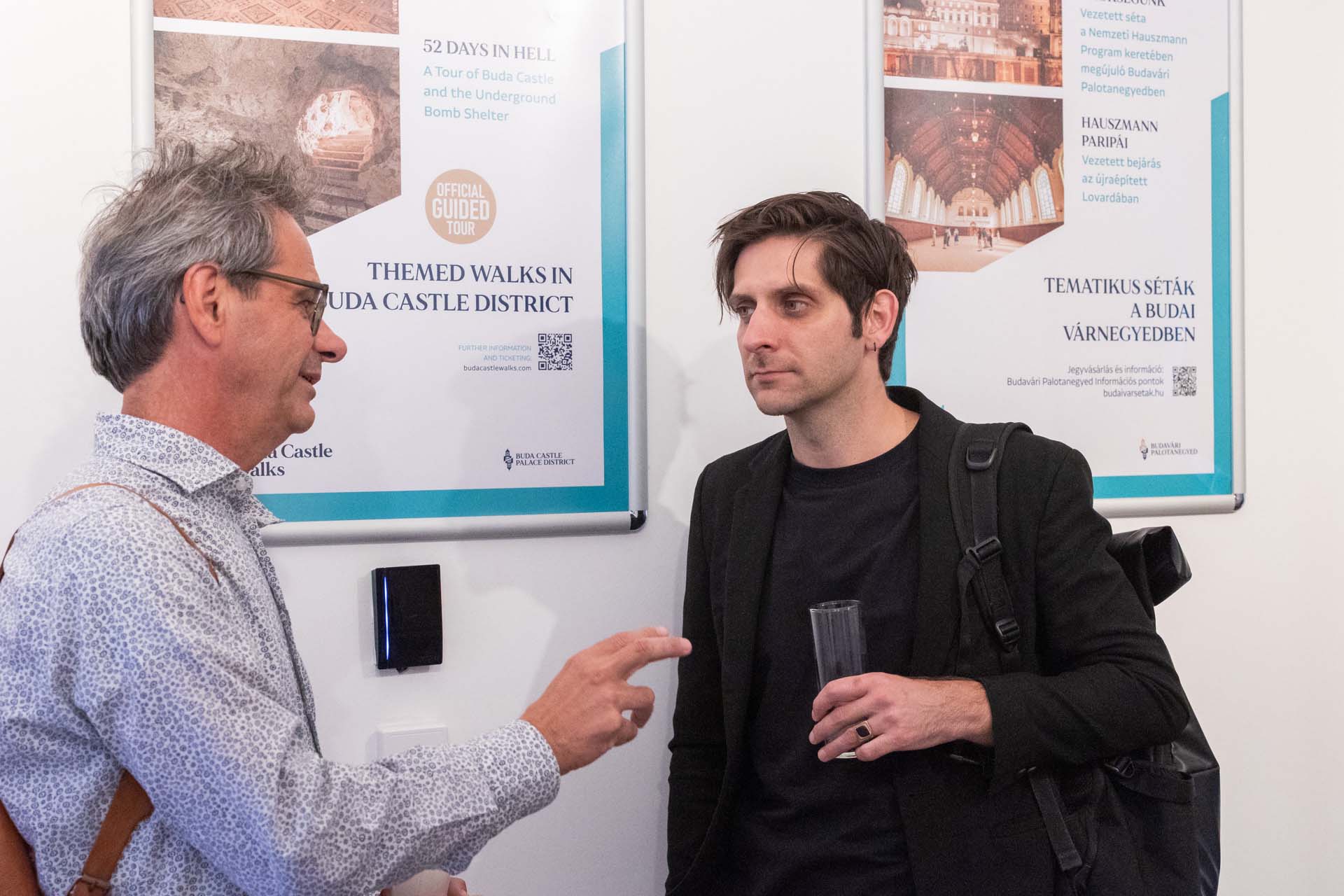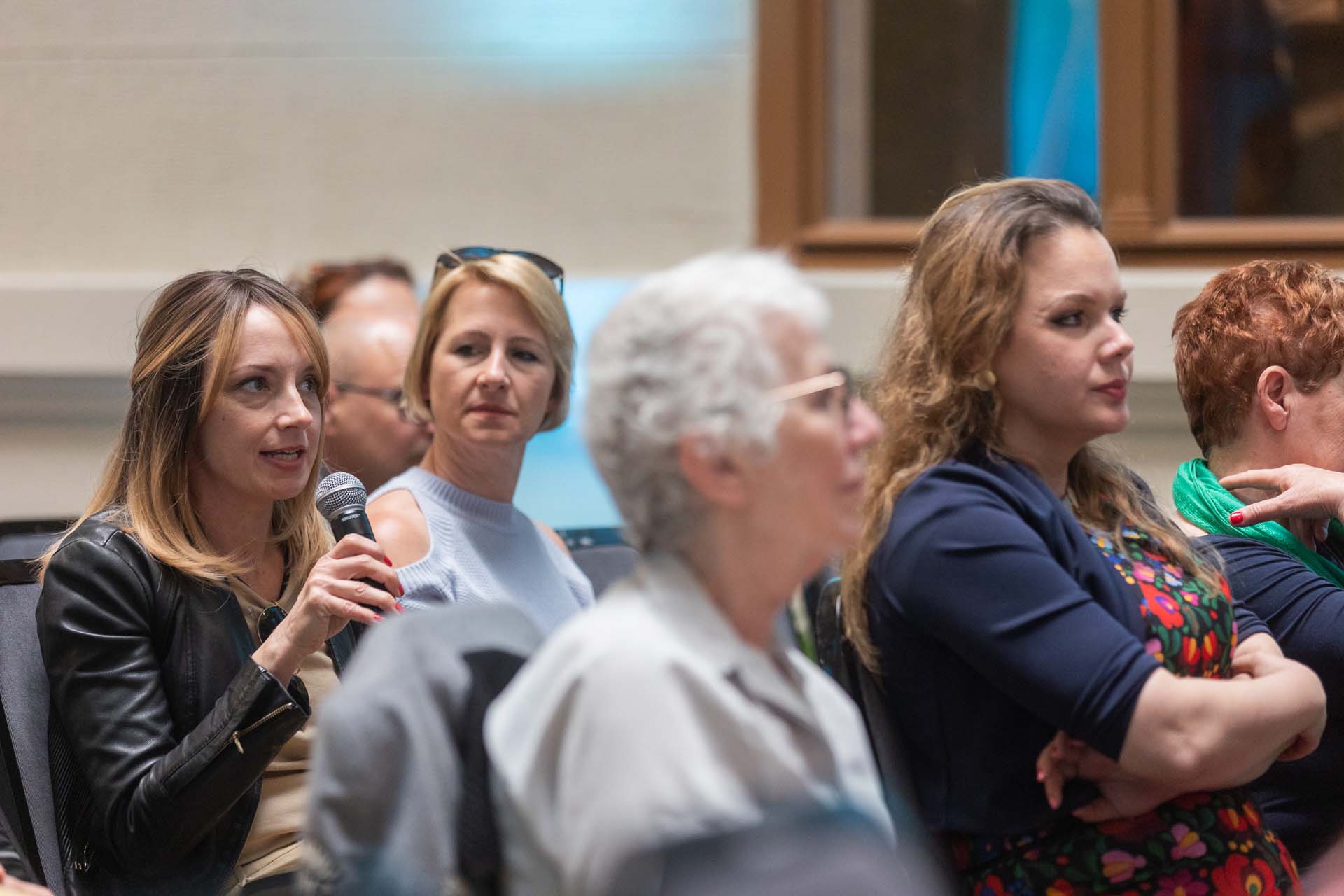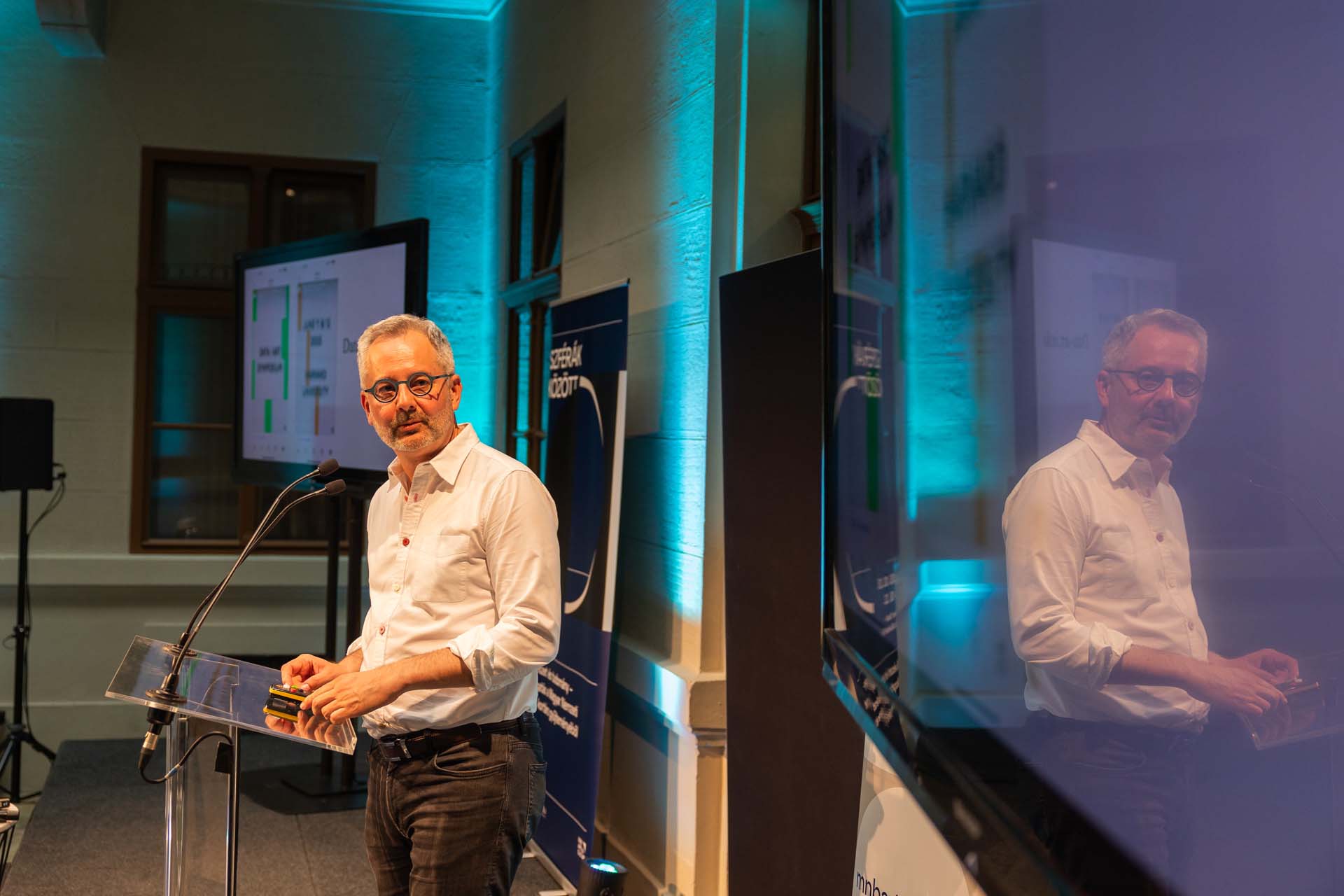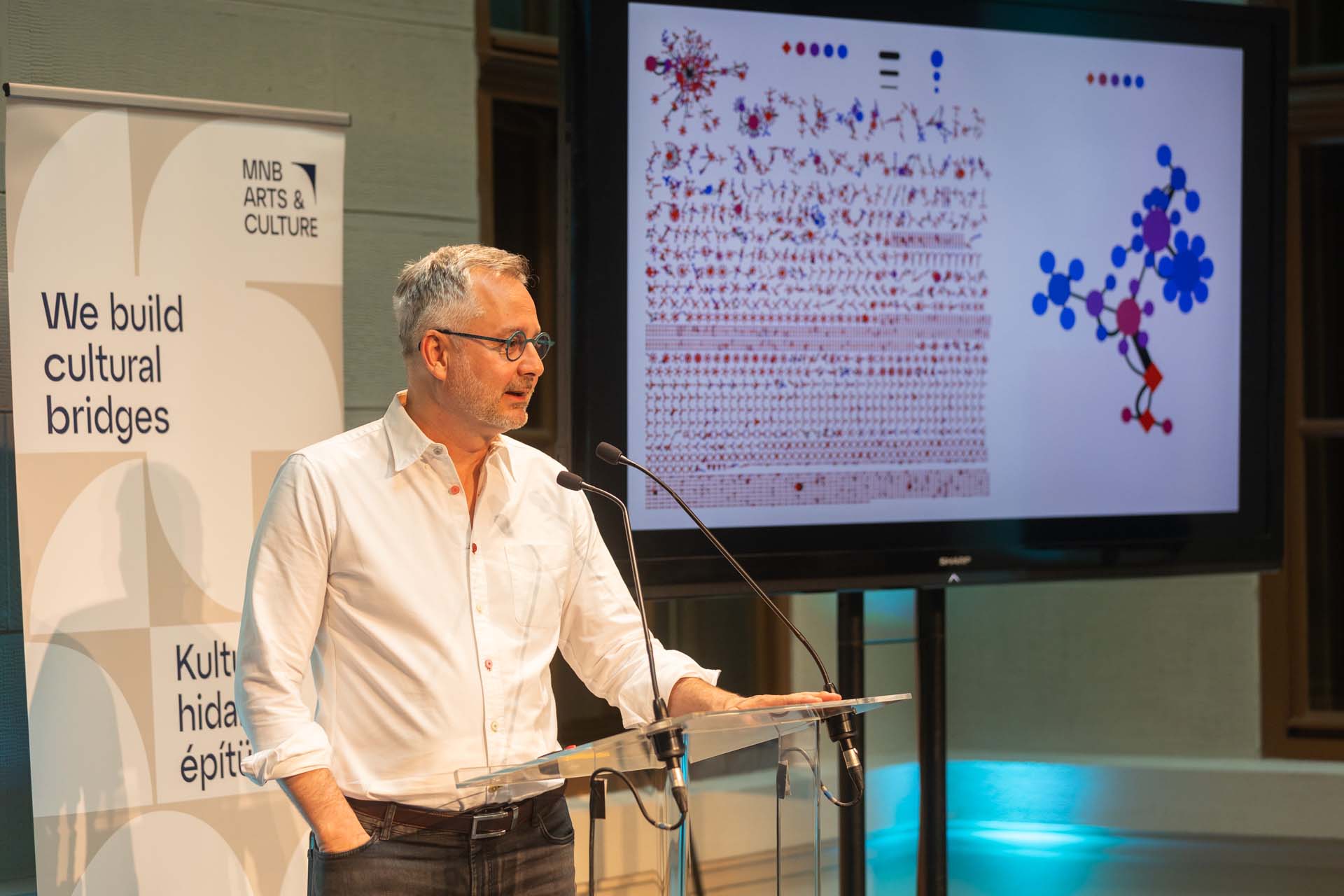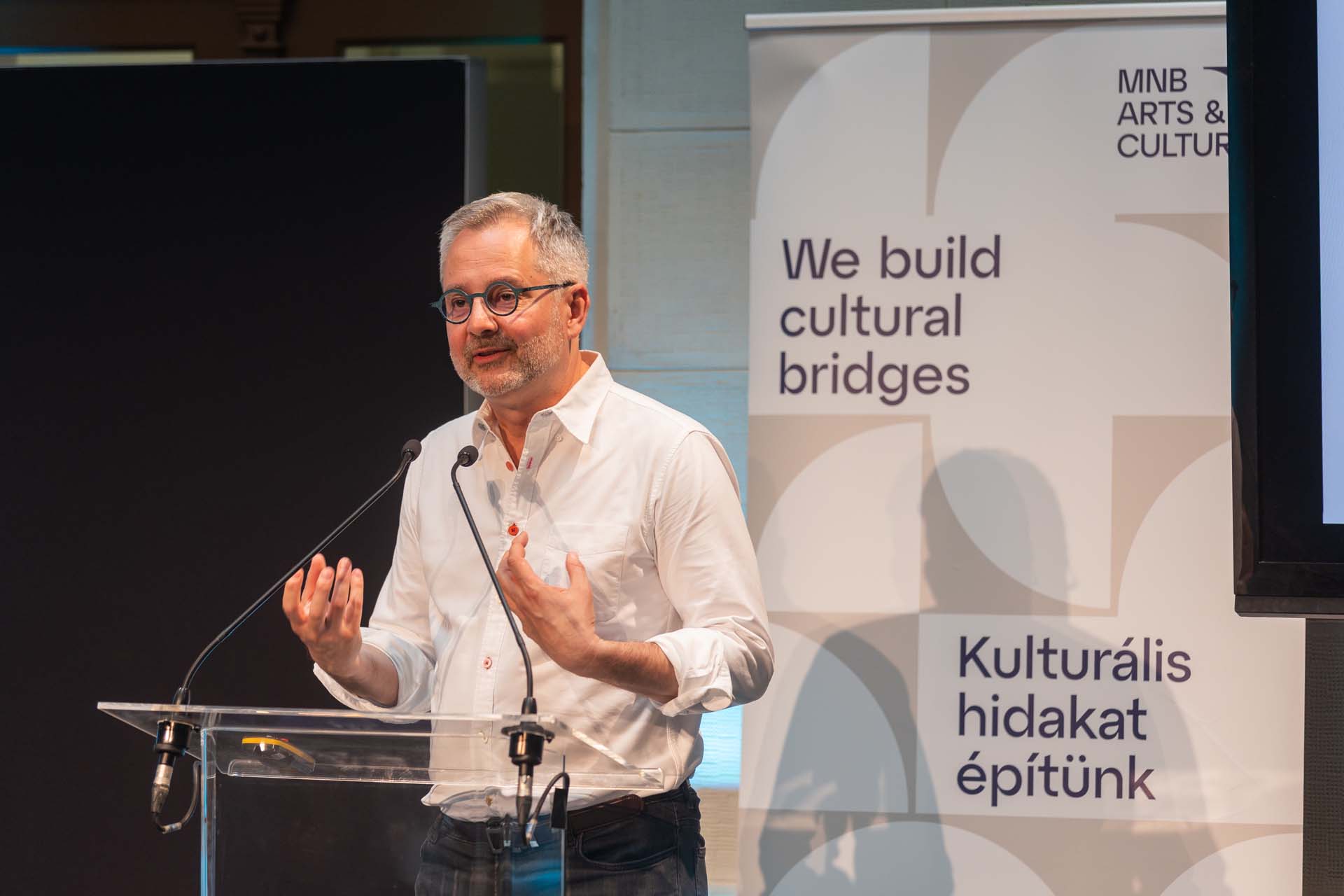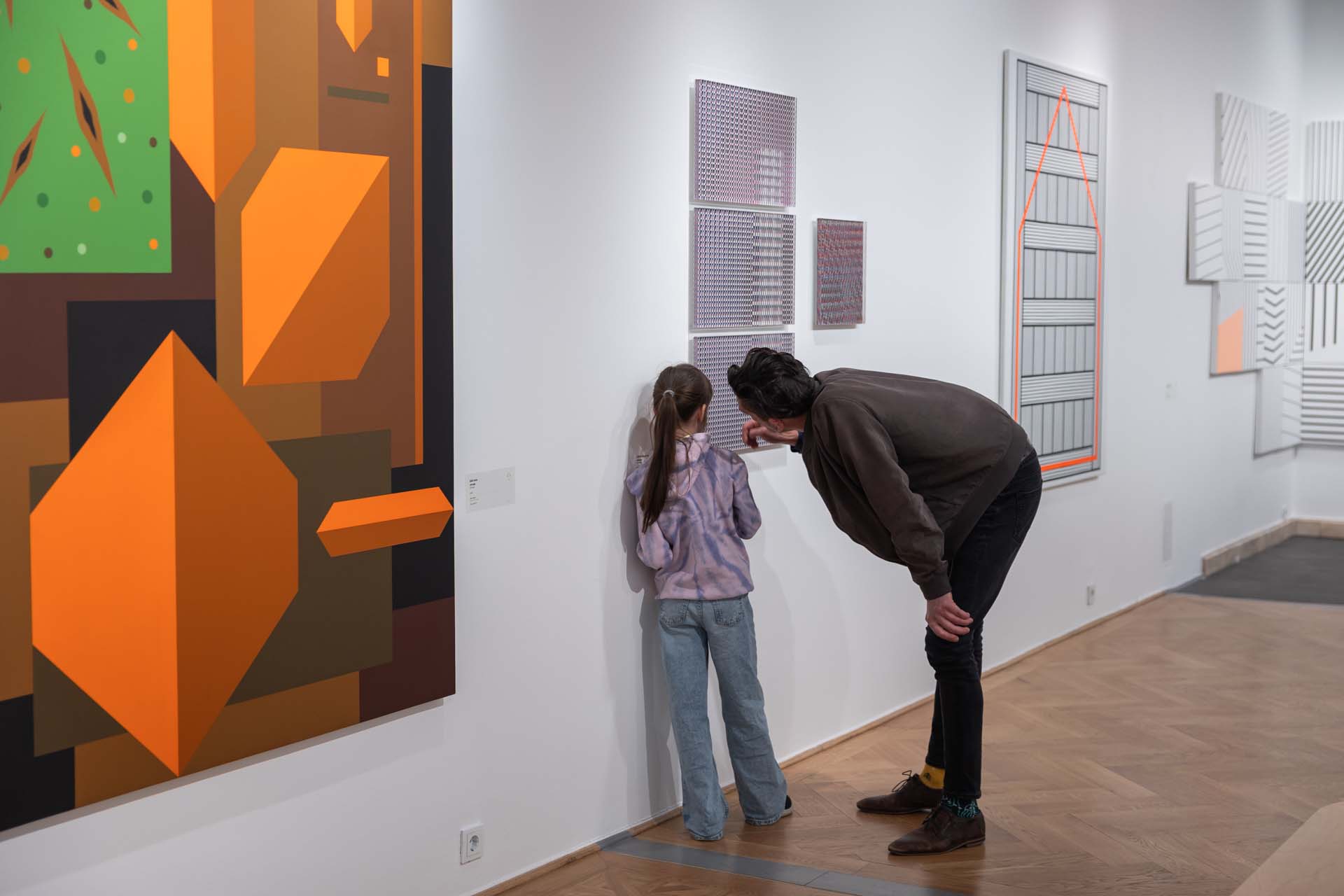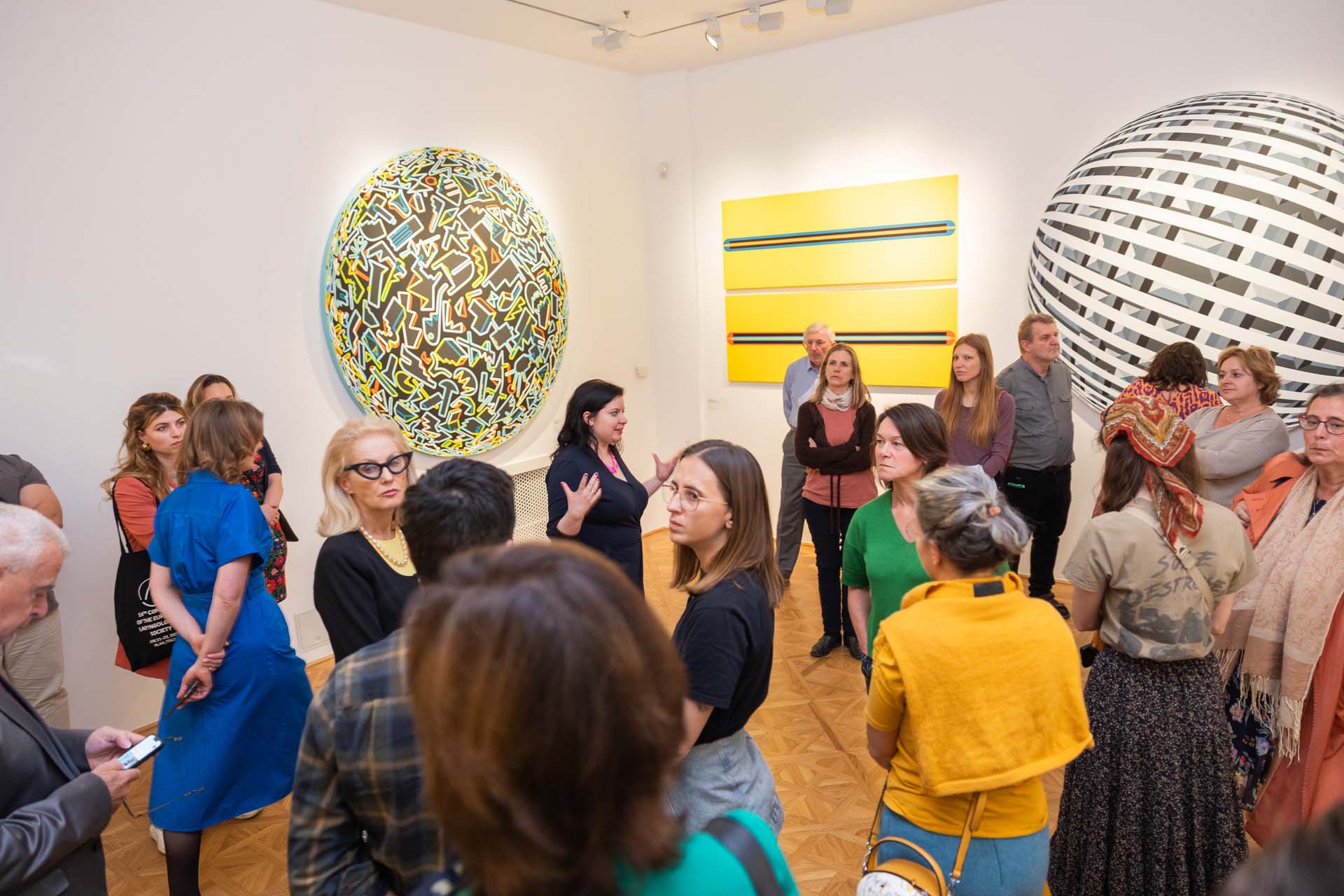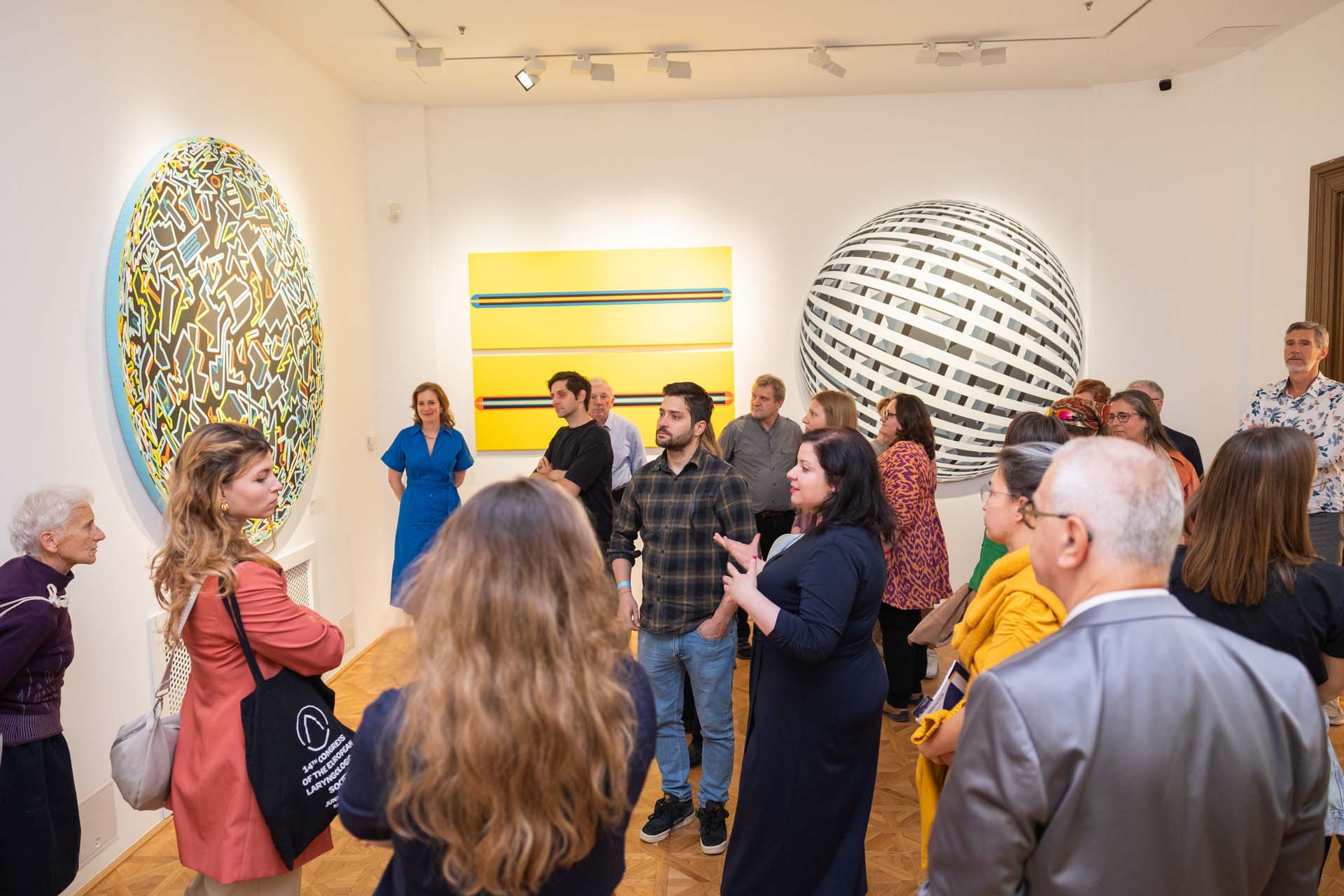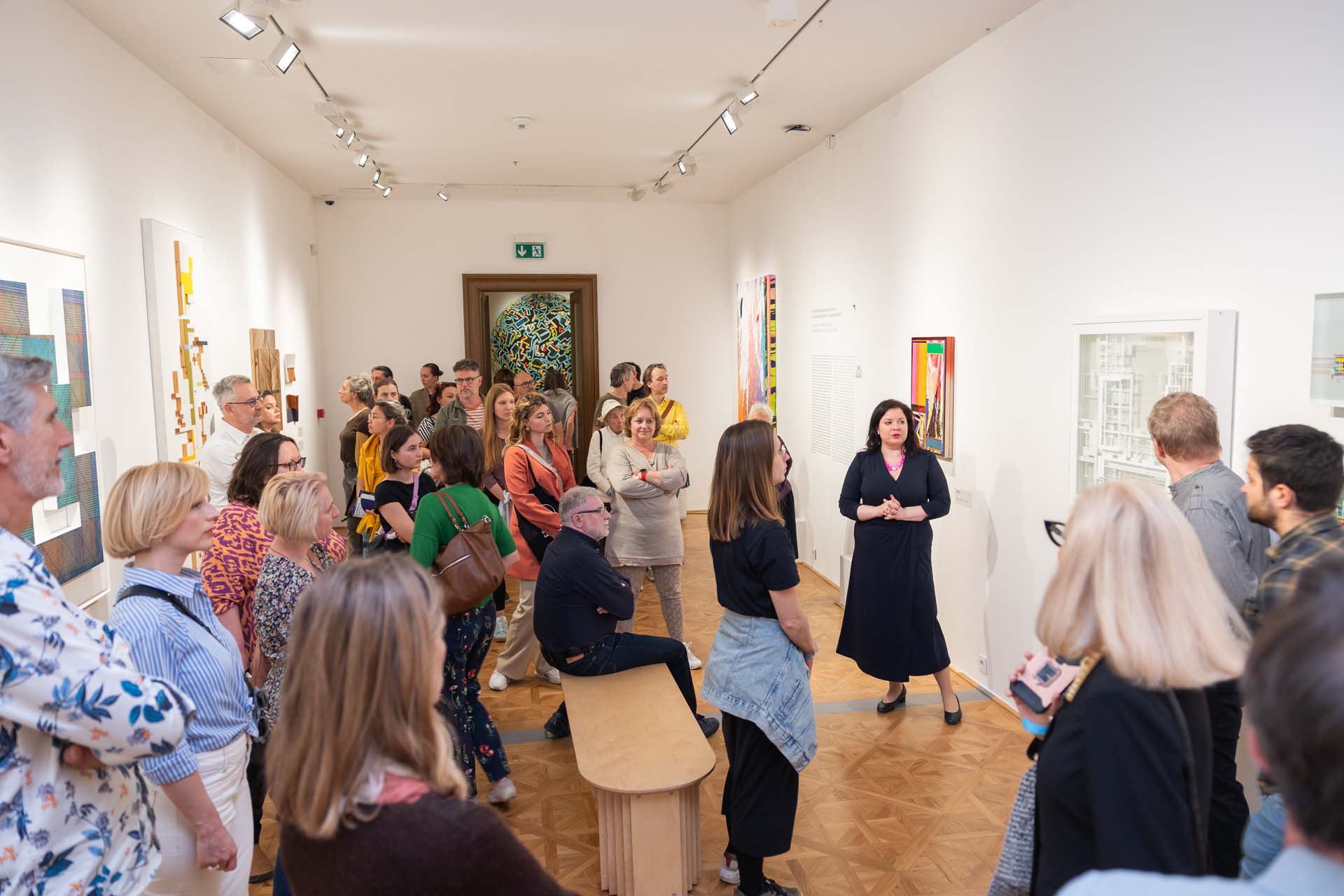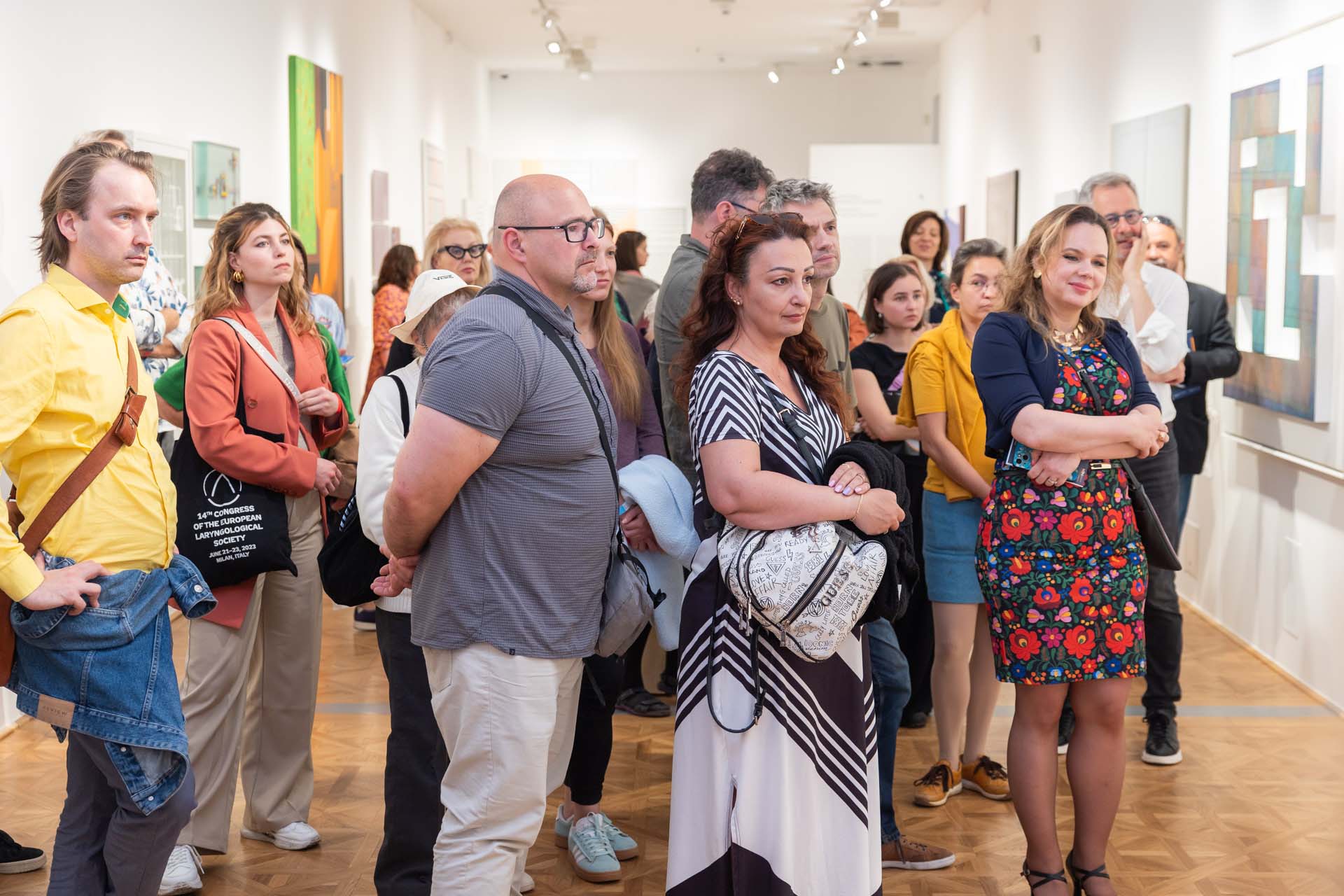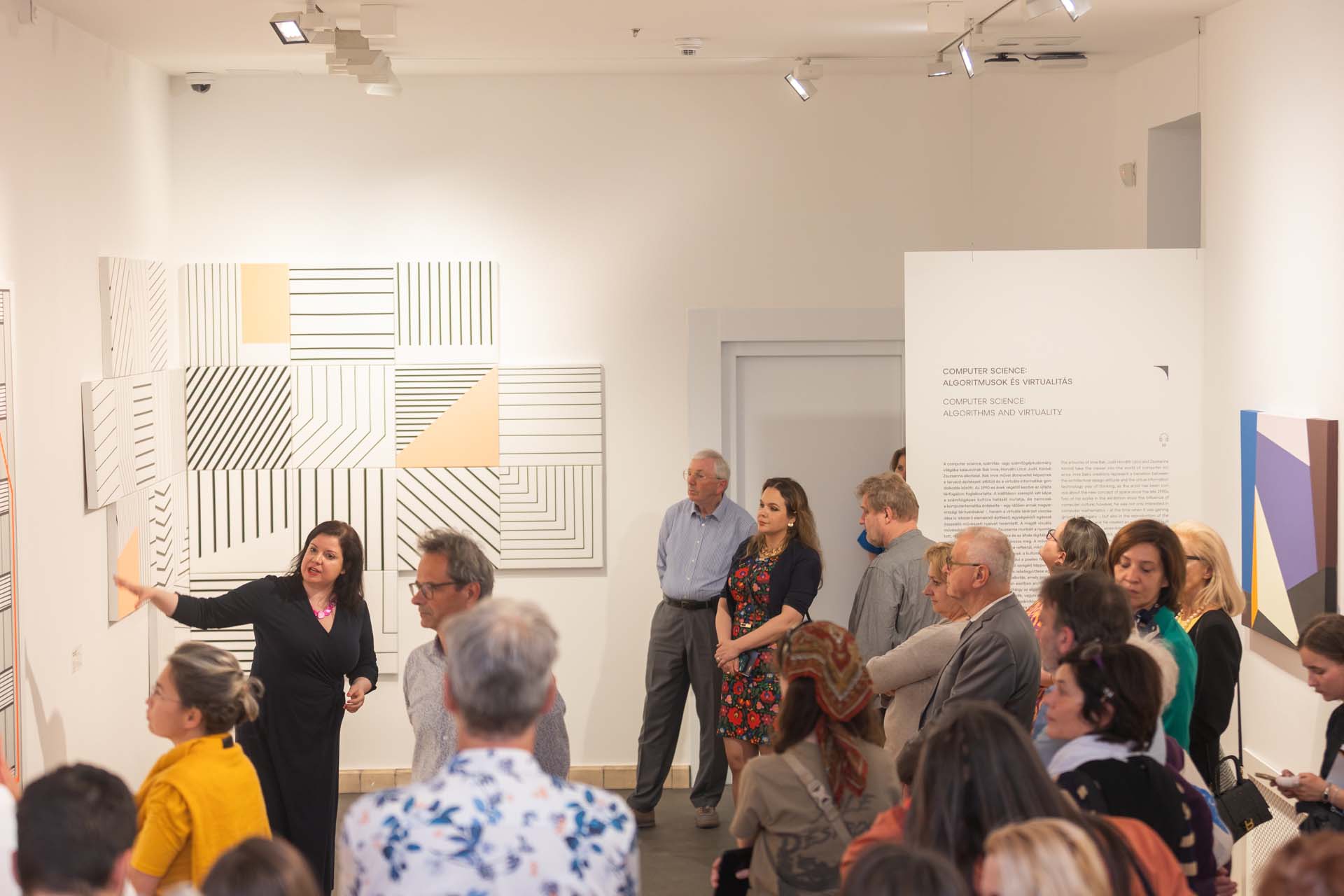On Saturday, May 10, the symposium New Dimensions: Art and Science was held as a public event at the YBL6 Art Space. The symposium served as an accompanying program to the exhibition Between Spheres, which features selections from the Central Bank of Hungary’s contemporary art collection.
The aim of the program was to introduce various scientific disciplines through reflections on specific sections of the exhibition. The topics discussed were mathematics, optics, astrophysics, network science, microbiology, artificial intelligence, and climatology—and their connection to art.
Among the presenters were two world-renowned Hungarian scientists who work abroad: physicist Albert-László Barabási and astrophysicist Sándor A. Szalay. Szalay highlighted the importance of sound waves in the universe and specifically the traces of early waves in the spatial distribution of galaxies. Barabási offered insight into his visual art practice. Since the late 2010s his artworks have been based on network science he calls „dataism” and on a rarely used decorative painting technique called pattern rolling, to which he learned from his grandfather. He also shared the process behind the facade design for the central pavilion of the 19th Venice Architecture Biennale, which analyzes the past fifty years of architectural history.
The exhibition’s curator Flóra Mészáros spoke about the historical context of the work of experimental artists who applied an interdisciplinary approach to science and art. Simultaneously she presented the trajectory of Hungarian artists based in France underlining how innovations of the 1960s, like space exploration and developments in physics, shaped the works of now well-known artists like Victor Vasarely or advances in microbiology and chemistry influenced Simon Hantai and Judit Reigl. She offered a deeper understanding and an overview of the conceptual framework of the exhibition.
Brigitta Iványi-Bitter presented her research on how artificial intelligence affects Hungary’s visual cultural heritage. She emphasized that the current generative AI systems rely on incomplete cultural databases, which may lead to distorted representations and long-term cultural knowledge loss. Iványi urged collection managers, institutions and researchers to contribute to the initiative in order to make our cultural heritage accessible to all.
Alongside Brigitta, Ákos Schneider was our speaker from the Doctoral School of the Moholy-Nagy University of Art and Design. He raised questions about how human-centered thinking influences design and contemporary art trends, and what alternatives lie in biosphere-aligned, non-user-centered design approaches. He showcased internationally recognized practices, such as The Net by Studio Tomás Saraceno, highlighting opportunities for artists, designers, and researchers to rethink their work. These approaches involve optimized complex materials that integrate elements of the biosphere using computational tools for a new kind of user experience.
In addition, participating artist at the exhibition András Mengyán gave a presentation on the role of light in visual art and the main directions of its application. Hydrologist and art collector András Szöllősi-Nagy explored the evolution of algorithmic art from the mid-20th century to its wider dissemination, focusing on the role of Vera Molnar, while also emphasizing the serial artistic practices of Ferenc Lantos and the work of László Csízy.
Miklós Hoffmann and Lóránt Kicsák discussed the “equation of creativity,” reflecting on autonomous creative processes and the impact of machine-generated methods on the relationship between human and artistic experiences. Finally, the event concluded with a curatorial tour of the Between Spheres exhibition led by Flóra Mészáros.
The symposium’s presentations clearly illustrated how scientific and technological issues or phenomena relate to contemporary art. Attendees were invited to ask questions after each talk and were introduced to how fields like astrophysics, algorithms, or artificial intelligence are increasingly integrated into artistic thinking and practice through their examples.
Presentations included:
- Albert-László Barabási: Hidden Patterns: The Visual World of Networks
- Sándor A. Szalay: Sound Waves in the Universe
- Ákos Schneider: Too Human – New Relationships in Contemporary Art and Design
- András Szöllősi-Nagy: Algorithm and Form in 20th-Century Art
- András Mengyán: Light in Art
- Miklós Hoffmann and Lóránt Kicsák: Only Humans are Creative!?
- Brigitta Iványi-Bitter: The Impact of Artificial Intelligence on Hungarian Visual Heritage
- Flóra Mészáros: Hungarian Artists in France on the Path of Natural Sciences
The event was organized by MNB Arts & Culture and Flóra Mészáros, curator of the Between Spheres exhibition. The symposium took place at YBL6 Art Space, at the venue of the exhibition.





